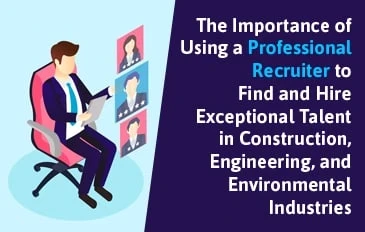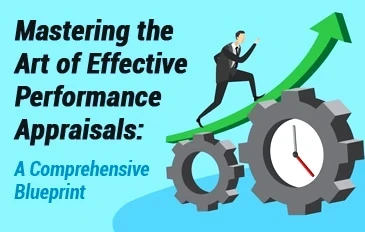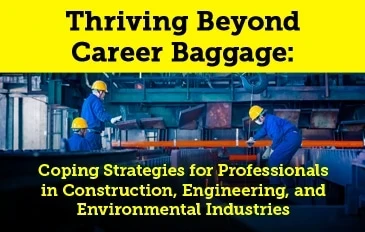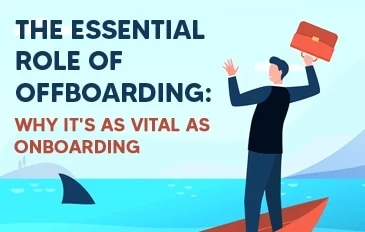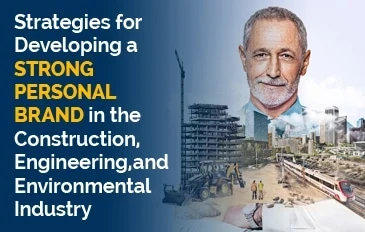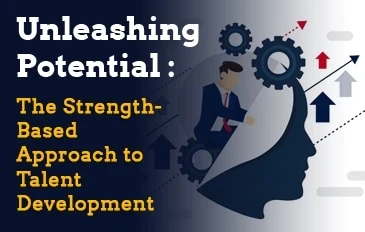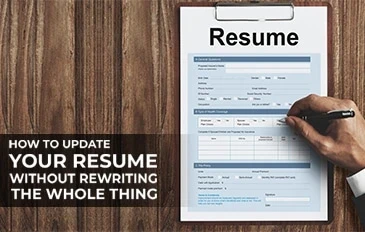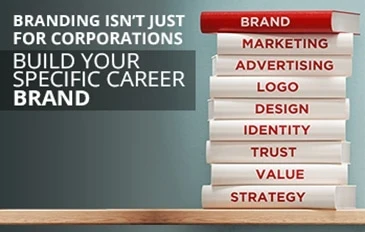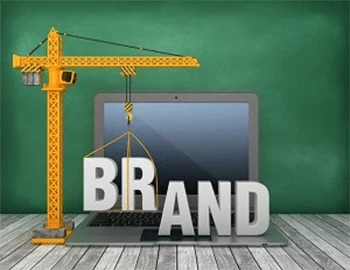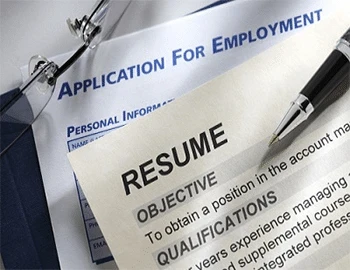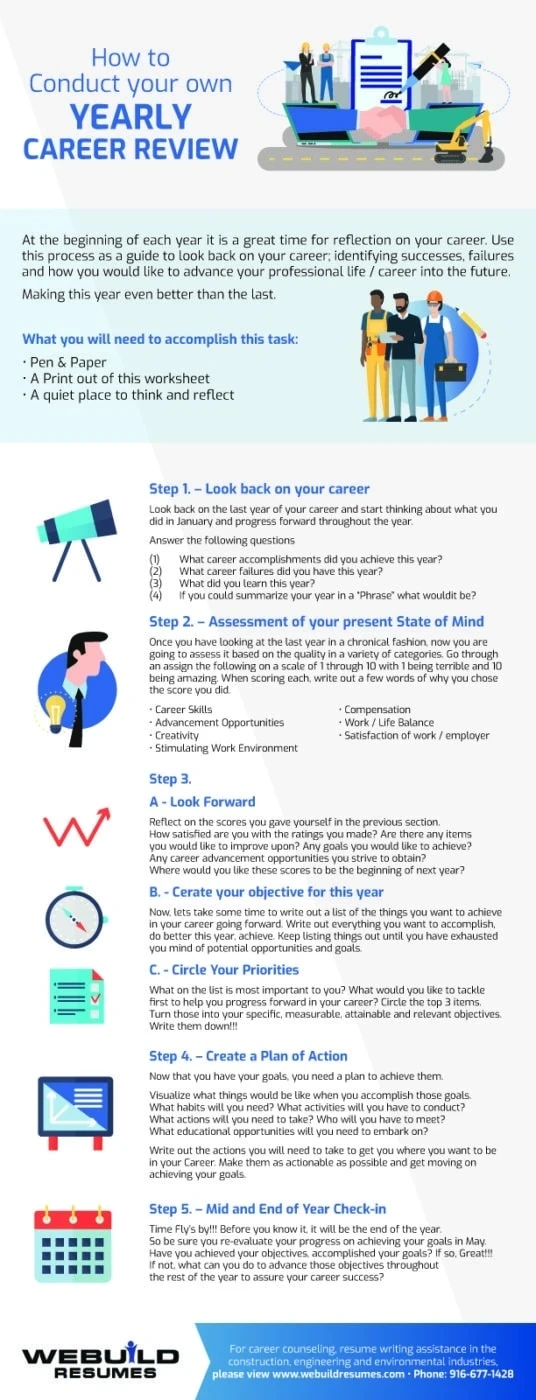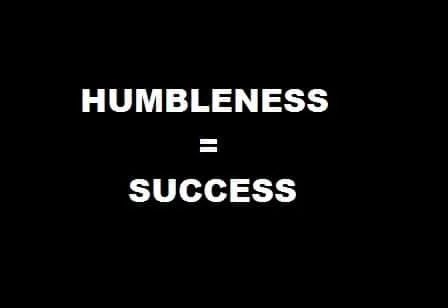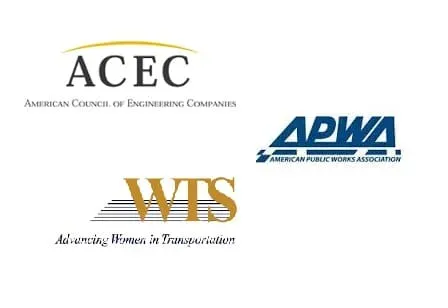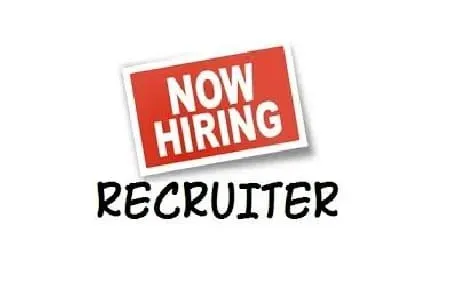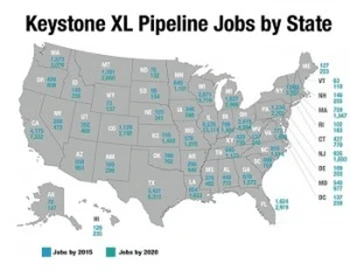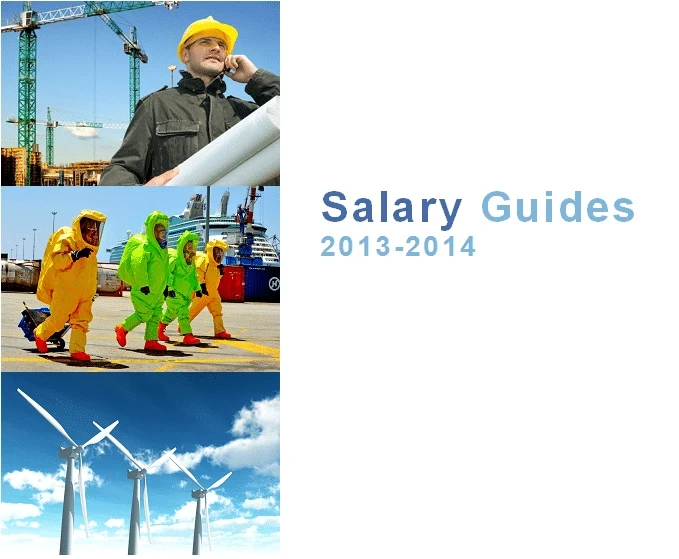Michael DeSafey | Executive Recruiter and HR Professional
Strategies for Retaining Top Engineering Talent: Insights for Staffing Agencies
Retaining top engineering talent is crucial for the success of any organization. Staffing agencies play a pivotal role in connecting companies with skilled professionals, making it imperative for them to understand and implement effective strategies for talent retention.
Understanding the Importance of Retaining Top Engineering Talent:
Before delving into specific strategies, it’s essential to grasp why retaining top engineering talent is so vital. Engineering professionals are the backbone of technological innovation and progress in various industries. Their expertise, creativity, and problem-solving abilities are invaluable assets for companies striving to stay ahead in today’s competitive landscape.
However, attracting and retaining top engineering talent is no easy feat. The demand for skilled engineers often outstrips the supply, leading to a talent war where companies must compete for the best candidates. Staffing agencies play a crucial role in this scenario by helping companies identify and secure top talent. Yet, their job doesn’t end with placement; it extends to ensuring that the talent they place remains satisfied and engaged in their roles.
Now, let’s explore some strategies that staffing agencies can implement to retain top engineering talent effectively:
Establish Strong Relationships:
Building strong relationships with both clients and candidates is fundamental to the success of staffing agencies. For engineering talent, feeling valued and supported by their agency is essential for long-term engagement. Staffing agencies should invest in personalized communication, understanding the unique needs and aspirations of each engineer they represent. By fostering trust and open communication, agencies can create a supportive environment where engineers feel heard and appreciated.
Provide Professional Development Opportunities:
Top engineering talent is continuously seeking opportunities for growth and advancement in their careers. Staffing agencies can differentiate themselves by offering professional development resources and opportunities for skill enhancement. This can include access to online courses, workshops, conferences, and networking events tailored to the engineering field. By investing in their professional growth, staffing agencies demonstrate their commitment to the success and advancement of their talent pool.
Offer Competitive Compensation and Benefits:
Compensation and benefits play a significant role in retaining top engineering talent. Staffing agencies should stay updated on industry standards and market trends to ensure that the compensation packages they offer are competitive. Additionally, they should work closely with clients to negotiate favorable terms for their placed engineers, including salary, bonuses, and benefits such as healthcare, retirement plans, and flexible work arrangements. A comprehensive compensation package not only attracts top talent but also incentivizes them to stay long-term.
Foster a Positive Work Environment:
A positive work environment is essential for employee satisfaction and retention. Staffing agencies should collaborate with clients to ensure that the workplace culture aligns with the values and preferences of their engineering talent. This includes promoting diversity and inclusion, fostering a collaborative atmosphere, and providing opportunities for feedback and recognition. By creating a supportive and inclusive work environment, staffing agencies can enhance employee engagement and loyalty.
Facilitate Meaningful Projects:
Top engineering talent is often motivated by challenging and meaningful projects that allow them to apply their skills and make a tangible impact. Staffing agencies should partner with clients to identify projects that align with the interests and expertise of their engineering talent. Additionally, they should advocate for their engineers to be involved in decision-making processes and project planning, empowering them to contribute their ideas and expertise effectively. By facilitating meaningful projects, staffing agencies can keep their talent engaged and fulfilled in their roles.
Prioritize Work-Life Balance:
Maintaining a healthy work-life balance is essential for employee well-being and productivity. Staffing agencies should advocate for work-life balance on behalf of their engineering talent, negotiating reasonable work hours and promoting policies such as remote work and flexible scheduling. Additionally, they should provide support and resources for managing stress and preventing burnout, ensuring that their talent can thrive both professionally and personally.
Solicit and Act on Feedback:
Feedback is a valuable tool for continuous improvement and employee satisfaction. Staffing agencies should actively solicit feedback from their engineering talent, whether through regular check-ins, surveys, or informal conversations. Additionally, they should take prompt action on feedback received, addressing any concerns or issues raised by their talent and working collaboratively with clients to implement necessary changes. By prioritizing feedback and responsiveness, staffing agencies can demonstrate their commitment to supporting and advocating for their talent.
Retaining top engineering talent is a strategic imperative for staffing agencies looking to maintain a competitive edge in the industry. By implementing the strategies outlined in this article, staffing agencies can effectively support and retain their engineering talent, ensuring client satisfaction and long-term success. By building strong relationships, providing professional development opportunities, offering competitive compensation and benefits, fostering a positive work environment, facilitating meaningful projects, prioritizing work-life balance, and soliciting and acting on feedback, staffing agencies can create a supportive and rewarding experience for their engineering talent, ultimately driving mutual success for both talent and clients alike.
Webuild Staffing Agency is a leading executive search and staffing agency dedicated to the construction, engineering and environmental industries. To learn more please visit: www.webuildstaffing.com
Managing Mental Health and Wellbeing in the Engineering Workforce
Engineering is often associated with innovation, problem-solving, and technical prowess. However, behind the scenes of groundbreaking projects and technological advancements lies a workforce that grapples with its own set of challenges, including mental health and wellbeing. Engineers face demanding work environments, tight deadlines, and high-pressure situations, all of which can take a toll on their mental health if not properly addressed.
The importance of prioritizing mental health and wellbeing in the engineering workforce; the unique stressors that engineers face, the consequences of neglecting mental health, and strategies and resources for fostering a supportive and healthy work environment are all important to address.
Understanding the Challenges
Engineers often work in fast-paced environments where precision and efficiency are paramount. They may face long hours, tight project deadlines, and intense scrutiny of their work. Additionally, the nature of engineering projects can be inherently stressful, especially when dealing with high-risk projects or complex technical problems.
Moreover, the culture within the engineering profession may perpetuate a stigma around mental health issues. There is often an expectation to maintain a stoic demeanor and push through challenges without showing signs of vulnerability. This can lead engineers to downplay their struggles or hesitate to seek help when needed.
Consequences of Neglecting Mental Health
Ignoring mental health concerns within the engineering workforce can have significant consequences, both for individuals and organizations. Untreated mental health issues can lead to decreased productivity, increased absenteeism, and higher turnover rates. Furthermore, poor mental health can impair decision-making abilities and compromise safety on engineering projects, putting both employees and the public at risk.
In addition to the tangible effects on performance and safety, neglecting mental health can have profound personal consequences for engineers. Chronic stress, anxiety, and depression can erode job satisfaction and overall quality of life. Left unchecked, these issues can escalate into more severe mental health disorders and have long-term repercussions on individuals’ health and wellbeing.
Strategies for Promoting Mental Health and Wellbeing
Creating a supportive work environment that prioritizes mental health requires a multifaceted approach. Here are some strategies that engineering organizations can implement to promote mental health and wellbeing among their workforce:
-
Raise Awareness: Education is key to reducing the stigma surrounding mental health. Employers can offer training sessions or workshops to increase awareness of common mental health issues, signs, and symptoms, as well as resources for seeking help.
-
Promote Work-Life Balance: Encourage employees to maintain a healthy balance between work and personal life by setting clear boundaries around work hours, providing flexible scheduling options, and promoting the use of vacation time.
-
Offer Employee Assistance Programs (EAPs): EAPs provide confidential counseling and support services to employees facing personal or work-related challenges. By offering access to mental health professionals, organizations can help employees address issues before they escalate.
-
Foster a Culture of Support: Create a workplace culture where employees feel comfortable discussing mental health openly and seeking support from colleagues and supervisors. Encourage regular check-ins and provide avenues for employees to share their concerns without fear of judgment.
-
Provide Resources and Benefits: Offer resources such as access to mental health hotlines, online therapy platforms, or mindfulness apps. Consider expanding healthcare benefits to include coverage for mental health services.
-
Prioritize Psychological Safety: Psychological safety refers to an environment where individuals feel safe to take interpersonal risks, such as speaking up about concerns or admitting mistakes, without fear of retaliation or judgment. Cultivate a culture of trust and openness where employees feel valued and respected.
-
Encourage Self-Care: Promote self-care practices such as regular exercise, mindfulness meditation, and stress management techniques. Consider offering wellness programs or workshops to teach employees how to prioritize their mental and physical health.
-
Provide Managerial Training: Train managers and supervisors to recognize signs of distress in their team members and to respond empathetically and effectively. Equip them with the skills to support employees in managing workload pressures and navigating challenging situations.
-
Normalize Help-Seeking Behavior: Lead by example by normalizing help-seeking behavior among leadership and senior staff. Encourage executives and managers to share their own experiences with mental health challenges and how they sought support.
-
Evaluate and Adapt: Continuously evaluate the effectiveness of mental health initiatives within the organization and solicit feedback from employees. Adapt policies and programs based on feedback and evolving best practices in mental health management.
Prioritizing mental health and wellbeing in the engineering workforce is not just a moral imperative but also a strategic investment in organizational success. By addressing the unique stressors faced by engineers and fostering a supportive work environment, organizations can promote employee resilience, enhance job satisfaction, and improve overall productivity and safety.
It’s time for the engineering profession to recognize that mental health matters and to take proactive steps to support the wellbeing of its workforce. Together, we can cultivate a culture of care and compassion where engineers thrive, both personally and professionally.
Webuild Staffing Agency is a leading executive search and staffing agency dedicated to the construction, engineering and environmental industries. To learn more please visit: www.webuildstaffing.com
Understanding the Crucial Role of Cultural Fit in Engineering Staffing Placements
Finding the right engineering talent goes beyond merely matching skills with job requirements. While technical prowess is undoubtedly important, a factor often overlooked yet equally vital is cultural fit. The importance of cultural fit in engineering staffing placements cannot be overstated, as it directly impacts team dynamics, productivity, employee satisfaction, and ultimately, the success of projects and organizations as a whole.
Understanding Cultural Fit
Cultural fit refers to the alignment between an individual’s values, behaviors, and work style with those of the organization they are joining. It encompasses shared beliefs, attitudes, and norms that define the work environment and organizational culture. In the context of engineering staffing, cultural fit involves assessing how well a candidate’s professional identity aligns with the values, goals, and working methods of the engineering team and the broader organization.
The Impact of Cultural Fit
-
Team Dynamics: Engineering is often a collaborative endeavor, requiring seamless coordination among team members. When individuals share common values and work styles, communication flows more smoothly, conflicts are reduced, and teams can achieve higher levels of synergy and productivity.
-
Employee Satisfaction and Retention: Employees who feel like they belong and are valued within their organization are more likely to be satisfied with their jobs and remain loyal in the long term. A positive cultural fit fosters a sense of belonging, leading to higher job satisfaction, lower turnover rates, and ultimately, cost savings for the organization.
-
Innovation and Creativity: Diverse perspectives are crucial for innovation. However, cultural fit does not mean homogeneity; rather, it implies a shared vision and mutual respect for differences. When team members feel comfortable expressing their ideas and challenging the status quo, it cultivates an environment conducive to creativity and innovation.
-
Organizational Performance: Cultural fit influences overall organizational performance. A cohesive team aligned with the organization’s values and objectives is better equipped to tackle challenges, adapt to changes, and drive success. In contrast, a lack of cultural fit can lead to friction, inefficiencies, and ultimately, project failures.
Assessing Cultural Fit in Engineering Staffing
-
Define Organizational Culture: Before assessing cultural fit, organizations must first define their own culture. This involves identifying core values, norms, and behaviors that characterize the workplace environment. Understanding what makes the organization unique lays the foundation for evaluating cultural fit in potential hires.
-
Behavioral Interviewing: Traditional interviews often focus on technical skills and experience. However, incorporating behavioral interviewing techniques can provide insights into a candidate’s cultural fit. By asking questions that probe into past experiences, teamwork, problem-solving approaches, and values alignment, interviewers can gauge how well candidates would integrate into the existing team and culture.
-
Assessment Tools: Various assessment tools and personality tests can aid in evaluating cultural fit. These tools provide quantitative data on aspects such as communication style, work preferences, and team roles, which can complement qualitative assessments during the hiring process.
-
Trial Periods and Cultural Onboarding: Offering trial periods or project-based engagements allows both parties to assess cultural fit in a real-world setting. Additionally, investing in cultural onboarding programs ensures that new hires are introduced to the organization’s values, norms, and expectations from the outset, facilitating smoother integration into the team.
Overcoming Challenges in Cultural Fit Assessment
-
Biases and Assumptions: Unconscious biases can influence perceptions of cultural fit, leading to overlooking qualified candidates from diverse backgrounds. To mitigate bias, hiring teams must undergo training on recognizing and addressing biases throughout the recruitment process.
-
Balancing Diversity and Fit: While cultural fit is important, it should not be used as a pretext for hiring individuals who conform to a single mold. Embracing diversity enriches teams and fosters innovation. Organizations must strike a balance between cultural fit and diversity to build inclusive and high-performing engineering teams.
-
Evolution of Culture: Organizational culture is not static; it evolves over time in response to internal and external factors. As such, cultural fit should be periodically reassessed to ensure alignment with the organization’s evolving values and goals.
Case Studies: Cultural Fit in Action
Thompson Engineering: By prioritizing cultural fit in its engineering staffing activities, the company saw a significant improvement in team cohesion and productivity. Through targeted recruitment strategies and cultural onboarding initiatives, they successfully built a workforce that thrived within the organization’s collaborative and innovative culture. They also recognized the importance of diversity in driving innovation but struggled to balance it with cultural fit. By implementing structured cultural fit assessments and diversity initiatives, they transformed their engineering team into a diverse yet cohesive unit, resulting in breakthroughs in product development and market expansion.
In the fast-paced and dynamic world of engineering, technical skills alone are insufficient for success. Cultural fit plays a pivotal role in shaping team dynamics, driving innovation, and fostering organizational performance. By prioritizing cultural fit in engineering staffing placements, organizations can build cohesive, high-performing teams capable of tackling challenges and achieving their objectives in an ever-evolving landscape.
Webuild Staffing Agency is a leading executive search and staffing agency dedicated to the construction, engineering and environmental industries. To learn more please visit: www.webuildstaffing.com
Ensuring Compliance and Quality Assurance in Engineering Staffing
Ensuring compliance and quality assurance are paramount for both companies and engineering professionals. With the intricate web of regulations, evolving technologies, and diverse project requirements, the landscape demands a strategic approach to staffing that goes beyond mere recruitment.
Understanding Compliance and Quality Assurance in Engineering Staffing:
Compliance in engineering staffing encompasses various facets, including legal regulations, industry standards, and organizational policies. These regulations often vary depending on factors such as geographic location, industry sector, and project specifications. At its core, compliance ensures that staffing processes adhere to laws such as equal employment opportunity (EEO), labor standards, and immigration regulations. Failure to comply can lead to legal repercussions, reputational damage, and operational disruptions.
Key Challenges in Ensuring Compliance: Navigating compliance in engineering staffing presents several challenges. Firstly, the complex legal landscape requires a deep understanding of regulations across different jurisdictions. Additionally, maintaining compliance while meeting project deadlines and client expectations can be a delicate balancing act. Moreover, ensuring diversity and inclusion in staffing practices adds another layer of complexity, especially in traditionally male-dominated fields like engineering.
Strategies for Ensuring Compliance:
-
Robust Compliance Training: Implementing comprehensive training programs ensures that staff are well-versed in relevant regulations and company policies. Regular updates and refresher courses are essential to stay abreast of changes in the legal landscape.
-
Transparent Documentation: Accurate record-keeping of staffing processes, including recruitment, selection criteria, and performance evaluations, facilitates compliance audits and mitigates legal risks.
-
Partnering with Legal Experts: Collaborating with legal professionals specializing in labor and employment law provides valuable insights and ensures that staffing practices align with current regulations.
-
Utilizing Technology: Leveraging software solutions for applicant tracking, background checks, and compliance monitoring streamlines processes and reduces the risk of human error.
Quality Assurance in Engineering Staffing: Quality assurance (QA) in engineering staffing focuses on ensuring that professionals possess the requisite skills, experience, and qualifications to meet project requirements effectively. It encompasses thorough candidate assessment, ongoing performance evaluation, and continuous improvement initiatives. By prioritizing QA, organizations can mitigate project risks, enhance client satisfaction, and maintain a competitive edge in the market.
Challenges in Maintaining Quality Assurance: Despite its importance, maintaining QA in engineering staffing presents its own set of challenges. Firstly, identifying and attracting top talent with specialized skills and experience can be a daunting task, particularly in niche fields. Moreover, ensuring a cultural fit between candidates and the organization adds complexity to the selection process. Additionally, retaining high-performing talent in a competitive market requires strategic incentives and professional development opportunities.
Strategies for Ensuring Quality Assurance:
-
Comprehensive Skills Assessment: Conducting thorough technical assessments and competency-based interviews enables organizations to gauge candidates’ proficiency and suitability for specific roles.
-
Performance Metrics and Feedback: Establishing clear performance metrics and providing regular feedback to staff fosters accountability and continuous improvement.
-
Talent Development Initiatives: Investing in training and professional development programs not only enhances employees’ skills but also promotes loyalty and retention.
-
Client Feedback Mechanisms: Soliciting feedback from clients regarding staff performance and project outcomes provides valuable insights for refining staffing strategies and enhancing service quality.
Integration of Quality Assurance:
Integrating compliance and quality assurance efforts is essential for optimizing engineering staffing practices. By aligning recruitment processes with legal requirements and industry standards, organizations can mitigate risks, ensure regulatory compliance, and deliver high-quality services to clients. Moreover, fostering a culture of accountability, transparency, and continuous improvement reinforces the importance of compliance and QA across the organization.
In the fast-paced world of engineering staffing, ensuring compliance and quality assurance is a multifaceted endeavor that requires a strategic approach and ongoing commitment. By understanding the regulatory landscape, addressing key challenges, and implementing best practices, organizations can navigate the complexities of staffing while maintaining legal compliance and delivering exceptional service quality. As technology advances and industry dynamics evolve, staying adaptable and proactive is essential for success in engineering staffing.
Webuild Staffing Agency is a leading executive search and staffing agency dedicated to the construction, engineering and environmental industries. To learn more please visit: www.webuildstaffing.com
Upskilling and Reskilling Engineers: Investing in Future-Proof Talent
The demand for skilled engineers continues to surge. However, the skill sets required in the engineering field are constantly shifting, driven by advancements in technology, changes in industry needs, and emerging trends. As a result, there’s a growing emphasis on upskilling and reskilling engineers to ensure they remain relevant and competitive in their careers.
This article delves into the importance of investing in the upskilling and reskilling of engineers, the benefits it offers to both individuals and organizations, and effective strategies for implementing such initiatives.
The Need for Upskilling and Reskilling Engineers
Engineering is a dynamic field where innovation is the norm. With the advent of technologies like artificial intelligence (AI), machine learning, blockchain, and the Internet of Things (IoT), the skill sets required to excel in engineering roles are constantly evolving. Moreover, traditional engineering disciplines are intersecting with other domains, creating a need for interdisciplinary skills.
One of the primary drivers behind the need for upskilling and reskilling engineers is the rapid pace of technological advancement. Engineers must stay abreast of the latest tools, techniques, and methodologies to remain effective in their roles. Additionally, as industries undergo digital transformation, there’s a growing demand for engineers with expertise in areas such as data science, cybersecurity, and cloud computing.
Furthermore, the COVID-19 pandemic has accelerated the adoption of remote work and digital technologies, emphasizing the importance of digital literacy and adaptability among engineers. As companies embrace remote collaboration tools and digital workflows, engineers need to be proficient in leveraging these technologies to stay productive and connected.
Benefits of Upskilling and Reskilling Engineers
Investing in the upskilling and reskilling of engineers yields numerous benefits for both individuals and organizations.
-
Enhanced Competitiveness: Engineers who continuously update their skills remain competitive in the job market. They are better equipped to tackle new challenges and contribute to innovation within their organizations.
-
Increased Productivity: Upskilling and reskilling initiatives improve the efficiency and productivity of engineering teams. Engineers with updated skill sets can accomplish tasks more effectively, leading to improved project outcomes and faster time-to-market.
-
Employee Retention: Providing opportunities for professional growth and development through upskilling and reskilling programs can boost employee morale and loyalty. Engineers are more likely to stay with organizations that invest in their career advancement.
-
Future-Proofing Talent: By staying ahead of technological trends and acquiring in-demand skills, engineers future-proof their careers. They remain valuable assets to their organizations, even as job roles evolve and new technologies emerge.
-
Innovation and Creativity: Upskilling and reskilling foster a culture of innovation within engineering teams. Engineers with diverse skill sets are more likely to generate novel ideas and solutions, driving organizational innovation.
Strategies for Implementing Upskilling and Reskilling Initiatives
To effectively upskill and reskill engineers, organizations can adopt several strategies:
-
Identify Skill Gaps: Conduct comprehensive assessments to identify existing skill gaps within the engineering workforce. This can be done through surveys, interviews, or skills assessments.
-
Tailored Training Programs: Develop customized training programs that address the specific skill needs identified. These programs can include online courses, workshops, seminars, and hands-on training sessions.
-
Encourage Continuous Learning: Foster a culture of continuous learning within the organization. Encourage engineers to pursue certifications, attend conferences, and participate in online learning platforms to stay updated on industry trends and advancements.
-
Provide Mentorship and Coaching: Pair engineers with mentors who can provide guidance and support as they acquire new skills. Mentorship programs facilitate knowledge transfer and help junior engineers develop professionally.
-
Promote Cross-Functional Collaboration: Encourage collaboration between engineering teams and other departments. This enables engineers to gain exposure to different perspectives and learn from colleagues with diverse backgrounds.
-
Measure and Evaluate: Establish metrics to measure the effectiveness of upskilling and reskilling initiatives. Monitor progress, gather feedback from participants, and make adjustments as needed to optimize the programs.
In today’s fast-paced and technology-driven world, investing in the upskilling and reskilling of engineers is imperative for organizations looking to remain competitive and innovative. By providing opportunities for professional growth and development, companies can empower their engineering talent to thrive in an ever-changing landscape. With the right strategies and initiatives in place, organizations can build a future-proof workforce capable of driving success in the digital age.
Webuild Staffing Agency is a leading executive search and staffing agency dedicated to the construction, engineering and environmental industries. To learn more please visit: www.webuildstaffing.com
Staffing Agencies: Roles In Fostering Innovation
Innovation is the lifeblood of progress, it’s the driving force behind breakthroughs that shape our future. However, the journey from concept to reality demands not just brilliant minds but also the right ecosystem. In this ecosystem, engineering staffing agencies emerge as silent yet pivotal players, bridging the gap between talent and opportunity.
Understanding Engineering Staffing Agencies:
Engineering staffing agencies act as intermediaries connecting skilled professionals with organizations seeking their expertise. Beyond merely matching resumes with job descriptions, these agencies serve as strategic partners, understanding the nuanced requirements of both candidates and companies.
-
Cultivating Diverse Talent Pools: Innovation thrives in diversity. Engineering staffing agencies play a crucial role in fostering innovation by curating diverse talent pools. They transcend geographical boundaries, sourcing talent globally, which brings varied perspectives and approaches to problem-solving. By embracing diversity in skills, experiences, and backgrounds, these agencies enrich the talent landscape, fostering creativity and innovation.
-
Agility in Talent Acquisition: The pace of technological evolution demands agility in talent acquisition. Engineering staffing agencies are adept at swiftly identifying and deploying skilled professionals, ensuring that projects progress unhindered. Their extensive networks and streamlined processes enable companies to scale teams up or down as per project requirements, enhancing flexibility and adaptability, key ingredients for innovation.
-
Nurturing Specialized Expertise: Innovation often sprouts from specialized knowledge and expertise. Engineering staffing agencies specialize in niche domains, from AI and machine learning to renewable energy and aerospace engineering. By focusing on these specialized areas, they attract top talent and facilitate the convergence of expertise, creating fertile grounds for innovation to flourish.
-
Facilitating Cross-Pollination of Ideas: Collaboration breeds innovation. Engineering staffing agencies serve as catalysts for cross-pollination of ideas by facilitating collaborations between diverse talent pools and organizations. Through temporary placements, contract-to-hire arrangements, or project-based engagements, they enable professionals to work across industries and domains, fostering the exchange of insights and best practices.
-
Promoting a Culture of Lifelong Learning: Innovation is not a destination but a journey fueled by continuous learning. Engineering staffing agencies prioritize professional development, offering training programs, workshops, and skill enhancement initiatives. By empowering professionals to upskill and reskill, they cultivate a culture of lifelong learning, essential for staying ahead in a rapidly evolving technological landscape.
-
Mitigating Risk Through Talent Vetting: Innovation inherently involves risk, but it’s essential to mitigate it where possible. Engineering staffing agencies play a vital role in risk mitigation by rigorously vetting candidates for technical proficiency, cultural fit, and reliability. By conducting thorough background checks and reference verifications, they ensure that organizations onboard talent with the right blend of skills and values, minimizing the risk of project derailment.
-
Enabling Rapid Prototyping and Iteration: Innovation thrives on experimentation and iteration. Engineering staffing agencies facilitate rapid prototyping and iteration by providing access to a pool of professionals skilled in agile methodologies, design thinking, and rapid development frameworks. By assembling dynamic teams capable of swiftly translating ideas into prototypes, they accelerate the innovation lifecycle, driving tangible outcomes.
-
Supporting Startups and SMEs: Startups and SMEs often face resource constraints that can impede innovation. Engineering staffing agencies offer tailored solutions to support these enterprises, ranging from flexible staffing models to strategic consulting services. By providing access to talent on-demand and strategic guidance, they empower startups and SMEs to innovate and compete on a level playing field with larger counterparts.
-
Bridging the Skills Gap: The widening skills gap poses a significant challenge to innovation. Engineering staffing agencies actively contribute to bridging this gap by identifying emerging skill requirements and aligning talent development initiatives accordingly. By partnering with educational institutions and industry bodies, they foster collaboration to address the evolving needs of the engineering workforce, ensuring a steady pipeline of skilled professionals.
-
Embracing Technological Disruption: Innovation is intrinsically linked to technological disruption. Engineering staffing agencies embrace technological advancements to enhance their service offerings. From AI-driven talent matching algorithms to virtual recruitment platforms, they leverage cutting-edge technologies to streamline processes, improve efficiency, and deliver superior outcomes for both candidates and clients.
Innovation is not a solitary endeavor but a collective journey fueled by collaboration, diversity, and a conducive ecosystem. Engineering staffing agencies embody this ethos, serving as enablers and accelerators of innovation. Through their relentless pursuit of talent, agility, and excellence, they catalyze the transformational ideas that shape the future of engineering and propel humanity forward. As we navigate the complexities of the digital age, the role of engineering staffing agencies in fostering innovation remains indispensable, underscoring their significance as evolutionary catalysts in the ever-evolving landscape of engineering and technology.
Webuild Staffing Agency is a leading executive search and staffing agency dedicated to the construction, engineering and environmental industries. To learn more please visit: www.webuildstaffing.com
The Key to Finding the Right Talent for Specialized Engineering Projects
Where innovation is the cornerstone of progress, specialized engineering roles play a pivotal role in bringing groundbreaking ideas to life. These niche projects demand not only technical prowess but also a deep understanding of specific domains. However, finding the right specialized engineering talent for such specialized engineering projects can be akin to searching for a needle in a haystack.
Understanding Specialized Engineering Projects and Roles
Specialized engineering projects have a number of roles that encompass a spectrum of disciplines tailored to address unique challenges and opportunities. From aerospace engineering to biotechnology, these roles require specialized knowledge, skills, and experience. Let’s explore some common categories:
-
Aerospace Engineering: Aerospace engineers design, develop, and test aircraft, spacecraft, and missiles. They possess expertise in aerodynamics, propulsion systems, and materials science.
-
Biomedical Engineering: Biomedical engineers merge principles of engineering and biology to develop innovative medical devices, equipment, and procedures. Their work spans areas such as prosthetics, medical imaging, and tissue engineering.
-
Renewable Energy Engineering: Renewable energy engineers focus on harnessing sustainable energy sources like solar, wind, and hydroelectric power. They design and optimize systems for maximum efficiency and environmental impact.
-
Robotics Engineering: Robotics engineers create intelligent machines capable of performing complex tasks autonomously or semi-autonomously. Their expertise encompasses mechanical design, artificial intelligence, and control systems.
-
Cybersecurity Engineering: Cybersecurity engineers safeguard digital systems and networks from malicious attacks and breaches. They develop robust security protocols, conduct vulnerability assessments, and mitigate risks.
Challenges in Finding Specialized Engineering Projects Talent
While specialized engineering projects and roles are critical for pushing the boundaries of innovation, recruiting talent for niche projects poses several challenges:
-
Limited Talent Pool: Specialized fields often have a limited pool of qualified candidates due to the niche nature of the expertise required.
-
Competitive Landscape: Top-tier professionals in specialized roles are in high demand, leading to intense competition among employers to attract and retain talent.
-
Complex Skill Requirements: Specialized engineering roles demand a diverse skill set, including technical proficiency, domain-specific knowledge, and problem-solving abilities.
-
Cost Considerations: Hiring for specialized roles can be costly, requiring investment in recruitment efforts, competitive salaries, and ongoing training and development.
Strategies for Finding the Right Talent
Despite the challenges, organizations can adopt strategic approaches to identify and recruit top talent for niche projects:
-
Establish Clear Job Requirements: Define specific skill sets, qualifications, and experience levels required for the role. Clearly articulate the technical and domain-specific competencies to attract candidates with the right expertise.
-
Utilize Niche Job Boards and Platforms: Leverage specialized job boards, online communities, and professional networks tailored to the respective engineering domain. These platforms attract candidates with niche skill sets and interests.
-
Engage with Industry Experts and Thought Leaders: Connect with industry experts, thought leaders, and professionals within the specialized field. Attend conferences, workshops, and networking events to build relationships and gain insights into emerging trends and talent pools.
-
Offer Competitive Compensation and Benefits: Incentivize top talent by offering competitive salaries, bonuses, and benefits packages. Highlight opportunities for professional growth, skill development, and career advancement within the organization.
-
Invest in Employer Branding and Recruitment Marketing: Showcase your organization’s commitment to innovation, technology, and career development through compelling employer branding initiatives. Develop targeted recruitment marketing campaigns to attract passive candidates and showcase the impact of niche projects.
-
Implement Robust Screening and Assessment Processes: Develop rigorous screening and assessment processes to evaluate candidates’ technical proficiency, problem-solving skills, and cultural fit. Utilize technical assessments, case studies, and behavioral interviews to gauge candidates’ suitability for the role.
-
Foster a Culture of Continuous Learning and Development: Create a supportive environment that encourages continuous learning, knowledge sharing, and skill development. Invest in training programs, mentorship initiatives, and professional certifications to enhance employees’ expertise and capabilities.
Case Studies: Success Stories in Recruiting Specialized Engineering Projects Talent
Let’s explore real-world examples of organizations that have successfully recruited specialized talent for specialized engineering projects:
-
SpaceX: SpaceX, founded by Elon Musk, has assembled a team of aerospace engineers and rocket scientists dedicated to advancing space exploration and technology. Their innovative approach to talent acquisition and retention has propelled the company to the forefront of the aerospace industry.
-
Johnson & Johnson: Johnson & Johnson’s biomedical engineering division is renowned for its development of life-saving medical devices and technologies. By fostering partnerships with leading research institutions and universities, they attract top talent in the biomedical engineering field.
-
Google X: Google X, the secretive research and development lab of Alphabet Inc., recruits top engineers, scientists, and technologists to work on moonshot projects aimed at solving global challenges. Their interdisciplinary approach and focus on audacious goals attract diverse talent from around the world.
Conclusion
In the ever-evolving landscape of engineering, specialized roles play a crucial role in driving innovation, pushing boundaries, and solving complex challenges. However, finding the right talent for niche projects requires strategic planning, proactive recruitment efforts, and a deep understanding of the respective domain. By implementing the strategies outlined in this guide and learning from successful case studies, organizations can attract and retain top-tier talent capable of delivering groundbreaking results in specialized engineering roles.
Webuild Staffing Agency is a leading executive search and staffing agency dedicated to the construction, engineering and environmental industries. To learn more please visit: www.webuildstaffing.com
Remote Engineering: Adapting to the New Normal with a Staffing Solutions Provider
The world of engineering has undergone a seismic shift in recent years, catalyzed by technological advancements and the global pandemic. Remote engineering, once a novelty, has become the new standard. This transformation has prompted companies to reassess their staffing strategies, seeking innovative remote engineering solutions to adapt to this new normal. Lets delve into the realm of remote engineering and explore the staffing solutions that are driving success in this evolving landscape.
The Rise of Remote Engineering:
The concept of remote work is not new, but its widespread adoption in the engineering sector is relatively recent. The COVID-19 pandemic forced companies to embrace remote work as a necessity rather than a choice. As lockdowns were imposed worldwide, engineers had to quickly pivot to working from home, leveraging digital tools and communication platforms to collaborate effectively.
Despite initial challenges, remote engineering has proven to be remarkably successful. Engineers have demonstrated their ability to maintain productivity and innovation outside traditional office environments. Companies have also reaped the benefits, including reduced overhead costs, access to a global talent pool, and improved work-life balance for employees.
However, the transition to remote engineering hasn’t been without its hurdles. Technical issues, communication barriers, and concerns about data security have posed significant challenges for both engineers and employers. To navigate these challenges successfully, companies are turning to innovative staffing solutions tailored to the demands of remote work.
Staffing Solutions for Remote Engineering:
-
Flexible Hiring Practices: Traditional hiring practices are giving way to more flexible models that accommodate remote work. Companies are increasingly embracing freelance, contract, and remote-first hiring approaches to access specialized talent without geographical limitations. This allows organizations to scale their engineering teams according to project requirements while tapping into a diverse pool of expertise.
-
Virtual Collaboration Tools: Effective collaboration is essential for remote engineering teams to thrive. Companies are investing in virtual collaboration tools such as Slack, Microsoft Teams, and Zoom to facilitate real-time communication, project management, and knowledge sharing. These platforms enable seamless collaboration across distributed teams, fostering creativity and innovation regardless of physical location.
-
Remote Onboarding and Training: Onboarding and training are critical components of integrating new engineers into remote teams. Companies are adopting virtual onboarding processes that include comprehensive orientation sessions, mentorship programs, and access to online resources. By providing remote engineers with the necessary tools and support from day one, organizations can accelerate their integration and maximize productivity.
-
Emphasis on Communication Skills: Effective communication is the cornerstone of remote engineering success. Companies are prioritizing communication skills during the hiring process and providing ongoing training to enhance remote communication proficiency. Clear communication channels, regular check-ins, and transparent feedback mechanisms are essential for fostering collaboration and building trust within remote teams.
-
Cybersecurity Measures: With remote work comes increased cybersecurity risks. Companies are implementing robust cybersecurity measures to protect sensitive data and infrastructure from potential threats. This includes end-to-end encryption, multi-factor authentication, and regular security audits to identify and address vulnerabilities proactively. By prioritizing cybersecurity, companies can ensure the integrity and confidentiality of their engineering operations in remote environments.
-
Cultural Adaptation: Remote engineering requires a cultural shift within organizations to embrace autonomy, flexibility, and trust. Companies are fostering a remote-friendly culture that values outcomes over hours worked and encourages work-life balance. This includes implementing flexible work schedules, promoting virtual team-building activities, and recognizing and rewarding remote contributions. By nurturing a supportive remote culture, companies can foster employee engagement and retention in a distributed work environment.
Case Study:
-
GitHub: GitHub, a leading software development platform, has embraced remote work as part of its company culture for years. By prioritizing asynchronous communication and collaboration tools, GitHub enables its global engineering team to work effectively across different time zones. The company’s remote-first approach has not only attracted top talent but also fostered a culture of innovation and inclusivity.
Remote engineering has emerged as a defining characteristic of the modern workplace, offering unparalleled flexibility, efficiency, and access to talent. As companies adapt to this new normal, innovative staffing solutions play a crucial role in driving success in remote engineering environments. By embracing flexible hiring practices, leveraging virtual collaboration tools, prioritizing communication skills, enhancing cybersecurity measures, fostering cultural adaptation, and learning from industry leaders, companies can thrive in the era of remote engineering and continue to innovate in a rapidly evolving landscape.
Webuild Staffing Agency is a leading executive search and staffing agency dedicated to the construction, engineering and environmental industries. To learn more please visit: www.webuildstaffing.com
Fostering Diversity: Expert Strategies for Engineering Staffing Agencies
Diversity is not just a buzzword but a crucial element for building innovative and successful engineering teams. Staffing agencies play a pivotal role in fostering diversity and shaping these teams, serving as the bridge between talent and organizations. However, the challenge lies in ensuring diversity within these teams, encompassing various perspectives, backgrounds, and skill sets. This explores strategies for staffing agencies to effectively build and nurture diverse engineering teams, fostering innovation and excellence.
Understanding the Importance of Fostering Diversity in Engineering Teams: Diversity in engineering teams brings a plethora of benefits, including:
- Enhanced innovation and creativity through varied perspectives.
- Improved problem-solving by considering a wide range of solutions.
- Better decision-making through diverse insights and experiences.
- Increased employee satisfaction and retention by promoting inclusivity.
- Enhanced adaptability to global markets and customer needs.
By acknowledging these benefits, staffing agencies can prioritize diversity as a core component of their recruitment strategies.
Identifying Barriers to Fostering Diversity: Before addressing diversity, it’s crucial to recognize the barriers that hinder its attainment:
- Unconscious bias in recruitment processes leading to homogeneous hires.
- Lack of inclusive company cultures that fail to retain diverse talent.
- Limited access to diverse talent pools due to systemic inequalities.
- Stereotypes and preconceptions about certain demographics’ abilities in STEM fields.
Staffing agencies must proactively address these barriers to create an inclusive environment for diverse engineering talent.
Implementing Inclusive Recruitment Practices: To attract diverse candidates, staffing agencies should adopt inclusive recruitment practices such as:
- Diversifying sourcing channels to reach underrepresented talent pools.
- Utilizing blind resume screening to mitigate unconscious bias.
- Implementing inclusive language in job descriptions to attract diverse applicants.
- Providing unconscious bias training to recruiters to promote fair evaluation.
- Partnering with diverse professional organizations and universities to tap into diverse talent pipelines.
Cultivating Inclusive Company Cultures: Staffing agencies should collaborate with client organizations to foster inclusive company cultures by:
- Advocating for diversity and inclusion initiatives within client companies.
- Promoting mentorship programs to support diverse hires in their career growth.
- Facilitating diversity training and workshops to raise awareness and foster empathy.
- Encouraging leadership to champion diversity efforts and hold teams accountable.
- Creating safe spaces for open dialogue and feedback on diversity-related issues.
Leveraging Technology in Fostering Diversity for Recruitment: Technology can be a powerful tool for enhancing diversity recruitment efforts by:
- Implementing AI-powered tools to remove bias from the recruitment process.
- Utilizing data analytics to identify diversity gaps and track progress.
- Incorporating virtual recruitment events to reach a broader and more diverse audience.
- Using collaboration platforms to facilitate remote work and accommodate diverse needs.
- Leveraging social media platforms to showcase inclusive company cultures and attract diverse talent.
Building Diverse Talent Pipelines: Staffing agencies can proactively build diverse talent pipelines by:
- Partnering with diversity-focused organizations and initiatives to access diverse talent pools.
- Offering scholarships, internships, and apprenticeships to underrepresented groups.
- Providing career development resources and networking opportunities for diverse candidates.
- Encouraging referrals from existing diverse talent within their networks.
- Investing in community outreach programs to engage with underrepresented demographics.
Measuring and Evaluating Diversity Initiatives: It’s essential for staffing agencies to measure the effectiveness of their diversity initiatives by:
- Establishing key performance indicators (KPIs) related to diversity and inclusion.
- Conducting regular diversity audits to assess progress and identify areas for improvement.
- Soliciting feedback from diverse candidates and employees to gauge satisfaction and engagement.
- Benchmarking against industry standards and best practices to stay competitive.
- Adjusting strategies based on data-driven insights to ensure continuous improvement.
Building a diverse engineering team is not just a moral imperative but a strategic advantage in today’s competitive landscape. Staffing agencies play a vital role in shaping these teams by implementing inclusive recruitment practices, fostering diversity in inclusive company cultures, leveraging technology, and building diverse talent pipelines. By prioritizing the fostering of diversity and inclusion, staffing agencies can drive innovation, enhance employee satisfaction, and contribute to a more equitable and prosperous future.
Embracing diversity isn’t just about meeting quotas; it’s about harnessing the power of varied perspectives and experiences to drive meaningful change and achieve collective success in the engineering field. Staffing agencies that embrace diversity as a core value will not only attract top talent but also create a more resilient and innovative workforce for the challenges of tomorrow.
Webuild Staffing Agency is a leading executive search and staffing agency dedicated to the construction, engineering and environmental industries. To learn more please visit: www.webuildstaffing.com
Overcoming Obstacles in Hiring Engineers in the Future
The engineering staffing industry is undergoing profound transformations. As industries digitize, automate, and innovate, the demand for skilled engineers continues to surge. To stay competitive, employers must understand and adapt to the latest trends shaping engineering staffing. From embracing remote work to prioritizing diversity and inclusion, navigating these shifts is paramount for success in hiring engineers.
Remote Work Revolution:
The COVID-19 pandemic accelerated the adoption of remote work across industries, including engineering. As companies adjusted to remote operations, they realized the benefits of accessing a global talent pool for hiring engineers, reducing overhead costs, and promoting work-life balance. Engineering firms are now leveraging remote work arrangements to attract top talent regardless of geographic location. Employers must invest in robust virtual collaboration tools and flexible work policies to effectively manage remote engineering teams and maintain productivity.
Skills Over Credentials:
Traditional hiring practices often prioritize candidates with prestigious degrees or certifications. However, the focus is shifting towards skills-based hiring engineers. Employers are recognizing that practical skills and hands-on experience are more indicative of a candidate’s ability to succeed in a role than academic credentials alone. Platforms like GitHub, where engineers showcase their coding projects, are becoming essential tools for evaluating technical proficiency. By emphasizing skills assessments and project-based interviews, employers can identify candidates who possess the expertise needed to drive innovation.
Diversity and Inclusion Initiatives:
Diversity and inclusion (D&I) are no longer optional but imperative for engineering teams. Research consistently shows that diverse teams outperform homogenous ones in creativity, problem-solving, and innovation. Employers are prioritizing D&I initiatives to cultivate a culture where individuals from diverse backgrounds feel valued and empowered to contribute their unique perspectives. Implementing blind hiring practices, establishing affinity groups, and providing unconscious bias training are effective strategies for fostering diversity and inclusion in hiring engineers.
Gig Economy Integration:
The gig economy, characterized by short-term contracts and freelance work, is reshaping the way engineers engage with employers. Many engineers are opting for freelance or contract positions to gain flexibility, autonomy, and exposure to diverse projects. Employers are tapping into this talent pool to access specialized skills for short-term projects or to supplement their existing teams during peak workloads. Embracing the gig economy allows employers to scale their engineering workforce rapidly and cost-effectively while providing opportunities for professionals seeking alternative work arrangements.
Artificial Intelligence in Recruitment:
Artificial intelligence (AI) is revolutionizing the recruitment process, enabling employers to streamline candidate sourcing, screening, and matching. AI-powered platforms use algorithms to analyze resumes, assess candidate suitability, and even conduct preliminary interviews. By automating routine tasks, AI frees up recruiters to focus on building relationships with candidates and evaluating cultural fit. However, employers must ensure that AI tools are trained on diverse datasets to mitigate bias and promote fairness in hiring decisions.
Upskilling and Reskilling Initiatives:
Technological advancements are constantly reshaping the skills required in the engineering workforce. To bridge the skills gap and future-proof their teams, employers are investing in upskilling and reskilling initiatives. From offering in-house training programs to subsidizing external courses and certifications, companies are empowering their employees to acquire new skills and stay abreast of emerging technologies. By prioritizing continuous learning and development, employers can retain top talent and remain competitive in the fast-paced engineering landscape.
Emphasis on Soft Skills:
While technical proficiency is essential, employers are increasingly recognizing the importance of soft skills in hiring engineers. Effective communication, teamwork, problem-solving, and adaptability are crucial for driving collaboration and innovation within engineering teams. Employers are evaluating candidates based on their interpersonal skills, emotional intelligence, and cultural fit in addition to their technical abilities. Incorporating behavioral assessments and situational interviews into the hiring process enables employers to assess a candidate’s soft skills more effectively.
Sustainable and Ethical Engineering Practices:
As sustainability and ethics become central concerns in today’s society, engineering firms are under pressure to prioritize environmental responsibility and ethical practices. Employers are hiring engineers who can develop solutions that minimize environmental impact, adhere to ethical standards, and uphold social responsibility. Demonstrating a commitment to sustainability and ethics not only enhances a company’s reputation but also attracts socially conscious engineers who align with its values.
In conclusion, staying abreast of the latest trends in engineering staffing is essential for employers looking to attract, retain, and develop top talent. From embracing remote work and skills-based hiring to prioritizing diversity and inclusion, navigating these trends requires a proactive and adaptive approach. By leveraging technology, fostering diversity and inclusion, and investing in continuous learning, employers can build dynamic engineering teams capable of driving innovation and success in an ever-evolving landscape.
Webuild Staffing Agency is a leading executive search and staffing agency dedicated to the construction, engineering and environmental industries. To learn more please visit: www.webuildstaffing.com
Sourcing Engineering Talent Through a Staffing Agency
Companies constantly seek innovative ways to optimize their operations, reduce costs, and enhance competitiveness. One such strategy gaining significant traction is sourcing engineering talent to staffing agencies. This approach offers numerous advantages, ranging from accessing specialized expertise to streamlining recruitment processes. In this comprehensive exploration, we delve into the multifaceted benefits of leveraging staffing agencies for engineering talent acquisition.
Access to Diverse Talent Pool
Staffing agencies cultivate extensive networks of engineering professionals with diverse skill sets and experiences. By tapping into these networks, companies gain access to a broader talent pool than they might find through traditional recruitment channels. Whether it’s software developers, mechanical engineers, or electrical technicians, staffing agencies can connect businesses with individuals possessing the precise expertise required for specific projects or roles.
Flexibility and Scalability
Sourcing engineering talent through staffing agencies offers unparalleled flexibility and scalability. Businesses can adjust their workforce according to fluctuating project demands, seasonal variations, or sudden growth spurts without the hassle of long-term commitments or the overhead costs associated with maintaining a full-time, in-house team. This agile approach enables organizations to adapt swiftly to market changes while optimizing resource utilization.
Cost Efficiency
Cost optimization is a perennial priority for businesses across industries. Sourcing engineering talent to staffing agencies presents a cost-effective solution compared to the expenses associated with in-house recruitment, training, benefits, and overhead. Staffing agencies assume responsibility for candidate sourcing, screening, and onboarding, streamlining the hiring process and reducing administrative burdens for client companies. Moreover, sourcing engineering talent with a staffing agency allows businesses to leverage competitive rates for specialized skills without incurring the overhead costs of maintaining full-time employees.
Focus on Core Competencies
By entrusting staffing agencies with sourcing engineering talent, companies can refocus internal resources on core competencies and strategic initiatives. Sourcing engineering talent non-core functions such as recruitment and workforce management enables organizations to allocate time, energy, and resources towards innovation, product development, and market expansion. This strategic realignment fosters business growth and enhances competitive advantage in a rapidly evolving marketplace.
Rapid Deployment of Expertise
Staffing agencies expedite the deployment of engineering talent, enabling companies to kickstart projects promptly and meet tight deadlines. Whether it’s a short-term assignment or a long-term engagement, staffing agencies excel at matching client requirements with qualified candidates, minimizing time-to-fill and ensuring project continuity. This rapid deployment of expertise empowers businesses to capitalize on emerging opportunities and stay ahead of the competition.
Mitigation of Recruitment Risks
Recruitment inherently involves risks such as talent mismatches, turnover, and skill shortages. Staffing agencies mitigate these risks by employing rigorous screening processes, conducting background checks, and verifying candidate credentials. Additionally, many staffing agencies offer temporary-to-permanent placements, allowing client companies to assess candidates’ performance before extending permanent employment offers. By outsourcing recruitment to specialized agencies, businesses can mitigate recruitment risks and ensure optimal workforce alignment.
Access to Specialized Skills and Technologies
In today’s technology-driven landscape, staying abreast of emerging trends and advancements is imperative for business success. Staffing agencies provide access to engineering professionals proficient in cutting-edge technologies, tools, and methodologies. Whether it’s artificial intelligence, blockchain, or Internet of Things (IoT), staffing agencies can connect businesses with experts possessing specialized skills aligned with their project requirements. This access to specialized talent empowers companies to innovate, adapt, and thrive in a competitive marketplace.
Enhanced Compliance and Risk Management
Navigating regulatory compliance and labor laws can be complex, especially in a globalized business environment. Staffing agencies assume responsibility for ensuring compliance with applicable regulations, including employment laws, taxation, and immigration requirements. By partnering with reputable staffing agencies, companies can mitigate legal risks, safeguard intellectual property, and maintain ethical business practices. This enhanced compliance and risk management framework provide peace of mind and fosters long-term partnerships between client companies and staffing agencies.
Strategic Talent Acquisition Partnerships
Building strategic partnerships with staffing agencies fosters long-term talent acquisition strategies aligned with business objectives. By collaborating closely with staffing agencies, companies can gain insights into market trends, talent dynamics, and industry benchmarks. This strategic alignment enables proactive talent acquisition planning, succession management, and workforce optimization strategies tailored to meet evolving business needs. By treating staffing agencies as strategic partners rather than transactional vendors, companies can unlock sustainable competitive advantages and drive business growth.
Focus on Diversity and Inclusion
Diversity and inclusion are integral to fostering innovation, creativity, and organizational resilience. Staffing agencies play a pivotal role in promoting diversity by connecting companies with a diverse pool of engineering talent encompassing different backgrounds, cultures, and perspectives. By embracing diversity in their workforce, companies can enhance creativity, problem-solving, and decision-making processes while fostering a culture of inclusion and belonging. Staffing agencies facilitate diversity and inclusion initiatives by prioritizing equitable hiring practices and promoting equal opportunities for all candidates.
In conclusion, outsourcing engineering talent to staffing agencies offers a myriad of benefits, ranging from access to diverse talent pools and scalability to cost efficiency and enhanced compliance. By leveraging the expertise and resources of staffing agencies, companies can streamline recruitment processes, mitigate risks, and focus on core competencies, thereby driving business growth and competitive advantage in an increasingly dynamic marketplace. As businesses navigate the complexities of talent acquisition and workforce management, partnering with reputable staffing agencies emerges as a strategic imperative for success in the digital age.
Webuild Staffing Agency is a leading executive search and staffing agency dedicated to the construction, engineering and environmental industries. To learn more please visit: www.webuildstaffing.com
How to choose the Right Engineering Staffing Agency
Businesses face numerous challenges in recruiting top-tier engineering talent. The demand for skilled engineers continues to soar, while the supply remains limited. In such a scenario, partnering with an engineering staffing agency can be a game-changer for companies seeking to streamline their recruitment processes and secure the best talent available. However, not all staffing agencies are created equal, and selecting the right one for your business needs requires careful consideration and evaluation. Today, we’ll delve into the key factors to consider when choosing an engineering staffing agency to ensure a successful partnership that meets your organization’s unique requirements.
Understanding Your Needs
Before embarking on the journey of selecting an engineering staffing agency, it’s crucial to gain a clear understanding of your organization’s specific needs and objectives. Start by identifying the skills and expertise your engineering team lacks or needs to augment. Consider factors such as project requirements, technical proficiency, industry specialization, and cultural fit within your organization.
Assessing An Engineering Staffing Agency Expertise
Once you’ve defined your requirements, it’s time to evaluate the expertise of potential staffing agencies. Look for agencies that specialize in engineering recruitment and possess a deep understanding of your industry. A track record of successfully placing engineers in roles similar to those you’re seeking to fill is a strong indicator of an agency’s competency.
Furthermore, inquire about the agency’s screening and vetting processes. A reputable agency will have rigorous screening procedures in place to assess candidates’ technical skills, experience, and cultural fit. Ask about their methods for verifying candidates’ qualifications, conducting technical assessments, and checking references.
Industry Reputation and Experience
An engineering staffing agency’s reputation and experience in the industry are paramount considerations. Research the agency’s background, client testimonials, and case studies to gauge their track record of success. A well-established agency with a proven history of delivering high-quality engineering talent is more likely to meet your expectations and provide reliable service.
Additionally, consider the agency’s experience working with companies of similar size, industry sector, and geographic location as yours. A staffing agency that understands the unique challenges and dynamics of your industry will be better equipped to source candidates who align with your business objectives.
Technology and Resources
In today’s digital age, technology plays a significant role in the recruitment process. Look for engineering staffing agencies that leverage advanced technologies and platforms to streamline candidate sourcing, screening, and placement. Agencies utilizing applicant tracking systems (ATS), artificial intelligence (AI) for candidate matching, and online assessment tools can expedite the hiring process and ensure better outcomes.
Moreover, inquire about the agency’s network and resources for sourcing engineering talent. Do they have access to a diverse pool of candidates, including passive job seekers and those with specialized skill sets? A robust network and proactive recruitment approach are essential for finding top engineering talent in a competitive market.
Transparency and Communication
Effective communication and transparency are vital for a successful partnership between your organization and the staffing agency. Clarify expectations regarding timelines, deliverables, and communication channels from the outset. A reputable agency will keep you informed throughout the recruitment process, providing regular updates on candidate sourcing, screening progress, and feedback from interviews.
Furthermore, discuss the agency’s policies regarding candidate exclusivity, ownership of intellectual property, and confidentiality agreements. Clear communication and alignment on these matters will prevent misunderstandings and ensure a smooth collaboration.
Flexibility and Scalability
As your business evolves, so do your staffing needs. Choose an engineering staffing agency that offers flexibility and scalability to accommodate fluctuations in demand and changes in project scope. Whether you require short-term contract placements, permanent hires, or project-based staffing solutions, the agency should be able to adapt to your requirements accordingly.
Additionally, consider the agency’s ability to scale their services as your organization grows. Can they support your expansion into new markets or assist with international recruitment efforts if needed? Partnering with a flexible and scalable staffing agency ensures you have the resources and support to meet your evolving engineering talent needs.
Cost and ROI
While cost is an important factor in any business decision, it should not be the sole determining factor when choosing an engineering staffing agency. Instead of focusing solely on the agency’s fees, consider the return on investment (ROI) they can deliver in terms of time savings, quality of hires, and overall impact on your organization.
Evaluate the agency’s pricing structure, including any upfront fees, placement fees, or ongoing service charges. Determine whether the agency offers value-added services such as candidate replacement guarantees, training and development programs, or workforce management solutions that can enhance the ROI of your partnership.
Engineering Staffing Agency Cultural Alignment
Finally, don’t overlook the importance of cultural alignment when selecting an engineering staffing agency. Look for an agency that shares your organization’s values, work ethic, and corporate culture. A cultural fit between your company and the staffing agency fosters collaboration, trust, and mutual understanding, leading to a more productive and harmonious partnership.
Choosing the right engineering staffing agency for your business needs is a critical decision that can have a significant impact on your organization’s success. By carefully assessing factors such as expertise, reputation, technology, communication, flexibility, and cultural fit, you can select an agency that aligns with your goals and values and delivers tangible results.
Remember, the ultimate goal of partnering with an engineering staffing agency is to access top-tier talent that enhances your team’s capabilities and contributes to your company’s growth and innovation. With thorough research, thoughtful evaluation, and clear communication, you can find the perfect partner to help you navigate the complex landscape of engineering recruitment and build a world-class team that propels your business forward.
Webuild Staffing Agency is a leading executive search and staffing agency dedicated to the construction, engineering and environmental industries. To learn more please visit: www.webuildstaffing.com
Engineering Talent Shortage: How Staffing Agencies Can Help
The demand for skilled engineering talent has never been higher. Whether it’s in software development, mechanical engineering, civil engineering, or any other specialized field, companies across industries are constantly seeking top-notch professionals to drive innovation and growth. However, a significant challenge looms large: the engineering talent shortage.
This shortage is not a new phenomenon, but its impact has intensified in recent years due to various factors. Rapid technological advancements, expanding industries like renewable energy and biotechnology, and the retirement of experienced engineers have all contributed to a widening gap between the demand for engineering talent and its supply. According to a report by the American Society for Engineering Education, the United States alone faces a shortfall of over 60,000 engineers annually.
In the face of this talent crunch, companies are exploring alternative strategies to fill their engineering vacancies efficiently and effectively. One solution that has gained prominence is partnering with staffing agencies specializing in engineering recruitment. These agencies play a crucial role in helping businesses navigate the engineering talent shortage by providing access to a diverse pool of qualified candidates and offering tailored staffing solutions. Let’s delve deeper into how staffing agencies can alleviate the challenges posed by the engineering talent shortage.
Understanding the Engineering Talent Shortage
Before delving into the role of staffing agencies, it’s essential to understand the root causes of the engineering talent shortage. Several factors contribute to this phenomenon:
- Skills Mismatch: The rapid pace of technological evolution often outpaces the traditional education system’s ability to equip students with the latest skills and knowledge required by the industry. As a result, there’s a disconnect between the skills possessed by job seekers and those demanded by employers.
- Demographic Shifts: The engineering workforce is aging, with a large percentage of experienced professionals nearing retirement age. This demographic shift exacerbates the talent shortage, as there aren’t enough younger engineers entering the workforce to replace those who are retiring.
- Global Competition: In today’s interconnected world, companies have access to a global talent pool. While this offers opportunities for diversity and innovation, it also means that businesses must compete with organizations worldwide for top engineering talent.
- Industry Growth: Emerging industries such as renewable energy, artificial intelligence, and biotechnology are experiencing rapid growth, further increasing the demand for specialized engineering skills.
The Role of Staffing Agencies
Staffing agencies specializing in engineering recruitment act as strategic partners for companies seeking to overcome the challenges posed by the talent shortage. Here’s how they can help:
-
Access to Talent Networks: Engineering staffing agencies have extensive networks of candidates with diverse skill sets and experience levels. Whether it’s a seasoned engineer with decades of industry experience or a recent graduate with cutting-edge technical skills, staffing agencies can connect companies with the right candidates for their specific needs.
-
Specialized Expertise: Unlike generalist staffing agencies, engineering-focused firms have a deep understanding of the industry’s intricacies and the technical skills required for various roles. This specialized expertise enables them to source candidates more effectively and assess their qualifications accurately.
-
Streamlined Recruitment Process: Recruiting engineers can be a time-consuming and resource-intensive process for companies, especially when faced with a talent shortage. Staffing agencies streamline the recruitment process by handling tasks such as sourcing, screening, and interviewing candidates, allowing businesses to focus on their core operations.
-
Flexible Staffing Solutions: In addition to permanent placements, engineering staffing agencies offer flexible staffing solutions such as contract and temporary placements. This flexibility allows companies to quickly scale their teams up or down in response to changing project requirements or market conditions.
-
Market Insights and Trends: Engineering staffing agencies possess valuable insights into market trends, salary benchmarks, and emerging technologies. By leveraging this expertise, companies can make informed decisions about their hiring strategies and stay ahead of the competition.
Best Practices for Partnering with Staffing Agencies
While partnering with a staffing agency can be beneficial, it’s essential for companies to approach the relationship strategically. Here are some best practices to maximize the value of working with engineering staffing agencies:
-
Clearly Define Requirements: Clearly communicate your organization’s requirements, including technical skills, experience level, and cultural fit criteria, to the staffing agency. Providing detailed job descriptions and project specifications will help recruiters identify candidates who are the best fit for the role.
-
Establish a Strong Partnership: Build a collaborative relationship with the staffing agency based on trust, transparency, and open communication. Keep the lines of communication open throughout the recruitment process, providing feedback on candidates and adjusting requirements as needed.
-
Evaluate Performance Metrics: Monitor key performance metrics such as time-to-fill, candidate quality, and retention rates to assess the staffing agency’s effectiveness. Regularly review these metrics with the agency to identify areas for improvement and optimize the recruitment process.
-
Invest in Employer Branding: Position your company as an employer of choice to attract top engineering talent. Showcase your company culture, values, and career opportunities through employer branding initiatives such as social media presence, employee testimonials, and participation in industry events.
-
Stay Agile and Adaptive: The engineering landscape is constantly evolving, so it’s essential to remain agile and adaptive in your hiring approach. Be open to exploring innovative staffing solutions and adjusting your strategies based on market dynamics and emerging trends.
The engineering talent shortage presents a significant challenge for companies across industries, but it also offers opportunities for innovation and growth. By partnering with staffing agencies specializing in engineering recruitment, businesses can access a diverse pool of qualified candidates, streamline their recruitment processes, and stay ahead of the competition.
However, success in navigating the talent shortage requires a strategic and collaborative approach. Companies must clearly define their requirements, establish strong partnerships with staffing agencies, monitor performance metrics, invest in employer branding, and remain agile and adaptive in their hiring strategies.
In conclusion, staffing agencies play a vital role in helping companies overcome the challenges posed by the engineering talent shortage. By leveraging their expertise, networks, and resources, businesses can build high-performing engineering teams that drive innovation, productivity, and success in today’s dynamic marketplace.
Webuild Staffing Agency is a leading executive search and staffing agency dedicated to the construction, engineering and environmental industries. To learn more please visit: www.webuildstaffing.com
Engineering Skills: Essential Skills for Career Success
In today’s rapidly evolving engineering landscape, the demand for skilled professionals continues to grow. However, success in the engineering field requires more than just technical expertise. Engineers must also possess a diverse set of soft engineering skills and competencies to thrive in today’s market. In this comprehensive guide, we’ll explore the essential skills that engineers need to succeed in the modern world, from effective communication and collaboration to problem-solving and adaptability.
Technical Engineering Skills Proficiency:
At the core of engineering success lies technical proficiency. Engineers must have a deep understanding of their respective fields, whether it’s civil engineering, mechanical engineering, electrical engineering, or software engineering. This includes staying up-to-date with the latest advancements, tools, and technologies relevant to their domain.
Problem-Solving Engineering Skills:
Engineers are problem-solvers by nature. They must be able to analyze complex problems, identify root causes, and develop innovative solutions. This requires critical thinking, creativity, and the ability to think outside the box to overcome challenges and obstacles.
Analytical Engineering Skills:
Analytical skills are essential for engineers to interpret data, draw conclusions, and make informed decisions. Engineers must be able to analyze numerical data, evaluate technical specifications, and assess the feasibility and viability of proposed solutions.
Communication Skills:
Effective communication is crucial for engineers to convey their ideas, collaborate with colleagues, and communicate with clients and stakeholders. Engineers must be able to communicate complex technical concepts in a clear and concise manner, both orally and in writing.
Collaboration and Teamwork:
Engineering projects are often collaborative efforts involving multidisciplinary teams. Engineers must be able to work effectively with colleagues from diverse backgrounds, cultures, and expertise areas. This requires strong interpersonal skills, empathy, and the ability to collaborate and compromise to achieve common goals.
Adaptability and Flexibility:
The engineering landscape is constantly evolving, with new technologies, methodologies, and challenges emerging all the time. Engineers must be adaptable and flexible, able to quickly learn new skills, pivot in response to changing circumstances, and embrace innovation and change.
Project Management Skills:
Many engineering projects require effective project management to ensure successful outcomes. Engineers must be able to plan, organize, and execute projects efficiently, managing resources, timelines, and budgets effectively to deliver results on time and within scope.
Leadership and Management:
As engineers progress in their careers, they may take on leadership and management roles, overseeing teams, projects, or departments. Leadership skills such as decision-making, delegation, and motivation are essential for engineers to inspire and empower their teams to achieve excellence.
Continuous Learning and Professional Development:
In a fast-paced and rapidly evolving field like engineering, lifelong learning is essential for staying ahead of the curve. Engineers must be committed to continuous learning and professional development, seeking out opportunities to acquire new skills, certifications, and knowledge throughout their careers.
Ethical and Professional Conduct:
Engineers have a responsibility to uphold ethical and professional standards in their work. They must adhere to codes of conduct, prioritize safety and sustainability, and consider the broader societal impacts of their decisions and actions.
In today’s competitive engineering market, technical proficiency alone is not enough to succeed. Engineers must also possess a diverse set of soft skills and competencies, including problem-solving, communication, collaboration, adaptability, and leadership. By mastering these essential skills, engineers can thrive in the modern engineering landscape, driving innovation, solving complex challenges, and making a positive impact on the world around them.
Webuild Staffing Agency is a leading executive search and staffing agency dedicated to the construction, engineering and environmental industries. To learn more please visit: www.webuildstaffing.com
Simplifying Engineering Accomplishments for Hiring Managers
In the competitive field of engineering, conveying your technical expertise and engineering accomplishments on your resume is crucial. However, the challenge lies in translating complex technical achievements into clear, concise language that hiring managers can understand—even if they aren’t experts in your field. When done correctly, simplifying your technical accomplishments not only makes your resume more accessible but also ensures that your expertise shines through without overwhelming non-specialists. This post will explore strategies for overcoming technical jargon, ensuring your resume communicates your achievements effectively and persuasively.
In this post, you will learn how to:
• Identify and eliminate unnecessary technical jargon
• Translate complex engineering projects into simple, compelling language
• Use quantifiable metrics to reinforce your accomplishments
• Optimize your resume for both Applicant Tracking Systems (ATS) and human recruiters
• Leverage practical tools and resources for continuous improvement
By the end of this guide, you’ll have actionable tips and examples that will help you craft a resume that resonates with hiring managers and highlights your engineering expertise in a clear, accessible way.
The Problem with Technical Jargon
Understanding the Jargon Gap
Engineering is a field defined by complex theories, advanced technologies, and specialized language. While these details are second nature to industry professionals, hiring managers—especially those in HR or management—may not be as familiar with intricate technical terminology. This “jargon gap” can lead to misinterpretation or undervaluation of your true capabilities.
Why It Matters:
• Accessibility: A resume filled with technical terms can alienate non-specialist recruiters who might be key decision-makers in the hiring process.
• Clarity: Clear language ensures that the impact of your work is immediately apparent, regardless of the reader’s technical background.
• Engagement: A well-communicated achievement catches the eye and keeps the reader interested, increasing the likelihood of an interview.
The Consequences of Overcomplicating Your Resume
When you rely heavily on technical jargon:
• Your key engineering accomplishments may be lost in translation. Hiring managers might skim over critical achievements because they are buried under complex language.
• Your resume may not pass through ATS filters effectively. Many systems are designed to scan for keywords, but if those keywords are overly technical, the software might not flag your resume as a match for the job.
• You risk appearing less collaborative. Engineering is as much about teamwork as it is about individual technical skills. Overuse of jargon may signal that you’re not adept at communicating with cross-functional teams.
Strategies to Simplify Engineering Accomplishments
1. Know Your Audience
Tailor Your Language: Consider who will be reading your resume. If the hiring manager is likely to be a human resources professional or someone with a broader business background, simplify your technical language. Focus on the outcomes of your work rather than the intricate details of how you achieved them.
Example: Instead of writing, “Engineered a multi-phase, six-sigma compliant process optimization using advanced statistical models,” try: • “Developed a process improvement strategy that reduced production errors by 20%.”
2. Use the STAR Method
The STAR (Situation, Task, Action, Result) method can help you structure your achievements in a way that highlights the impact of your engineering accomplishments without overwhelming the reader with technical details.
• Situation: Briefly set the context.
• Task: Define your role or challenge.
• Action: Describe what you did, using simple language.
• Result: Quantify your achievements with clear metrics.
Example:
Before (Jargon-Heavy): “Utilized proprietary algorithms and advanced regression analysis to identify and mitigate process inefficiencies, resulting in an ROI improvement of 18% over a fiscal quarter.”
After (Simplified): “Analyzed production processes and implemented improvements that boosted efficiency, achieving an 18% return on investment within one quarter.”
3. Quantify Your Achievements
Numbers speak louder than words. Including quantifiable metrics in your resume not only provides evidence of your engineering accomplishments but also simplifies complex ideas by reducing them to clear, understandable data points.
Tips for Quantification:
• Use Percentages: “Increased production efficiency by 25%.”
• Include Dollar Amounts: “Saved $100,000 in annual operating costs.”
• Timeframes: “Reduced project completion time by 15%.”
4. Break Down Complex Projects into Bite-Sized Pieces
When detailing large projects, break them into smaller, more digestible components. This approach allows you to communicate the significance of your work without overwhelming the reader.
• Example: Instead of a long paragraph describing an entire system overhaul, use bullet points:
• Challenge: Faced high energy consumption and outdated processes.
• Solution: Led a cross-functional team to implement new energy-efficient technologies.
• Result: Reduced energy costs by 22% and improved system reliability.
5. Eliminate Unnecessary Jargon
Review your resume and identify any terms that might be too technical or niche. Replace these with simpler alternatives or explanations that maintain the meaning without alienating the reader.
Before: “Optimized the throughput using lean Six Sigma methodologies. ”
After: “Improved production efficiency by implementing proven process improvement techniques.”
6. Focus on Outcomes and Impact
Hiring managers are primarily interested in what you achieved, not necessarily how you did it. Focus on the outcomes of your work, such as cost savings, efficiency gains, or improvements in safety and quality.
Example: “Redesigned workflow processes to enhance safety and reduce downtime, resulting in a 30% decrease in operational disruptions.”
7. Use Analogies and Comparisons
When explaining complex concepts, analogies or comparisons can make technical ideas more relatable. However, use this strategy sparingly and ensure that the analogy is clear and relevant.
Example: “Implemented a new data management system that functions like a traffic control center, directing information flow efficiently to prevent bottlenecks and reduce delays.”
Real-World Examples of Simplified Engineering Accomplishments
Example 1: Process Improvement
Jargon-Heavy: “Engineered an innovative solution using multivariate analysis and predictive modeling to optimize throughput, reducing production cycle times by 18%.”
Simplified: “Developed a process improvement strategy that shortened production times by 18%, enhancing overall efficiency.”
Example 2: Cost Reduction
Jargon-Heavy: “Leveraged advanced statistical techniques and cost modeling to identify inefficiencies in resource allocation, achieving a 15% reduction in operational expenses.”
Simplified: “Implemented changes in resource management that cut operating costs by 15%, saving the company significant funds.”
Example 3: Quality Control
Jargon-Heavy: “Utilized automated inspection systems and real-time data analytics to enforce stringent quality standards, reducing defect rates by 22%.”
Simplified: “Introduced quality control measures that reduced product defects by 22%, ensuring higher reliability and customer satisfaction.”
Tools and Resources to Help Simplify Technical Language
1. Grammarly
Grammarly is a powerful writing assistant that can help you refine your language, eliminate unnecessary jargon, and ensure your writing is clear and concise. Use Grammarly to review your resume for readability and clarity, and to adjust complex sentences into simpler language.
2. Hemingway Editor
Hemingway Editor is an excellent tool for identifying overly complex sentences and suggesting simpler alternatives. It highlights passive voice, adverbs, and complex phrases, enabling you to streamline your writing for better readability.
3. LinkedIn Learning
LinkedIn Learning offers courses on technical writing and effective communication, which can help you learn how to simplify complex concepts without sacrificing the technical depth needed to showcase your expertise.
Best Practices for Writing an Accessible Engineering Resume
Know Your Audience
Remember, not every hiring manager will have the same technical background as you. Tailor your language to be inclusive and understandable to a broad audience, including HR professionals, general managers, and other stakeholders.
Balance Technical Detail with Simplicity
Your resume should reflect your technical prowess while also being accessible. Aim for a balance where you include enough technical detail to prove your expertise but avoid overwhelming the reader with terms they might not understand.
Use Clear, Descriptive Headings
Break up your resume into sections with clear headings such as “Key Achievements,” “Technical Expertise,” and “Project Highlights.” This structure helps guide the reader through your accomplishments in an organized manner.
Keep Bullet Points Concise
Each bullet point should focus on one achievement or outcome. Use concise, active language to describe what you did, how you did it, and the results you achieved.
Proofread and Get Feedback
Before finalizing your resume, proofread it carefully. Ask colleagues, mentors, or career coaches—especially those outside your technical field—to review it. Their feedback can be invaluable in ensuring that your language is clear and your accomplishments are communicated effectively.
Integrating Simplified Language into Your Resume: A Step-by-Step Example
Imagine you are an engineer who has led a successful process optimization project. Here’s how you might convert a jargon-heavy description into a clear, accessible bullet point using our best practices:
Original (Jargon-Heavy) Description:
“Utilized Six Sigma methodologies and advanced regression analysis to streamline the production process, resulting in a significant reduction in cycle time and enhanced operational efficiency.”
Simplified, Impactful Version:
“Implemented process improvements that reduced production cycle time by 18%, significantly boosting operational efficiency.”
Breaking It Down:
• Action Verb: “Implemented process improvements” immediately tells the reader what you did.
• Quantifiable Result: “Reduced production cycle time by 18%” provides concrete evidence of your impact.
• Outcome: “Significantly boosting operational efficiency” summarizes the benefit in a way that’s easy to understand.
Overcoming Common Challenges When Simplifying Technical Language
Challenge 1: Balancing Depth and Clarity
Solution:
Focus on the most critical aspects of your achievement. Ask yourself, “What is the single most important result of my work?” Lead with that result and provide just enough detail to back it up. Remember, you can always discuss more details in your interview.
Challenge 2: Avoiding Oversimplification
Solution:
Ensure that while your language is accessible, it doesn’t lose the essence of your technical expertise. Use simple language to describe complex concepts without diluting the significance of your contribution. For example, instead of removing technical terms entirely, provide a brief explanation in parentheses if necessary.
Challenge 3: Maintaining Professional Tone
Solution:
Use industry-relevant keywords appropriately. Even as you simplify, maintain a level of professionalism by ensuring that your resume still reflects your expertise. This balance can be achieved by focusing on outcomes and using precise, yet understandable, language.
Real-World Impact: How Simplified Resumes Drive Career Success
Case Study: Transforming a Legacy Resume
Consider the story of Alex, a seasoned mechanical engineer. Alex’s original resume was filled with technical jargon that only a peer could fully appreciate. Despite his impressive achievements, his resume was not generating interview calls. After receiving feedback, Alex revised his resume to simplify the language, focusing on outcomes and measurable results.
Before: “Developed and integrated a novel heat transfer system utilizing computational fluid dynamics (CFD) to optimize thermal performance, achieving a 12% increase in efficiency.”
After: “Designed an improved heat transfer system that boosted efficiency by 12%, reducing energy consumption and lowering operational costs.”
This change made Alex’s achievements accessible to a broader audience, leading to a significant increase in interview invitations and eventually landing him a leadership role in a major engineering firm.
Conclusion
In today’s dynamic engineering landscape, the ability to communicate complex technical achievements and engineering accomplishments in simple, clear language is a vital skill. Overcoming technical jargon is not about dumbing down your expertise—it’s about making your engineering accomplishments accessible and impressive to hiring managers who may not share your technical background.
By following the strategies outlined in this guide—knowing your audience, using the STAR method, quantifying achievements, breaking down complex projects, and leveraging helpful tools like Grammarly, Hemingway Editor, and LinkedIn Learning—you can transform your resume into a powerful document that effectively showcases your engineering prowess in a way that resonates with decision-makers.
Remember, your resume is your personal marketing document. It should tell the story of your professional journey in a way that is both compelling and easy to understand. By simplifying your technical language without sacrificing the depth of your achievements, you not only enhance your chances of passing ATS filters but also make a memorable impression on human recruiters.
Take the time to refine your resume, seek feedback from non-technical colleagues, and continuously update your document as you gain new experiences and insights. With these best practices, you can overcome the jargon barrier and ensure that your true expertise shines through.
Webuild Resumes is a leading environmental resume writing services firm dedicated to the construction, engineering and environmental industries. To learn more about resume writing and professional branding services, please visit: www.webuildresumes.com
Engineering Education – Choosing the Right Path for Your Career Goals
Engineering is a discipline that shapes the world we live in, from the infrastructure that supports our cities to the technology that drives innovation. With its broad spectrum of specializations and career opportunities, engineering offers a plethora of paths to pursue. However, navigating this maze of options can be daunting, especially when it comes to choosing the right educational path to align with your career goals. Today, we will explore the various avenues of engineering education and provide insights to help you make informed decisions for your future.
Understanding Engineering Education:
Engineering education encompasses a diverse range of fields, including mechanical, electrical, civil, chemical, computer, and aerospace engineering, among others. Each discipline offers unique challenges and opportunities, catering to different interests and skill sets. Before delving into the specifics of choosing the right path, it’s essential to understand the foundational elements of engineering education.
At its core, engineering education focuses on imparting theoretical knowledge and practical skills necessary to solve real-world problems. It typically involves a combination of classroom instruction, laboratory work, and hands-on projects. Additionally, engineering programs often emphasize critical thinking, problem-solving, and collaboration, preparing students to tackle complex challenges in their respective fields.
Factors to Consider:
When embarking on your journey in engineering education, several factors should influence your decision-making process:
-
Personal Interests and Passions: Reflect on your interests, passions, and strengths. What aspects of engineering excite you the most? Are you drawn to designing new technologies, solving environmental challenges, or optimizing systems for efficiency? Identifying your interests will help narrow down your options and choose a specialization that aligns with your aspirations.
-
Career Goals and Industry Trends: Consider your long-term career goals and the evolving landscape of the engineering industry. Research current trends, emerging technologies, and projected job demand in different engineering fields. This information will guide you in selecting a path that offers promising prospects and opportunities for growth.
-
Program Accreditation and Reputation: Evaluate the accreditation status and reputation of engineering programs you’re considering. Accreditation ensures that a program meets established standards of quality and rigor, enhancing the credibility of your degree. Look for programs accredited by reputable organizations such as ABET (Accreditation Board for Engineering and Technology) in the United States or similar accrediting bodies in your country.
-
Curriculum and Specialization Options: Explore the curriculum structure and specialization options offered by different engineering programs. Some programs may have a broad-based curriculum that covers multiple disciplines, while others may focus on specialized areas such as biomedical engineering or renewable energy. Assess whether the program’s curriculum aligns with your interests and career goals.
-
Faculty Expertise and Research Opportunities: Investigate the expertise and research interests of faculty members within the engineering programs you’re considering. Engaging with professors who share your interests can enrich your learning experience and open doors to research opportunities. Research-intensive programs may offer hands-on experience and exposure to cutting-edge developments in the field.
Choosing the Right Path:
With these factors in mind, let’s explore some common paths in engineering education and the considerations associated with each:
Traditional Bachelor’s Degree: Pursuing a bachelor’s degree in engineering is the most common path for aspiring engineers. This option provides a comprehensive foundation in engineering principles and allows students to specialize in specific disciplines through elective courses. A traditional bachelor’s degree typically takes four years to complete and culminates in a Bachelor of Science (B.S.) or Bachelor of Engineering (B.Eng.) degree.
Considerations:
-
-
Research different engineering programs and their curriculum structures.
-
Evaluate the accreditation status and reputation of the institutions.
-
Explore internship and co-op opportunities for hands-on experience.
-
Consider dual-degree programs or combined bachelor’s/master’s programs for accelerated learning.
-
Integrated Bachelor’s/Master’s Programs: Some universities offer integrated bachelor’s/master’s programs that allow students to earn both degrees concurrently or consecutively in a shorter timeframe. These programs often provide an accelerated pathway for motivated students to gain advanced knowledge and skills in their chosen field of engineering.
Considerations:
-
-
Assess the requirements and duration of integrated programs.
-
Evaluate the academic rigor and research opportunities available.
-
Consider the potential cost savings and career benefits of earning two degrees simultaneously.
-
Consult with academic advisors to ensure compatibility with your academic and career goals.
-
Cooperative Education (Co-op) Programs: Co-op programs integrate classroom learning with paid work experiences in industry settings. Students alternate between periods of academic study and full-time employment, gaining valuable hands-on experience while earning a salary. Co-op programs enhance students’ employability and provide insights into real-world engineering practices.
Considerations:
-
-
Research universities with established co-op programs in your preferred engineering discipline.
-
Evaluate the duration and structure of co-op rotations.
-
Consider the geographic location and industry partnerships of co-op employers.
-
Assess the impact of co-op experiences on graduation timelines and academic requirements.
-
Online and Distance Learning: Online education has become increasingly popular in recent years, offering flexible options for students who require remote access to coursework. Many universities offer online engineering programs that allow students to complete coursework asynchronously while balancing other commitments such as work or family responsibilities.
Considerations:
-
-
Research accredited online engineering programs with a track record of quality and effectiveness.
-
Evaluate the flexibility of course scheduling and asynchronous learning options.
-
Consider the availability of support services, including online tutoring and academic advising.
-
Assess the technological requirements and infrastructure needed for online coursework.
-
Specialized Certifications and Continuing Education: In addition to traditional degree programs, engineers can pursue specialized certifications and continuing education opportunities to enhance their skills and credentials. Professional organizations such as the Institute of Electrical and Electronics Engineers (IEEE) and the American Society of Mechanical Engineers (ASME) offer certification programs in various engineering disciplines.
Considerations:
-
-
Research the eligibility requirements and examination process for professional certifications.
-
Evaluate the relevance and industry recognition of certifications in your desired field.
-
Consider continuing education options such as workshops, seminars, and online courses to stay updated on emerging technologies and best practices.
-
Assess the potential career advancement and networking opportunities associated with professional certifications.
-
Choosing the right path in engineering education is a pivotal decision that can shape your career trajectory and professional fulfillment. By considering your personal interests, career goals, and educational preferences, you can navigate the maze of options with confidence and clarity. Whether you opt for a traditional bachelor’s degree, an integrated master’s program, a co-op experience, online learning, or specialized certifications, remember that each path offers unique opportunities for growth and success in the dynamic field of engineering. Embrace the journey, stay curious, and never stop learning as you embark on your quest to engineer a brighter future.
Webuild Staffing Agency is a leading executive search and staffing agency dedicated to the construction, engineering and environmental industries. To learn more please visit: www.webuildstaffing.com
How Federal Employees Facing Layoffs Can Update Their Resumes for a Private-Sector Job Search
If you’re a federal employee facing a federal layoff, the uncertainty of the job market can feel overwhelming. The good news is that with strategic planning and the right approach, you can update your resume to stand out in your job search. Transitioning from a federal job to the private sector requires careful resume adjustments to ensure your qualifications align with private industry expectations.
One of the best ways to ensure your resume is optimized for success is by leveraging a professional resume writing service like WeBuildResumes.com. With expert guidance, you can highlight your skills, qualifications, and experience in a way that appeals to hiring managers in the private sector. This article will walk you through the best practices for updating your resume and the benefits of working with a professional resume writer to improve your chances of landing your next job
Federal Agencies Facing Layoffs
Recent directives from the federal government have indicated that several agencies are preparing for significant workforce reductions / federal layoff. Notably, the Environmental Protection Agency (EPA), the Department of the Interior, and the Department of Transportation (DOT) are among those anticipating large-scale federal layoff. The Social Security Administration (SSA) is also preparing for significant workforce reductions, potentially laying off up to 50% of its 60,000 employees.
These impending layoffs underscore the importance of federal employees proactively updating their resumes to align with private-sector expectations. Transitioning from a federal position to the private sector requires strategic adjustments to your resume, ensuring it effectively highlights your transferable skills and experiences.
Why Federal Employees Must Update Their Resumes Now
If you anticipate a federal layoff, waiting until the last minute to update your resume can put you at a disadvantage. Hiring processes can take time, and having an updated resume ready allows you to apply for opportunities as soon as they arise. Here are some key reasons to update your resume now:
- Stay Ahead of the Competition – Many federal employees may be facing the same uncertainty, leading to increased competition for available roles.
- Align Your Resume With Current Trends – Resume formats and hiring practices evolve, so an outdated resume may not perform well.
- Highlight Your Most Recent Accomplishments – Keeping your resume current ensures that your latest achievements are included.
- Prepare for a Career Shift – Private-sector resumes differ significantly from federal resumes, requiring a different approach to formatting and content.
Steps to Update Your Resume for a Successful Job Search
1. Conduct a Resume Audit
Before making updates, take a close look at your current resume. Ask yourself:
- Does my resume reflect my most recent work experience and accomplishments?
- Is my contact information and LinkedIn profile updated?
- Does my resume contain outdated jargon or information that no longer applies to my career goals?
If you’re unsure where to start, a professional resume service like WeBuildResumes.com can perform a detailed resume audit to identify areas for improvement.
2. Use the Proper Private-Sector Resume Format
Unlike federal resumes, private-sector resumes should be more concise (typically 1-2 pages) and achievement-focused. The standard format includes:
- Personal Information: Full name, address, contact details, and LinkedIn profile (if applicable).
- Professional Summary: A compelling overview of your qualifications and key accomplishments.
- Work Experience: Employer names, job titles, and dates of employment, along with detailed descriptions of duties and accomplishments.
- Skills Section: Relevant skills that match job descriptions.
- Education and Certifications: Include degrees, professional certifications, and specialized training.
3. Remove Federal-Specific Jargon and Adjust Terminology
Federal job titles and terminology may not translate well into the private sector. Instead of listing GS levels or government-specific acronyms, use industry-standard terms. For Example:
- Instead of: GS-13 Program Analyst with expertise in regulatory compliance.
- Write: Experienced Program Analyst specializing in compliance and operational efficiency.
Professional resume writers can help translate your federal experience into language that resonates with private-sector employers.
4. Highlight Transferable Skills and Accomplishments
Rather than focusing on job duties, emphasize skills and results that are valuable to private employers. Use quantifiable metrics whenever possible. For example:
- Instead of: Managed a team of analysts.
- Write: Led a team of 10 analysts, increasing efficiency by 25% through process improvements.
5. Tailor Your Resume for Different Job Opportunities
If you’re applying for roles in multiple industries, consider tailoring your resume for each type of position. A general resume may not highlight the specific qualifications that employers are seeking. A professional resume service can create customized versions to match different job descriptions.
6. Update Your Skills and Certifications
In a competitive job market, showcasing up-to-date skills is vital. If you’ve completed professional development courses, obtained new certifications, or learned new technologies, be sure to add them to your resume.
7. Craft a Strong Summary Section
Your resume summary should provide a snapshot of your experience, skills, and career goals. It should be compelling enough to grab a hiring manager’s attention immediately. Example:
Results-driven operations manager with 10+ years of experience leading cross-functional teams. Expertise in regulatory compliance, budget management, and process optimization. Proven ability to drive efficiency and streamline operations in fast-paced environments.
8. Ensure Consistency With Your LinkedIn Profile
Recruiters and hiring managers often check LinkedIn profiles before reaching out to candidates. Ensure your LinkedIn profile aligns with your resume and is optimized for job searches.
9. Optimize for Keywords and ATS
Many employers use Applicant Tracking Systems (ATS) to screen resumes. To improve your chances of getting noticed:
- Use industry-specific keywords from job descriptions.
- Avoid excessive formatting, which can confuse ATS systems.
- Keep job titles and skills aligned with private-sector expectations.
10. Proofread and Format for Readability
Even small typos or formatting issues can create a negative impression. Double-check your resume for errors, and ensure it is well-organized and easy to read.
Job Search Resources for Federal Employees
If you’re navigating a federal layoff, consider these additional job search resources:
- CareerOneStop (www.careeronestop.org) – Offers resume tips, job listings, and career transition resources.
- USAJobs Transition Resources (www.usajobs.gov/Help) – Provides advice on moving from federal employment to the private sector.
- LinkedIn Career Explorer (www.linkedin.com) – Helps job seekers identify roles that match their skills and experience.
Conclusion
If you’re a federal employee facing a federal layoff, now is the time to update and refine your resume for a transition to the private sector. By following the best practices outlined in this guide, you can improve your chances of securing a new role. For the best results, consider enlisting the expertise of a professional resume writing service like WeBuildResumes.com to ensure your application stands out.
A well-structured, keyword-optimized, and accomplishment-driven resume can make all the difference in your job search. Take proactive steps today, and position yourself for career success in the private sector!
Webuild Resumes is a leading environmental resume writing services firm dedicated to the construction, engineering and environmental industries. To learn more about resume writing and professional branding services, please visit: www.webuildresumes.com
The Top-Paying Engineering Jobs: Exploring Lucrative Career Paths
Engineering, the bedrock of innovation and progress, offers a plethora of career opportunities, each with its own unique challenges and rewards. Among the myriad of factors that professionals consider when choosing a career path, salary often looms large. In this article, we embark on a journey to uncover the top paying engineering jobs with the highest salaries, shedding light on the diverse industries and specializations that offer lucrative prospects.
Aerospace Engineering: Soaring High in Salaries
-
-
Aerospace engineering stands out as one of the highest-paying fields within engineering. Professionals in this domain design, develop, and test aircraft, spacecraft, and missiles.
-
Key factors influencing high salaries include the specialized skill set required, stringent safety regulations, and the high stakes associated with aerospace projects.
-
Roles such as Aerospace Engineer, Avionics Engineer, and Astronautical Engineer command impressive salaries, often augmented by bonuses and benefits.
-
Petroleum Engineering: Tapping into Riches
-
-
The extraction of oil and gas resources demands specialized expertise, making petroleum engineering a top contender in the realm of high-paying engineering jobs.
-
With responsibilities ranging from reservoir evaluation to drilling optimization, petroleum engineers play a pivotal role in the energy sector.
-
Despite fluctuations in oil prices, the demand for skilled professionals remains robust, ensuring attractive compensation packages for those in the field.
-
Computer Engineering: Riding the Digital Wave
-
-
In the era of rapid technological advancement, computer engineering emerges as a powerhouse, driving innovation across industries.
-
Computer hardware engineers and software developers enjoy competitive salaries, reflecting the critical role they play in shaping the digital landscape.
-
Factors contributing to high salaries include the scarcity of top talent, evolving job requirements, and the exponential growth of the tech sector.
-
Chemical Engineering: Mixing Science with Prosperity
-
-
Chemical engineers occupy a central position in industries ranging from pharmaceuticals to petrochemicals, leveraging their expertise to optimize processes and develop new materials.
-
The complexity of chemical processes, coupled with the demand for sustainable solutions, ensures that skilled professionals are handsomely rewarded for their contributions.
-
Roles such as Process Engineer and Research Scientist offer lucrative career paths within the realm of chemical engineering, with salaries reflecting the value of innovation and expertise.
-
Electrical Engineering: Powering Up Profits
-
-
From designing electrical systems to developing renewable energy technologies, electrical engineers play a vital role in shaping the modern world.
-
The ever-expanding scope of electrical engineering, encompassing areas such as power generation, telecommunications, and automation, contributes to the high demand for skilled professionals.
-
With advancements in renewable energy and smart grid technologies, electrical engineers are well-positioned to command impressive salaries while driving sustainability efforts.
-
Biomedical Engineering: Innovating for Health and Wealth
-
-
Biomedical engineers merge principles of engineering with the life sciences to develop cutting-edge medical devices, diagnostic tools, and treatments.
-
The convergence of technology and healthcare fuels demand for biomedical engineers, offering lucrative opportunities to make a tangible impact on patient care.
-
While salaries in biomedical engineering may vary based on factors such as experience and industry focus, professionals in this field often enjoy competitive compensation packages.
-
From aerospace to biomedical engineering, each specialization offers a unique blend of challenges and rewards, attracting talented individuals from diverse backgrounds. While salary is undoubtedly a significant factor in career decisions, aspiring engineers should also consider their interests, values, and long-term career goals. Ultimately, by leveraging their skills and passion, engineers can carve out fulfilling and prosperous careers in a world brimming with possibilities.
Webuild Staffing Agency is a leading executive search and staffing agency dedicated to the construction, engineering and environmental industries. To learn more please visit: www.webuildstaffing.com
The #1 Best Engineering Job: Navigating the Pinnacle of Professional Fulfillment
Engineering is a multifaceted domain, encompassing a plethora of disciplines, each with its unique challenges and opportunities. From civil engineering’s monumental infrastructure projects to aerospace engineering’s conquest of the skies, the field offers a diverse array of career paths. However, amidst this diversity, there’s a perennial question: What is the #1 best engineering job?
In this exploration, we embark on a journey to unveil the zenith of engineering professions. By delving into various factors such as job satisfaction, growth opportunities, societal impact, and compensation, we endeavor to identify the pinnacle of professional fulfillment in the engineering realm.
Exploring Diverse Engineering Specializations:
Before we unravel the #1 best engineering job, it’s essential to acknowledge the vast spectrum of engineering specializations. From mechanical and electrical engineering to biomedical and environmental engineering, each discipline presents unique challenges and rewards.
-
Mechanical Engineering: Often regarded as one of the broadest engineering disciplines, mechanical engineering encompasses diverse fields such as robotics, automotive engineering, and HVAC systems design.
-
Civil Engineering: Civil engineers are the architects of modern society, designing and constructing infrastructures ranging from bridges and highways to dams and skyscrapers.
-
Electrical Engineering: In the digital age, electrical engineers play a pivotal role in developing cutting-edge technologies, from power systems and telecommunications to microelectronics and renewable energy solutions.
-
Software Engineering: With the proliferation of software-driven innovation, software engineers are in high demand, crafting applications, systems, and algorithms that power our digital world.
-
Biomedical Engineering: Combining principles of engineering and biology, biomedical engineers innovate healthcare solutions, ranging from medical devices and prosthetics to tissue engineering and biopharmaceuticals.
Each of these disciplines offers unique opportunities for growth and impact, but which one stands out as the ultimate choice?
Unveiling the #1 Best Engineering Job:
After careful consideration of various factors, it becomes evident that the #1 best engineering job is Environmental Engineering.
Why Environmental Engineering?
-
Societal Impact: Environmental engineers are at the forefront of addressing pressing global challenges such as climate change, pollution, and resource depletion. Through sustainable design practices, waste management solutions, and environmental remediation efforts, they strive to safeguard the planet for future generations.
-
Interdisciplinary Nature: Environmental engineering transcends traditional disciplinary boundaries, drawing upon principles from chemistry, biology, physics, and other fields. This interdisciplinary approach fosters creativity and innovation, allowing engineers to develop holistic solutions to complex environmental problems.
-
Job Satisfaction: Environmental engineers derive immense satisfaction from knowing that their work directly contributes to the well-being of both present and future generations. The sense of purpose inherent in environmental engineering can lead to high levels of job satisfaction and fulfillment.
-
Growth Opportunities: As global awareness of environmental issues continues to grow, so does the demand for environmental engineers. Whether in the public sector, private industry, or academia, environmental engineers enjoy diverse career opportunities with ample room for growth and advancement.
-
Technological Innovation: Environmental engineering is a dynamic field characterized by continuous technological innovation. From renewable energy technologies and water purification systems to sustainable construction materials and green infrastructure, environmental engineers are at the forefront of developing transformative solutions to environmental challenges.
-
Global Relevance: Environmental issues know no boundaries, making environmental engineering a globally relevant profession. Whether addressing urban air quality in megacities or conserving biodiversity in remote ecosystems, environmental engineers play a vital role in shaping the future of our planet.
In the realm of engineering, where diversity abounds, environmental engineering emerges as the #1 best engineering job. With its profound societal impact, interdisciplinary nature, job satisfaction, growth opportunities, technological innovation, and global relevance, environmental engineering embodies the pinnacle of professional fulfillment.
As stewards of the environment, environmental engineers hold the key to building a sustainable future for humanity and the planet. In choosing a career path that combines technical expertise with a profound sense of purpose, aspiring engineers can embark on a journey of innovation, impact, and fulfillment in the field of environmental engineering.
Webuild Staffing Agency is a leading executive search and staffing agency dedicated to the construction, engineering and environmental industries. To learn more please visit: www.webuildstaffing.com
The Multifaceted Role of Engineers: A Comprehensive Exploration of Their Impacts
Engineers are the architects of innovation, the builders of progress, and the problem solvers of our modern world. Their work is ubiquitous, yet often misunderstood. Beyond the stereotypical image of someone tinkering with machines or staring at computer screens, the realm of engineering encompasses a vast array of roles, each with its unique set of responsibilities and challenges. Lets delve deep into the multifaceted jobs of engineers, shedding light on their diverse contributions to society and industry.
-
Design and Development: Engineers are the creative minds behind the conception and design of groundbreaking products, structures, and systems. Whether it’s designing a sleek smartphone, a sustainable skyscraper, or a complex aerospace vehicle, engineers leverage their expertise in science, mathematics, and technology to transform concepts into tangible realities. This phase involves rigorous research, prototyping, testing, and iteration to ensure that the final product meets the desired specifications and standards.
-
Analysis and Simulation: Prior to fabrication or construction, engineers utilize advanced computational tools and simulation techniques to analyze the performance, reliability, and safety of their designs. Finite element analysis, computational fluid dynamics, and mathematical modeling are just a few examples of the tools engineers employ to predict how structures will behave under various conditions and stresses. This iterative process helps identify potential flaws and optimizations, ultimately leading to more robust and efficient solutions.
-
Project Management: Beyond technical prowess, engineers often serve as project managers, overseeing the entire lifecycle of a project from inception to completion. This involves coordinating interdisciplinary teams, managing budgets and timelines, mitigating risks, and ensuring compliance with regulatory requirements. Effective project management is crucial for delivering projects on time, within budget, and to the satisfaction of stakeholders.
-
Research and Development (R&D): Engineers are at the forefront of innovation, driving research and development efforts across diverse industries. Whether it’s developing new materials for renewable energy technologies, pioneering breakthroughs in biomedical engineering, or pushing the boundaries of artificial intelligence, engineers play a pivotal role in pushing the boundaries of knowledge and technological capabilities. R&D engineers collaborate with scientists, academics, and industry partners to explore emerging technologies and bring disruptive ideas to fruition.
-
Quality Assurance and Testing: Ensuring the quality and reliability of products is paramount in engineering. Quality assurance engineers develop and implement rigorous testing protocols to validate the performance, durability, and safety of manufactured goods. This involves conducting various tests, inspections, and audits to identify defects, deviations, and areas for improvement. By upholding strict quality standards, engineers safeguard the integrity of products and uphold the trust of consumers.
-
Maintenance and Optimization: Even after deployment, engineers continue to play a crucial role in the maintenance and optimization of systems and infrastructure. Whether it’s optimizing the efficiency of a manufacturing process, conducting routine inspections of critical infrastructure, or troubleshooting technical issues in software applications, engineers are indispensable in ensuring the smooth operation and longevity of engineered systems.
-
Environmental and Sustainability Engineering: In an era of growing environmental awareness, engineers are increasingly focused on developing sustainable solutions that minimize environmental impact and promote long-term sustainability. Environmental engineers work on projects ranging from wastewater treatment and air pollution control to renewable energy systems and ecological restoration. By integrating principles of sustainability into engineering practice, engineers are driving the transition towards a more environmentally conscious future.
-
Regulatory Compliance and Ethics: Engineers are bound by ethical codes and regulatory frameworks designed to protect the public interest and ensure the safety and integrity of engineering projects. Ethical considerations such as honesty, integrity, and accountability are paramount in engineering practice. Engineers must navigate complex regulatory landscapes and adhere to industry standards and best practices to mitigate risks and uphold ethical standards.
The jobs of engineers are as diverse as they are indispensable. From designing cutting-edge technology to addressing global challenges, engineers play a pivotal role in shaping the world around us. By embracing innovation, collaboration, and ethical responsibility, engineers are driving progress and advancing the frontiers of human knowledge and capability. As we navigate the complexities of the 21st century, the contributions of engineers will continue to be essential in building a brighter, more sustainable future for generations to come.
Webuild Staffing Agency is a leading executive search and staffing agency dedicated to the construction, engineering and environmental industries. To learn more please visit: www.webuildstaffing.com
Engineering Resumes: Showcasing Problem-Solving Through Case Study Narratives
In today’s competitive engineering job market, a engineering resumes that simply lists responsibilities and technical skills isn’t enough. Hiring managers are increasingly looking for evidence of real-world problem-solving ability and innovation—qualities best demonstrated through detailed, narrative-driven case studies. By adopting a case study format within your engineering resumes, you can narrate real-world challenges, solutions, and quantifiable successes that effectively illustrate your analytical and creative problem-solving abilities.
This comprehensive guide will explore how engineers can reimagine their engineering resumes by incorporating case study narratives. We’ll cover why case studies work, the best practices for creating them, and the steps you can take to integrate these narratives seamlessly into your resume. Additionally, we’ll provide valuable SEO-optimized tips, relevant links, and practical examples to help you craft engineering resumes that truly stands out.
Why Case Study Narratives are Essential in Engineering Resumes
Demonstrating Real-World Impact
Engineering projects are complex, often involving multiple stages of problem-solving, innovation, and critical decision-making. While traditional bullet points may list your responsibilities, they rarely capture the depth of your impact. Case study narratives allow you to tell the story of a project—from the initial challenge to the ultimate solution—highlighting your personal contribution and the measurable results achieved. This narrative format:
• Illustrates Problem-Solving: It shows how you approached complex challenges and the creative strategies you employed.
• Quantifies Success: By including specific data (e.g., cost savings, time reductions, efficiency gains), you can provide concrete evidence of your contributions.
• Engages Hiring Managers: A well-crafted narrative is more engaging than a simple list of tasks, making your resume memorable.
Enhancing Analytical and Creative Credibility
Case studies enable you to showcase both analytical and creative thinking. Engineering is not solely about calculations and technical know-how—it’s also about innovative solutions that drive progress. A case study narrative allows you to articulate the context of a challenge, describe the analytical process you followed, and demonstrate how creative insights led to breakthroughs. This dual focus on data-driven analysis and creative problem-solving sets you apart as a well-rounded professional.
Aligning with Modern Recruitment Trends
Recruiters today are not just scanning engineering resumes for keywords; they’re looking for stories that show how you’ve overcome real-world challenges. By integrating case studies into your resume, you align with modern recruitment trends that favor narrative-driven, impact-focused content. This approach not only improves your chances with Applicant Tracking Systems (ATS) that recognize measurable achievements but also resonates with human recruiters who want to see the person behind the technical skills.
How to Structure a Case Study Narrative on Your Engineering Resumes
When reimagining your engineering resume with case study narratives, a structured approach is key. Here’s a step-by-step guide on how to craft and incorporate these narratives effectively.
1. Identify Key Projects and Challenges
Start by selecting projects that had significant challenges and notable outcomes. Choose examples where your intervention led to measurable improvements. Ask yourself:
• Which projects required complex problem-solving?
• Where did you play a critical role in turning challenges into successes?
• What quantitative results did you achieve (e.g., cost savings, improved efficiency, reduced downtime)?
Example:
Consider a project where you led the redesign of a manufacturing process that resulted in a 15% reduction in production costs.
2. Use the STAR Method to Craft Your Narrative
The STAR method (Situation, Task, Action, Result) is an excellent framework for structuring case study narratives:
• Situation: Provide context by briefly describing the project and the specific challenge.
• Task: Explain your role and the objectives you were tasked with achieving.
• Action: Detail the steps you took, the strategies you implemented, and the technical or creative solutions you devised.
• Result: Conclude with the outcomes—quantify your success with specific metrics and explain the impact of your actions.
Example:
• Situation: A major production line was experiencing a 20% increase in downtime due to outdated machinery and inefficient processes.
• Task: I was tasked with identifying bottlenecks and implementing process improvements to reduce downtime and increase production efficiency.
• Action: I led a cross-functional team to conduct a comprehensive process audit, introduced predictive maintenance technologies, and redesigned workflow layouts.
• Result: These changes resulted in a 25% reduction in downtime, saving the company over $500,000 annually and significantly boosting overall productivity.
3. Integrate Visual Elements for Enhanced Clarity
Where possible, incorporate visual elements such as charts, timelines, or graphs that summarize the key data points from your case study. Visuals can enhance understanding and quickly convey complex information to recruiters. Tools like Canva and Piktochart offer user-friendly platforms to create these visuals.
4. Embed Case Studies Within Your Engineering Resumes Sections
You don’t necessarily need a separate “Case Study” section. Instead, embed these narratives within your work experience entries. Under each relevant role, include one or two bullet points that are formatted as mini case studies. This approach ensures that your resume remains streamlined while highlighting your problem-solving skills through concrete examples.
Example Entry:
Senior Process Engineer | ABC Manufacturing
• Revamped Production Process: Spearheaded a project to redesign the production workflow, which reduced downtime by 25% and saved $500K annually. Led a cross-functional team through a comprehensive audit, integrating predictive maintenance and process re-engineering.
• Enhanced Quality Control: Developed a robust quality control framework that reduced product defects by 18%, leveraging data analytics and real-time monitoring systems to ensure continuous improvement.
5. Emphasize Keywords and Metrics for SEO
When writing your case study narratives, integrate industry-specific keywords that align with the job descriptions you’re targeting. Keywords such as “engineering problem-solving,” “process improvement,” “predictive maintenance,” and “cost reduction” should appear naturally within your narratives. Additionally, use quantifiable metrics to provide concrete evidence of your achievements. This not only improves SEO for your online resume or LinkedIn profile but also makes your accomplishments stand out.
6. Tailor Case Studies for Specific Roles
Customize your case studies based on the requirements of the role you’re applying for. If the position emphasizes lean manufacturing, focus on case studies that highlight process optimization and waste reduction. If the role is more research-oriented, select projects that showcase your analytical skills and innovative research methods.
Best Practices for Crafting Your Case Study Narratives
1. Keep it Concise
While the goal is to provide a detailed narrative, remember that recruiters typically spend only a few seconds scanning each resume. Aim for clear, concise bullet points that encapsulate the essence of your case study without overwhelming the reader with too much detail. Use clear language and bullet formatting to enhance readability.
2. Balance Technical Detail with Readability
Engineers often have a wealth of technical details at their disposal. However, it’s important to strike a balance between technical specificity and clarity. Avoid overly complex jargon that might alienate non-specialist recruiters, but include enough detail to showcase your technical acumen.
3. Maintain a Professional Tone
Your case study narratives should be professional and focused on measurable outcomes. Avoid personal anecdotes that stray from the topic of engineering achievements. Instead, concentrate on the problem, your solution, and the resulting impact.
4. Use Active Voice
Writing in an active voice makes your narratives more engaging and direct. Instead of writing “The process was improved by 20%,” write “I improved the process by 20%.” Active voice emphasizes your role and contributions.
5. Regularly Update Your Engineering Resumes
As you complete new projects and achieve new milestones, update your resume with fresh case study narratives. This not only keeps your resume current but also reflects your continuous growth and adaptability in the engineering field.
Tools and Resources to Help You Create Case Study Narratives
Canva: Canva offers a variety of templates and design tools that can help you create visuals to complement your case study narratives. Whether you need charts, timelines, or data visuals, Canva is a versatile tool for enhancing your resume’s visual appeal.
Piktochart: Piktochart is another excellent tool for creating detailed infographics and visual summaries of your achievements. It’s particularly useful for engineers looking to present complex data in an accessible format.
LinkedIn Learning: LinkedIn Learning provides courses on resume writing, data visualization, and effective storytelling. These courses can help you refine your case study narratives and ensure that your resume is both compelling and professional.
Real-World Examples of Case Study Narratives on Engineering Resumes
Example 1: Process Improvement in Manufacturing
- Situation: At XYZ Manufacturing, the production line was facing frequent downtime due to outdated equipment and inefficient maintenance procedures.
- Task: I was tasked with reducing downtime and improving overall production efficiency without exceeding budget constraints.
- Action: I led a cross-functional team to conduct a comprehensive audit of the production process. We implemented predictive maintenance strategies and re-engineered the workflow to optimize resource allocation.
- Result: These initiatives resulted in a 25% reduction in downtime and a $500,000 annual cost saving, significantly boosting the company’s profitability and operational efficiency.
Bullet Point for Resume:
• Revamped production process: Led a team to implement predictive maintenance and workflow re-engineering, reducing downtime by 25% and saving $500K annually.
Example 2: Quality Control Enhancement
- Situation: A leading engineering firm was experiencing a high rate of product defects, impacting client satisfaction and incurring rework costs.
- Task: I was assigned to develop and implement a quality control system that would reduce defect rates and improve product reliability.
- Action: I introduced advanced data analytics and real-time monitoring systems to track quality metrics. I also coordinated training sessions for the production team to ensure adherence to new quality standards.
- Result: The initiative led to an 18% reduction in product defects, enhanced client satisfaction, and a significant decrease in rework costs.
Bullet Point for Engineering Resumes:
• Enhanced quality control: Implemented data analytics and real-time monitoring systems to reduce product defects by 18%, increasing client satisfaction and lowering rework costs.
Example 3: Sustainable Engineering Initiative
- Situation: During a project to upgrade an existing facility, environmental regulations required a major overhaul of the waste management system.
- Task: I was responsible for redesigning the system to comply with new EPA standards while reducing operational costs.
- Action: I collaborated with environmental consultants and cross-disciplinary teams to develop an innovative waste management solution that integrated recycling and efficient waste disposal practices.
- Result: The redesigned system not only met regulatory requirements but also reduced waste disposal costs by 15% and contributed to the company’s sustainability goals.
Bullet Point for Resume:
• Spearheaded sustainable engineering: Redesigned waste management systems in collaboration with environmental consultants, reducing disposal costs by 15% and achieving full EPA compliance.
How to Optimize Your Resume with Case Study Narratives for SEO
1. Incorporate Relevant Keywords
Ensure that your case study narratives contain keywords that hiring managers and ATS systems look for. Use terms like “engineering problem-solving,” “process improvement,” “predictive maintenance,” “quality control enhancement,” and “sustainable engineering.” These keywords should be naturally integrated into your narratives to improve search engine visibility.
2. Link to Relevant Online Resources
Embedding links to reputable sources can further boost the SEO value of your online resume or personal blog. For example, linking to Canva’s infographic resources, Piktochart, or LinkedIn Learning courses adds authority and context to your achievements.
3. Use Clear, Descriptive Headings
Divide your resume and supporting online content with clear headings that include keywords. For instance, sections like “Process Improvement Case Study” or “Quality Control Enhancement Example” help search engines understand your content while guiding recruiters through your achievements.
Conclusion
Reimagining your engineering resumes by incorporating case study narratives is a powerful way to showcase your real-world problem-solving abilities. By structuring your achievements using the STAR method and integrating clear, quantifiable results into your narrative, you can create a compelling story that highlights both your analytical rigor and creative problem-solving skills.
Visual aids and clear, concise bullet points further enhance the readability and impact of engineering resumes, making it easier for hiring managers to understand your contributions. With the integration of case studies, you not only provide evidence of your technical skills but also demonstrate your ability to navigate complex challenges, innovate, and drive measurable outcomes.
By adopting these strategies, your resume will not only pass through ATS filters but also resonate with human recruiters who value detailed, impact-driven narratives. Embrace the power of case study storytelling in your resume, and transform how you present your engineering achievements—making your next career opportunity more attainable.
Webuild Resumes is a leading resume writing services firm dedicated to the construction, engineering and environmental industries. To learn more about resume writing and professional branding services, please visit: www.webuildresumes.com
Engineering Recruiters: A Key Player in the Talent Acquisition Process
In the ever-evolving landscape of engineering, where innovation is the name of the game, the role of an engineering recruiters emerge as paramount. Often operating behind the scenes, these professionals serve as the bridge between skilled engineers and the companies seeking their expertise. But what exactly does an engineering recruiter do, and why are they essential in today’s competitive market?
Understanding the Role of an Engineering Recruiter:
An engineering recruiter, also known as a technical recruiter, specializes in sourcing, screening, and hiring engineering talent for organizations across various industries. Unlike traditional recruiters, who may handle a wide range of job roles, engineering recruiters possess a deep understanding of technical skills, industry trends, and the intricacies of engineering roles.
Their primary objective is to identify, attract, and onboard top engineering talent that aligns with their client’s requirements and culture. This involves a multifaceted approach, including:
-
Talent Identification: Engineering recruiters utilize a diverse range of sourcing channels to identify potential candidates. This may include job boards, professional networking sites like LinkedIn, industry events, referrals, and direct outreach. They leverage their extensive networks and market knowledge to pinpoint individuals with the right skill set and experience.
-
Screening and Assessment: Once candidates are identified, engineering recruiters conduct thorough screenings to evaluate their technical competencies, qualifications, and cultural fit. This may involve technical assessments, phone interviews, and in-person meetings to gauge the candidate’s expertise and communication skills.
-
Relationship Building: Building and maintaining relationships with engineering professionals is crucial for recruiters. Even if a candidate isn’t the right fit for a current role, nurturing these connections can lead to future opportunities. Additionally, maintaining a positive candidate experience, regardless of the outcome, is vital for the recruiter’s reputation and the company’s employer brand.
-
Collaboration with Hiring Managers: Engineering recruiters work closely with hiring managers and other stakeholders to understand the specific requirements of each role. By collaborating effectively, they can tailor their search criteria and screening processes to identify candidates who not only meet the technical requirements but also align with the team dynamics and company culture.
-
Market Insights and Trends: Staying abreast of industry trends, technological advancements, and market demands is essential for engineering recruiters. By understanding the evolving landscape, they can anticipate skill shortages, adapt their recruitment strategies, and advise clients on market conditions and salary expectations.
Challenges Faced by Engineering Recruiters:
While the role of an engineering recruiter is crucial, it comes with its own set of challenges:
-
Talent Shortages: In highly specialized engineering fields such as artificial intelligence, cybersecurity, and renewable energy, finding qualified candidates can be challenging. Engineering recruiters must proactively seek out talent and employ creative strategies to attract candidates in competitive markets.
-
Technical Expertise: Unlike generalist recruiters, engineering recruiters need a solid understanding of technical concepts and terminology to effectively evaluate candidates’ skills. Continuous learning and collaboration with industry professionals are essential to stay updated on emerging technologies and trends.
-
Candidate Expectations: Top engineering talent is often in high demand and may have specific expectations regarding compensation, benefits, and career advancement opportunities. Engineering recruiters must effectively communicate these factors and negotiate offers that meet both the candidate’s and the client’s needs.
-
Evolving Recruitment Tools: The recruitment landscape is constantly evolving, with new technologies and tools emerging regularly. Engineering recruiters must adapt to these changes, leveraging applicant tracking systems, AI-driven sourcing tools, and data analytics to streamline their processes and identify top talent efficiently.
The Impact of Engineering Recruiters:
Despite these challenges, engineering recruiters play a pivotal role in shaping the future of organizations by:
-
Driving Innovation: By connecting companies with top engineering talent, recruiters facilitate the innovation process. Whether it’s developing cutting-edge technologies, optimizing processes, or solving complex problems, skilled engineers are instrumental in driving progress and maintaining a competitive edge.
-
Fostering Diversity and Inclusion: Engineering recruiters have the opportunity to promote diversity and inclusion within organizations by actively sourcing candidates from underrepresented groups. By fostering a diverse workforce, companies can benefit from a range of perspectives, creativity, and problem-solving approaches.
-
Building High-Performing Teams: Recruiting the right engineers isn’t just about technical skills; it’s also about finding individuals who can collaborate effectively, communicate clearly, and thrive in a team environment. Engineering recruiters play a key role in assembling high-performing teams that can tackle challenges and deliver results.
-
Contributing to Business Growth: Ultimately, the success of any organization hinges on its ability to attract and retain top talent. Engineering recruiters directly contribute to business growth by ensuring that companies have the skilled workforce needed to drive innovation, meet project deadlines, and achieve strategic objectives.
In the dynamic world of engineering, the role of an engineering recruiter is indispensable. These professionals serve as the gatekeepers of talent, connecting skilled engineers with organizations that rely on their expertise to thrive. By leveraging their technical acumen, industry knowledge, and relationship-building skills, engineering recruiters play a vital role in shaping the future of engineering and driving organizational success.
Webuild Staffing Agency is a leading executive search and staffing agency dedicated to the construction, engineering and environmental industries. To learn more please visit: www.webuildstaffing.com
Engineering Staffing: A Guide to Talent Acquisition in the Engineering Sector
Engineering staffing is a specialized recruitment service that focuses on sourcing, vetting, and placing qualified engineering professionals in temporary, contract, or permanent positions within various industries. In today’s competitive job market, companies often turn to engineering staffing agencies to find top talent with the technical expertise and skills needed to drive innovation, solve complex problems, and deliver successful engineering projects. In this comprehensive post, we’ll explore the intricacies of engineering staffing, including its benefits, processes, challenges, and the evolving landscape of talent acquisition in the engineering sector.
Understanding Engineering Staffing:
Engineering staffing involves the strategic sourcing, screening, and placement of engineering professionals across a wide range of disciplines, including civil, mechanical, electrical, software, and aerospace engineering, among others. Engineering staffing agencies act as intermediaries between employers seeking engineering talent and candidates looking for career opportunities, facilitating the matching process and ensuring a successful fit between job requirements and candidate qualifications.
The Benefits of Engineering Staffing:
Engineering staffing offers numerous benefits for both employers and job seekers. Some of the key advantages of engineering staffing include:
-
Access to Top Talent: Engineering staffing agencies have extensive networks and resources for sourcing top engineering talent, enabling employers to access a diverse pool of candidates with the skills and experience needed for their specific requirements.
-
Flexibility: Engineering staffing provides employers with flexibility in staffing levels and resource allocation, allowing them to scale their engineering teams up or down as needed to meet project deadlines, address workload fluctuations, or respond to market demands.
-
Cost Savings: Engineering staffing can be a cost-effective solution for employers, as it eliminates the need for in-house recruiting efforts, reduces time-to-hire, and minimizes overhead costs associated with employee benefits, training, and retention.
-
Career Opportunities: For job seekers, engineering staffing provides access to a wide range of career opportunities, including temporary, contract, and permanent positions, as well as opportunities for skill development, networking, and career advancement.
The Engineering Staffing Process:
The engineering staffing process typically involves several key steps, including:
-
Needs Assessment: Engineering staffing agencies work closely with employers to understand their hiring needs, including project requirements, technical skills, experience levels, and cultural fit considerations.
-
Candidate Sourcing: Engineering staffing agencies leverage various sourcing strategies, including job boards, social media, networking events, and referrals, to identify and attract qualified engineering candidates.
-
Screening and Assessment: Engineering staffing agencies conduct thorough screening and assessment of candidates, including reviewing resumes, conducting interviews, assessing technical skills and competencies, and verifying credentials and references.
-
Matching and Placement: Once candidates have been vetted and qualified, engineering staffing agencies match them with suitable job opportunities based on their skills, experience, and career goals, facilitating the placement process and negotiating terms of employment.
-
Onboarding and Support: Engineering staffing agencies provide support to both employers and candidates throughout the onboarding process, ensuring a smooth transition and successful integration into the work environment.
Challenges and Considerations:
While engineering staffing offers many benefits, it also presents challenges and considerations for employers and job seekers alike. Some of the key challenges of engineering staffing include:
-
Talent Shortages: The engineering sector faces ongoing talent shortages and skill gaps, particularly in specialized fields such as software engineering, data science, and cybersecurity, posing challenges for employers seeking to fill critical roles.
-
Competition for Talent: Engineering staffing agencies must compete with other employers and staffing firms to attract and retain top engineering talent, requiring innovative strategies for talent acquisition, retention, and engagement.
-
Technological Disruption: The engineering sector is undergoing rapid technological disruption, with advancements in automation, artificial intelligence, and digitalization reshaping traditional job roles and skill requirements, necessitating ongoing upskilling and adaptation for both employers and job seekers.
-
Diversity and Inclusion: Engineering staffing agencies must prioritize diversity and inclusion in their recruitment efforts, ensuring equal opportunities for candidates from diverse backgrounds and underrepresented groups in the engineering profession.
The Future of Engineering Staffing:
Looking ahead, the future of engineering staffing is likely to be shaped by emerging trends and developments in the engineering sector, including:
-
Remote Work: The shift towards remote work and distributed teams is likely to continue, providing opportunities for engineering staffing agencies to source and place talent from anywhere in the world.
-
Skills-Based Hiring: Employers are increasingly focusing on skills-based hiring, prioritizing candidates’ technical skills, competencies, and potential over traditional credentials or degrees, creating opportunities for candidates with non-traditional backgrounds to enter the engineering profession.
-
Gig Economy: The rise of the gig economy and freelance work is influencing how engineering talent is sourced and engaged, with more engineers opting for flexible, project-based work arrangements rather than traditional full-time employment.
-
Artificial Intelligence: Artificial intelligence and automation are expected to play a growing role in engineering staffing, with AI-powered tools and platforms streamlining candidate sourcing, screening, and matching processes, and enabling more data-driven decision-making in talent acquisition.
Engineering staffing plays a vital role in connecting employers with top engineering talent and facilitating successful workforce outcomes in the engineering sector. By leveraging the benefits of engineering staffing, including access to top talent, flexibility, and cost savings, employers can gain a competitive edge in the market and achieve their business objectives. Likewise, job seekers can benefit from engineering staffing by accessing a wide range of career opportunities, expanding their professional networks, and advancing their careers in the dynamic and evolving field of engineering. As the engineering sector continues to evolve, engineering staffing will remain a critical enabler of talent acquisition and workforce management, driving innovation, growth, and success for employers and job seekers alike.
Webuild Staffing Agency is a leading executive search and staffing agency dedicated to the construction, engineering and environmental industries. To learn more please visit: www.webuildstaffing.com
Building a Culture of Safety: A Guide to Preventing Accidents on Construction Sites
Construction sites are bustling hubs of activity, where skilled workers come together to build the structures that shape our world. However, amidst the noise and excitement, safety should always remain the top priority. Construction sites pose numerous hazards and risks, from falls and electrical shocks to crane accidents and chemical exposures. Lets explore the importance of building a safety culture on construction sites and provide practical tips and strategies for preventing accidents and injuries on the job site.
Understanding the Importance Building a Safety Culture on Construction Sites:
Safety is not just a legal requirement; it’s a moral imperative and a fundamental human right. Every worker has the right to a safe and healthy workplace, free from hazards and risks that could cause harm or injury. Construction safety is essential for protecting the well-being of workers, preventing accidents and injuries, and ensuring that construction projects are completed safely, on time, and within budget. In addition to the human cost, accidents and injuries can also have significant financial and reputational implications for construction companies, leading to lost productivity, increased insurance premiums, and damage to brand reputation.
Identifying Common Hazards on Construction Sites:
Construction sites are dynamic and ever-changing environments, with numerous hazards and risks that workers must navigate on a daily basis. Some of the most common hazards on construction sites include:
-
Falls: Falls from heights are one of the leading causes of injury and death in the construction industry, often resulting from inadequate fall protection measures, unstable scaffolding, or unguarded edges.
-
Struck-by and Caught-in/Between Hazards: Struck-by and caught-in/between accidents occur when workers are struck by moving objects, such as falling tools or materials, or caught in or between machinery or equipment.
-
Electrocution: Electrocution hazards arise from contact with live electrical wires, overhead power lines, or faulty electrical equipment, posing a serious risk of electric shock or electrocution.
-
Hazardous Materials: Construction sites may contain hazardous materials, such as asbestos, lead, and chemicals, which can pose health risks if not handled and disposed of properly.
Strategies for Preventing Accidents on Construction Sites:
Preventing accidents on construction sites requires building a safety culture that is a proactive and comprehensive approach to safety management. Some strategies for preventing accidents and injuries on construction sites include:
-
Conducting Risk Assessments: Before starting work on a construction site, it’s essential to conduct a thorough risk assessment to identify potential hazards and risks and develop strategies for mitigating them.
-
Providing Training and Education: All workers should receive comprehensive training on construction safety practices, including proper use of personal protective equipment (PPE), safe work procedures, and emergency response protocols.
-
Implementing Safety Policies and Procedures: Construction companies should establish clear and enforceable safety policies and procedures to ensure that workers understand their responsibilities and follow safe work practices at all times.
-
Providing Personal Protective Equipment (PPE): Personal protective equipment, such as hard hats, safety goggles, gloves, and steel-toed boots, should be provided to workers and worn as required to protect against common hazards and injuries.
-
Promoting a Culture of Safety: Safety is everyone’s responsibility, from senior management to frontline workers. Construction companies should foster a culture of safety by promoting open communication, encouraging workers to report safety concerns, and recognizing and rewarding safe behavior.
-
Conducting Regular Inspections and Audits: Regular inspections and audits of construction sites are essential for identifying hazards, assessing compliance with safety regulations, and implementing corrective actions to address deficiencies.
Harnessing Technology for Construction Safety:
Technology can play a crucial role in enhancing construction safety, providing innovative solutions for identifying, monitoring, and mitigating safety risks on construction sites. Some examples of technology solutions for construction safety include:
-
Wearable Technology: Wearable devices, such as smart helmets, vests, and glasses, can monitor workers’ vital signs, detect hazardous conditions, and provide real-time alerts and notifications to prevent accidents and injuries.
-
Drone Technology: Drones equipped with cameras and sensors can conduct aerial surveys of construction sites, identify potential hazards, and monitor progress and safety compliance from a safe distance.
-
Building Information Modeling (BIM): BIM software enables construction companies to create digital models of construction projects, simulate construction sequences, and identify potential safety hazards and conflicts before they occur.
-
Internet of Things (IoT) Sensors: IoT sensors installed on construction equipment and machinery can collect data on equipment usage, performance, and maintenance, enabling predictive maintenance and reducing the risk of equipment failure and accidents.
Construction safety is a shared responsibility that requires a proactive and collaborative effort from all stakeholders, including employers, workers, regulators, and industry organizations. By understanding the importance of building a safety culture for construction, identifying common hazards, implementing proactive safety measures, and harnessing technology for safety management, construction companies can create safer and healthier workplaces, prevent accidents and injuries, and ensure the successful completion of construction projects. Together, we can build a culture of safety that protects the well-being of construction workers and promotes a sustainable future for the construction industry.
Webuild Staffing Agency is a leading executive search and staffing agency dedicated to the construction, engineering and environmental industries. To learn more please visit: www.webuildstaffing.com
Crafting Achievements that Reflect Industry-Specific Challenges: Tips for Writing Achievement-Oriented Bullet Points
In today’s competitive job market, merely listing your job responsibilities on your resume is no longer sufficient. Employers are looking for candidates who can demonstrate their impact through quantifiable achievements, especially in industries characterized by specific challenges. Whether you’re in engineering, construction, environmental science, or another field, showcasing how you’ve navigated obstacles can set you apart from other candidates. Learn to how use effective strategies for crafting achievement-oriented bullet points that reflect your ability to overcome common industry challenges, such as tight timelines, strict regulatory compliance, and environmental constraints.
Understanding Industry-Specific Challenges
- Tight Timelines
Many projects in fields like construction and engineering operate under strict deadlines. Delays can lead to increased costs and client dissatisfaction, making it imperative for professionals to find ways to deliver results on time.
- Strict Regulatory Compliance
Compliance with regulations such as OSHA and EPA standards is critical in construction and environmental sectors. Failing to meet these standards can result in costly fines and project shutdowns, necessitating a proactive approach to ensure adherence.
- Environmental Constraints
Environmental regulations and sustainability initiatives present unique challenges for professionals in many industries. Balancing project requirements with environmental impact necessitates innovative solutions and a thorough understanding of local, state, and federal regulations.
Tips for Crafting Achievement-Oriented Bullet Points
Start with a Strong Action Verb
Begin each bullet point with a powerful action verb that conveys your role in the achievement. This sets a dynamic tone and grabs the reader’s attention.
Example:
- Spearheaded the development of a streamlined project management process.
Use the STAR Method
The STAR (Situation, Task, Action, Result) method is an effective framework for structuring your bullet points. This approach allows you to provide context and illustrate your contributions clearly.
- Situation: Briefly describe the challenge or situation you faced.
- Task: Outline your specific responsibilities in addressing the challenge.
- Action: Detail the steps you took to overcome the challenge.
- Result: Quantify the outcome of your actions, emphasizing any measurable achievements.
Example:
- Situation: Faced a significant delay in project timelines due to unexpected weather conditions.
- Task: Responsible for ensuring project completion within the original deadline.
- Action: Implemented a contingency plan that involved reallocating resources and adjusting schedules to accommodate delays.
- Result: Successfully delivered the project one week ahead of the revised schedule, saving the company $15,000 in potential penalties.
Quantify Your Achievements
Whenever possible, use numbers to quantify your achievements. Metrics provide concrete evidence of your impact and make your accomplishments more compelling.
Example:
- Reduced project costs by 20% through effective budget management and resource allocation.
- Highlight Problem-Solving Skills
Showcase your problem-solving skills by detailing how you addressed challenges. Highlighting your ability to think critically and develop innovative solutions can make a strong impression.
Example:
- Developed an innovative waste management plan that minimized project waste by 30% while ensuring compliance with local environmental regulations.
Focus on Team Collaboration
Many industry challenges require teamwork and collaboration. Emphasizing your ability to work effectively with cross-functional teams can illustrate your leadership and interpersonal skills.
Example:
- Collaborated with architects and engineers to design a LEED-certified building, leading to a 15% reduction in energy consumption during the first year of operation.
Tailor Your Bullet Points to the Job Description
When applying for a specific position, carefully review the job description and tailor your bullet points to align with the employer’s needs. Highlighting achievements that reflect the challenges relevant to the job can make your application more attractive.
Example:
If the job description emphasizes regulatory compliance, focus on achievements related to adhering to standards:
- Achieved a 100% compliance rate during regulatory audits by implementing comprehensive training programs for staff.
Use Specific Examples
Providing specific examples can add credibility to your achievements. Instead of making vague claims, share concrete instances that demonstrate your capabilities.
Example:
- Led a project team in successfully navigating complex zoning regulations to secure a permit for a new commercial development, allowing the project to proceed on schedule.
Incorporate Industry-Specific Keywords
Using industry-specific keywords can improve your resume’s visibility, especially when applying through applicant tracking systems (ATS). Incorporate terms relevant to your field that potential employers might be looking for.
Example:
For construction roles, use keywords like “project management,” “safety compliance,” and “sustainability initiatives.”
Showcase Adaptability and Resilience
Highlighting your ability to adapt to changing circumstances is particularly important in industries characterized by uncertainty. Employers value candidates who can remain resilient and proactive in the face of challenges.
Example:
- Adapted project plans to accommodate unexpected regulatory changes, ensuring continued compliance and project progress.
Emphasize Continuous Improvement
Demonstrating a commitment to continuous improvement can show potential employers that you are proactive in enhancing processes and practices.
Example:
- Implemented a feedback loop with team members to identify areas for improvement, resulting in a 25% increase in project efficiency over six months.
Example Bullet Points Reflecting Industry-Specific Challenges
Here are examples of achievement-oriented bullet points that reflect industry-specific challenges:
Construction Industry
- Delivered a multi-million-dollar infrastructure project three weeks ahead of schedule by optimizing resource allocation and improving communication among subcontractors.
- Achieved a zero-incident safety record on-site for two consecutive years by developing and enforcing strict safety protocols and conducting regular training sessions.
- Successfully navigated the complexities of environmental regulations to secure permits for a renewable energy project, leading to $500,000 in funding from state incentives.
Engineering Industry
- Reduced design cycle time by 15% through the implementation of advanced modeling software and cross-disciplinary collaboration with the R&D team.
- Led a project to retrofit existing systems for energy efficiency, resulting in a 20% reduction in operational costs and contributing to the company’s sustainability goals.
- Improved compliance documentation processes, leading to a 30% decrease in audit preparation time and enhanced overall project compliance.
Environmental Science
- Developed a community outreach program to educate local stakeholders about environmental impact assessments, increasing community participation by 50% in the process.
- Implemented a waste reduction initiative that decreased landfill contributions by 40%, earning recognition from local regulatory agencies for exceptional sustainability practices.
- Collaborated with regulatory bodies to revise compliance protocols, successfully reducing the time required for project approvals by 30%.
Final Thoughts
Crafting achievement-oriented bullet points that reflect your ability to overcome industry-specific challenges is a powerful way to enhance your resume. By utilizing the tips outlined in this blog post, you can effectively communicate your accomplishments and demonstrate your value to potential employers.
Remember, the key is not just to list your responsibilities but to highlight your contributions in a way that underscores your problem-solving skills, adaptability, and commitment to excellence. When you can clearly articulate how you have navigated challenges and delivered results, you position yourself as a strong candidate ready to tackle the demands of your industry.
By focusing on achievements that resonate with the challenges your industry faces, you can create a compelling narrative that showcases your expertise and readiness for the next step in your career.
Webuild Resumes is a leading resume writing services firm dedicated to the construction, engineering and environmental industries. To learn more about resume writing and professional branding services, please visit: www.webuildresumes.com
Emphasizing Knowledge of Regulatory Compliance and Codes: Showcasing Experience with Industry Regulations on Your Resume
In the engineering and construction industries, regulatory compliance is a crucial aspect that can significantly impact project success. Familiarity with industry regulations such as OSHA (Occupational Safety and Health Administration) and EPA (Environmental Protection Agency) standards not only ensures the safety of workers and the environment but also prevents costly project delays and legal issues. As a job seeker in these fields, it’s essential to present your experience with regulatory compliance on your resume in a way that highlights both your knowledge and your proactive approach to safety and efficiency.
Understanding the Importance of Regulatory Compliance
- Legal and Financial Implications
Failure to comply with industry regulations can lead to severe legal consequences and financial penalties. Companies can face lawsuits, fines, and increased insurance premiums if they do not adhere to regulations, making it essential for professionals in the field to prioritize compliance.
- Safety and Risk Management
Regulatory compliance is primarily concerned with safety and risk management. Knowledge of OSHA and EPA standards helps create safer work environments and minimizes the risk of accidents, injuries, or environmental damage, which can jeopardize projects and harm the company’s reputation.
- Quality Assurance
Compliance with industry standards is also an indicator of quality assurance. Adhering to established codes and regulations demonstrates a commitment to maintaining high-quality work, which can improve client satisfaction and lead to repeat business.
- Project Efficiency
Proactively addressing compliance issues can prevent project delays. By identifying potential regulatory hurdles early in the project lifecycle, professionals can develop strategies to mitigate risks, ensuring smooth and timely project execution.
How to Showcase Regulatory Compliance Experience on Your Resume
- Create a Dedicated Section
Consider creating a dedicated section on your resume titled “Regulatory Compliance” or “Certifications and Compliance Knowledge.” This emphasizes your understanding of relevant regulations and allows hiring managers to easily locate this information.
- Incorporate Relevant Keywords
Using industry-specific keywords can improve your resume’s visibility, particularly when applying through applicant tracking systems (ATS). Incorporate terms such as “regulatory compliance,” “safety standards,” “OSHA regulations,” “EPA compliance,” and “project risk management” to ensure your resume resonates with both automated systems and human reviewers.
- Highlight Relevant Experience
When detailing your experience, focus on positions where regulatory compliance was a primary responsibility. Use bullet points to convey specific tasks and achievements related to compliance.
Example:
- Conducted regular safety audits to ensure compliance with OSHA regulations, leading to a 30% reduction in workplace incidents over a two-year period.
- Developed and implemented an environmental management plan that ensured compliance with EPA standards, resulting in successful project completion without any regulatory violations.
- Showcase Proactive Initiatives
Emphasize instances where you took proactive measures to address compliance issues before they escalated into problems. This illustrates your forward-thinking approach and commitment to safety and efficiency.
Example:
- Proactively identified potential compliance risks during project planning and collaborated with cross-functional teams to develop mitigation strategies, preventing project delays and ensuring adherence to safety regulations.
- Quantify Your Achievements
Whenever possible, use numbers and percentages to quantify your achievements related to regulatory compliance. This provides concrete evidence of your effectiveness in maintaining compliance and mitigating risks.
Example:
- Successfully led a team in achieving a 100% compliance rate during an OSHA audit, resulting in the renewal of critical contracts and maintaining the company’s reputation for safety.
- Include Relevant Certifications
If you hold any relevant certifications related to regulatory compliance, such as OSHA 30-hour training, EPA certifications, or other industry-specific credentials, include them in a separate section on your resume. This reinforces your expertise and commitment to staying informed about industry regulations.
Example:
Certifications
- OSHA 30-Hour Construction Safety Certification
- EPA Hazardous Waste Management Certification
- Certified Safety Professional (CSP)
Resume Section Example: Regulatory Compliance
Here’s an example of how to format your resume to highlight your regulatory compliance experience effectively:
Regulatory Compliance
Safety Manager
XYZ Construction Company, June 2021 – Present
- Conducted comprehensive safety audits in compliance with OSHA regulations, achieving a 25% reduction in safety incidents and ensuring employee safety and well-being.
- Developed training programs for staff on safety protocols and regulatory requirements, resulting in a 40% increase in compliance knowledge among employees.
- Collaborated with environmental specialists to ensure adherence to EPA standards during project execution, successfully passing all inspections without violations.
Environmental Compliance Officer
ABC Engineering Firm, January 2018 – May 2021
- Implemented an environmental management system to ensure compliance with local and federal regulations, reducing waste disposal costs by 15% and enhancing sustainability practices.
- Led a project team in assessing potential environmental impacts and developing mitigation plans, achieving zero regulatory fines during project execution.
- Worked closely with regulatory agencies to obtain necessary permits and licenses, streamlining the approval process and preventing project delays.
Crafting a Narrative Around Compliance Experience
- Tell a Compelling Story
When discussing your regulatory compliance experience in your resume or cover letter, consider weaving a narrative that highlights your journey and accomplishments. This approach adds depth and makes your achievements more relatable.
Example:
“In my role as Safety Manager at XYZ Construction Company, I recognized the critical importance of regulatory compliance in maintaining a safe and efficient work environment. By conducting thorough safety audits and implementing targeted training programs, we achieved a remarkable 25% reduction in safety incidents. This proactive approach not only safeguarded our employees but also enhanced our reputation with clients and stakeholders.”
- Address Challenges Head-On
Discuss challenges you faced in ensuring compliance and how you overcame them. This not only showcases your problem-solving skills but also demonstrates your commitment to safety and efficiency.
Example:
“While serving as an Environmental Compliance Officer at ABC Engineering Firm, we encountered significant regulatory hurdles during a major project. By proactively collaborating with environmental specialists and regulatory agencies, we developed comprehensive mitigation plans that addressed potential environmental impacts. As a result, we successfully navigated the regulatory landscape, achieving zero fines during project execution.”
Preparing for Interviews
When highlighting your regulatory compliance experience on your resume, be prepared to discuss it further during interviews. Here are some tips for effectively communicating your compliance knowledge:
- Provide Specific Examples
Be ready to share specific examples of how you ensured compliance in previous roles. Focus on your actions, the challenges faced, and the outcomes achieved.
- Discuss Lessons Learned
Talk about what you learned from your experiences with regulatory compliance and how you can apply those lessons in future roles. This demonstrates your growth and adaptability.
- Showcase Your Soft Skills
Regulatory compliance often requires strong communication, problem-solving, and leadership skills. Be prepared to discuss how you utilized these skills in your previous roles to foster a culture of safety and compliance.
Final Thoughts
Effectively emphasizing your knowledge of regulatory compliance and codes on your resume is crucial for professionals in the engineering and construction industries. By creating a dedicated section, incorporating relevant keywords, highlighting proactive initiatives, and quantifying your achievements, you can showcase your expertise in compliance and demonstrate your commitment to safety and project efficiency.
In an industry where compliance is paramount, presenting yourself as a candidate who not only understands regulations but actively works to ensure adherence can set you apart from the competition. As you craft your resume, remember that showcasing your regulatory compliance experience is not just about meeting requirements—it’s about demonstrating your value as a proactive, knowledgeable, and effective professional.
By following the guidelines outlined in this blog post, you can build a compelling narrative around your regulatory compliance experience that resonates with potential employers and positions you for success in your job search.
Webuild Resumes is a leading resume writing services firm dedicated to the construction, engineering and environmental industries. To learn more about resume writing and professional branding services, please visit: www.webuildresumes.com
Detailing Collaboration Skills In Multi-Disciplinary Teams on Your Resume
In the engineering and construction industries, projects often require collaboration skills of diverse professionals from various disciplines. Architects, scientists, regulatory bodies, and engineers must work together to deliver successful outcomes that meet both functional and regulatory requirements. As a job seeker in these fields, showcasing your collaboration skills on your resume is crucial. Learn how to effectively detail your collaboration skills with multi-disciplinary teams, demonstrating your ability to thrive in multidisciplinary project settings.
Why Collaboration Skills Matter in Engineering and Construction
- Enhanced Problem Solving
Collaboration fosters diverse perspectives that lead to innovative solutions. When professionals from different disciplines come together, they can brainstorm and troubleshoot challenges more effectively.
- Streamlined Project Execution
Collaborative efforts can streamline project execution by aligning goals and expectations among team members. This reduces the risk of misunderstandings and delays, ultimately saving time and resources.
- Compliance and Regulatory Adherence
In engineering and construction, projects must often comply with strict regulations. Collaborating with regulatory bodies ensures that all necessary permits and guidelines are followed, reducing the risk of legal issues.
- Improved Communication
Cross-disciplinary collaboration encourages open communication among team members. This transparency helps keep everyone informed about project developments, changes, and challenges, fostering a cohesive working environment.
How to Showcase Your Collaboration Skills on Your Resume
- Use Clear Section Headers
To highlight your collaborative experience, create a dedicated section on your resume titled “Collaborative Projects” or “Cross-Disciplinary Teamwork.” This draws attention to your relevant experiences and ensures that hiring managers notice your ability to work with diverse teams.
- Incorporate Action Verbs
Use strong action verbs to describe your collaborative efforts. Words like “collaborated,” “partnered,” “coordinated,” and “facilitated” convey a sense of teamwork and initiative. This sets a positive tone for your accomplishments.
- Be Specific About Your Role
Clearly outline your specific role in collaborative projects. Whether you served as the project manager, a lead engineer, or a team member, provide context to your contributions to emphasize your effectiveness in a cross-disciplinary setting.
- Highlight Key Collaborators
Mention the various professionals you collaborated with, such as architects, scientists, regulatory agencies, or other engineers. This showcases your ability to navigate complex team dynamics and your willingness to engage with diverse skill sets.
- Quantify Your Achievements
Whenever possible, quantify your collaborative achievements to provide measurable results. Numbers can significantly enhance the impact of your contributions, illustrating the success of the team efforts.
Example:
- “Collaborated with a team of architects and engineers to design a LEED-certified building, resulting in a 30% reduction in energy consumption and a $200,000 cost saving on utilities.”
- Focus on Outcomes and Impact
In addition to detailing your collaborative efforts, highlight the outcomes of those projects. Emphasizing successful results demonstrates your effectiveness in multidisciplinary environments.
Example:
- “Partnered with environmental scientists and regulatory agencies to develop a comprehensive waste management plan, leading to a 40% reduction in landfill contributions and compliance with state regulations.”
Resume Section Example: Collaborative Projects
Here’s an example of how to format your resume section to highlight collaboration with cross-disciplinary teams:
Collaborative Projects
Project Manager
Eco-Friendly Building Initiative
XYZ Construction Company, June 2022 – Present
- Collaborated with architects and sustainability experts to design a cutting-edge eco-friendly building, achieving a 30% reduction in energy consumption.
- Coordinated with local regulatory bodies to ensure compliance with building codes and environmental regulations, securing all necessary permits ahead of schedule.
- Facilitated weekly meetings with multidisciplinary teams, ensuring clear communication and alignment of project goals.
Lead Engineer
Waste Management Optimization Project
ABC Environmental Services, January 2021 – May 2022
- Partnered with environmental scientists and city planners to develop and implement a comprehensive waste management strategy, resulting in a 40% increase in recycling rates and $100,000 savings in operational costs.
- Worked closely with regulatory agencies to ensure all waste disposal methods met legal requirements, reducing compliance violations by 50%.
- Led cross-functional workshops to gather input from stakeholders, enhancing the plan’s effectiveness and community acceptance.
Crafting a Compelling Narrative
- Tell a Story
When detailing your collaboration experiences, consider weaving a narrative that highlights your journey through the project. This approach adds depth to your accomplishments and helps hiring managers visualize your contributions.
Example:
“In my role as Project Manager for the Eco-Friendly Building Initiative, I successfully navigated the complexities of multidisciplinary collaboration. By partnering with leading architects and sustainability experts, we designed a cutting-edge structure that achieved a remarkable 30% reduction in energy consumption. Additionally, my proactive engagement with local regulatory bodies ensured all permits were secured promptly, paving the way for seamless project execution.”
- Address Challenges
Discuss challenges faced during collaborative projects and how you overcame them. This not only illustrates your problem-solving skills but also demonstrates your resilience and adaptability.
Example:
“During the Waste Management Optimization Project, we encountered significant resistance from community members regarding the proposed waste disposal methods. To address this, I organized community engagement sessions, collaborating with environmental scientists to present data-backed solutions. This initiative fostered trust and ultimately led to community support for the project.”
Leveraging Keywords for SEO Optimization
When writing your resume and cover letter, it’s essential to incorporate industry-relevant keywords that hiring managers often look for. Here are some keywords related to collaboration in engineering and construction:
- Cross-disciplinary teamwork
- Collaborative projects
- Multidisciplinary approach
- Stakeholder engagement
- Regulatory compliance
- Team coordination
- Problem-solving
- Project management
- Communication skills
Using these keywords can improve your resume’s visibility, especially when applying through applicant tracking systems (ATS) that scan for relevant terms.
Preparing for Interviews
When detailing your collaborative experiences on your resume, be prepared to discuss them further during interviews. Here are some tips for discussing collaboration effectively:
- Provide Specific Examples
Be ready to share specific examples of successful collaborations. Focus on your role, the challenges faced, and the outcomes achieved.
- Highlight Lessons Learned
Discuss what you learned from your collaborative experiences and how you can apply those lessons to future projects. This demonstrates your growth and adaptability.
- Showcase Soft Skills
Collaboration relies heavily on soft skills such as communication, empathy, and conflict resolution. Be prepared to discuss how you utilized these skills in multidisciplinary settings.
Conclusion
Detailing your collaboration skills with cross-disciplinary teams on your resume is vital in showcasing your effectiveness in engineering and construction roles. By using clear section headers, action verbs, and specific examples, you can effectively convey your ability to work in multidisciplinary project settings.
Remember to quantify your achievements and highlight the outcomes of your collaborative efforts to demonstrate your value to potential employers. With the right approach, your resume can showcase not only your technical skills but also your capacity to thrive in complex, team-oriented environments.
In a field that increasingly value collaboration skills, presenting your cross-disciplinary teamwork as a strength can give you a competitive edge in the job market. Embrace the power of collaboration and let it shine through in your resume, setting you on the path to career success.
Webuild Resumes is a leading resume writing services firm dedicated to the construction, engineering and environmental industries. To learn more about resume writing and professional branding services, please visit: www.webuildresumes.com
Using KPIs to Measure Success in Environmental and Engineering Roles
In today’s competitive job market, professionals in environmental and engineering roles must effectively showcase their achievements to stand out. One of the most powerful ways to do this is by incorporating Key Performance Indicators (KPIs) into your resume. KPIs are quantifiable measures that help assess an organization’s success in achieving specific objectives. By highlighting your achievements through KPIs such as emission reductions, waste management successes, or cost savings, you can demonstrate your value and impact in previous roles. This blog post will explore how to define, measure, and effectively incorporate KPIs into your resume to illustrate your accomplishments in the environmental and engineering fields.
Understanding Key Performance Indicators (KPIs)
What Are KPIs?
Key Performance Indicators (KPIs) are metrics that organizations use to evaluate their success in reaching strategic and operational goals. They provide measurable values that help assess performance over time, allowing individuals and teams to make informed decisions. In environmental and engineering roles, KPIs often focus on sustainability, efficiency, safety, and cost-effectiveness.
Why Are KPIs Important?
- Quantifiable Success: KPIs allow you to present your accomplishments in a clear, quantifiable manner, making it easier for potential employers to understand your impact.
- Performance Evaluation: They help evaluate the effectiveness of your work and identify areas for improvement.
- Alignment with Goals: KPIs align your contributions with organizational goals, demonstrating your understanding of broader business objectives.
- Competitive Edge: Incorporating KPIs into your resume sets you apart from other candidates who may not provide measurable achievements.
Defining Relevant KPIs for Environmental and Engineering Roles
Common KPIs in Environmental and Engineering Fields
- Emission Reductions: A common KPI in environmental roles, this measures the decrease in greenhouse gas emissions resulting from specific initiatives or projects.
- Waste Management Achievements: This KPI quantifies the reduction in waste generated or increases in recycling rates, showcasing your commitment to sustainability.
- Cost Savings: Demonstrating how your actions have led to significant cost reductions can be a powerful indicator of your effectiveness in an engineering role.
- Energy Efficiency Improvements: This KPI measures the energy savings achieved through innovative solutions, such as the implementation of new technologies or practices.
- Project Completion Rates: Tracking the percentage of projects completed on time and within budget can showcase your project management skills.
- Safety Incidents: Reducing safety incidents is a critical KPI in engineering roles, reflecting your commitment to maintaining a safe work environment.
Choosing the Right KPIs
Selecting the most relevant KPIs for your resume depends on your specific role and achievements. Here are some tips for choosing the right KPIs:
- Relevance: Ensure that the KPIs you select directly relate to your past roles and the job you’re applying for. Tailor your KPIs to align with the job description.
- Impact: Choose KPIs that showcase significant achievements and contributions. Focus on those that resulted in measurable improvements or cost savings.
- Clarity: Ensure that the KPIs are easy to understand for someone unfamiliar with your previous projects or responsibilities.
Incorporating KPIs into Your Resume
Once you’ve identified the KPIs that best represent your achievements, it’s essential to incorporate them effectively into your resume. Here are some strategies for doing so:
- Use the Right Format
When including KPIs in your resume, use bullet points to make them easy to read. Start with a strong action verb, followed by the KPI, and conclude with the context and results. This structure helps to convey your accomplishments clearly.
Example:
- “Achieved a 30% reduction in carbon emissions by implementing energy-efficient processes, contributing to the company’s sustainability goals.”
- Be Specific and Quantitative
Quantify your achievements wherever possible. Instead of using vague statements, provide specific numbers and percentages to illustrate your impact.
Example:
- “Reduced waste generation by 25% through the implementation of a comprehensive recycling program, saving the company $50,000 annually in disposal costs.”
- Contextualize Your KPIs
Provide context for your KPIs by explaining how you achieved the results. This not only showcases your skills but also demonstrates your understanding of the industry.
Example:
- “Led a cross-functional team to improve energy efficiency in manufacturing processes, resulting in a 20% reduction in energy consumption and saving $100,000 in operational costs over two years.”
- Highlight Relevant Skills
Incorporate KPIs that align with the skills outlined in the job description. This helps demonstrate your suitability for the role while reinforcing your accomplishments.
Example:
- “Implemented a waste management system that increased recycling rates by 40%, showcasing my expertise in environmental compliance and project management.”
- Include KPIs in Your Summary Statement
Consider mentioning a key KPI or two in your resume summary. This sets the tone for the rest of your resume and highlights your achievements right from the start.
Example Summary Statement:
“Dynamic Environmental Engineer with over 8 years of experience in reducing emissions and improving sustainability practices. Achieved a 30% reduction in greenhouse gas emissions through innovative engineering solutions, contributing to organizational sustainability goals.”
Examples of KPIs in Different Roles
Environmental Engineer
- “Designed and implemented a stormwater management system that reduced runoff by 50%, enhancing local water quality and compliance with environmental regulations.”
- “Achieved a 35% increase in recycling rates by developing and executing an employee training program on waste reduction strategies.”
Project Manager (Engineering)
- “Successfully managed a $10 million infrastructure project, completing it 15% under budget while maintaining a 100% safety record.”
- “Coordinated a team of engineers and contractors to deliver projects on time, achieving a 90% project completion rate over two years.”
Sustainability Specialist
- “Developed a corporate sustainability strategy that resulted in a 40% reduction in waste sent to landfills, significantly enhancing the organization’s environmental footprint.”
- “Implemented energy audits across facilities, achieving a 20% reduction in energy consumption and saving $75,000 annually.”
Final Thoughts
Incorporating KPIs into your resume is a powerful way to showcase your achievements and demonstrate your value as a candidate in environmental and engineering roles. By defining relevant KPIs, measuring your success, and effectively incorporating them into your resume, you can create a compelling narrative that resonates with potential employers.
When done correctly, KPIs not only enhance your resume but also provide a clear indication of your capabilities and accomplishments. In a competitive job market, quantifiable success metrics can be the key differentiator that sets you apart from other candidates.
By following the tips outlined in this blog post, you can build a strong resume that highlights your skills, accomplishments, and overall impact in the environmental and engineering fields. Whether you’re seeking a new opportunity or looking to advance your career, effectively showcasing your KPIs can be a game-changer in your job search.
Webuild Resumes is a leading resume writing services firm dedicated to the construction, engineering and environmental industries. To learn more about resume writing and professional branding services, please visit: www.webuildresumes.com
Balancing Project Management and Technical Skills On Your Resume
When writing a resume in the engineering, construction, or environmental fields, finding a balance between project management and technical skills can be a challenge. While project leadership demonstrates your ability to guide teams and drive results, your technical expertise shows you’re equipped with the necessary skills to execute complex tasks in your field. Combining these strengths effectively on a resume can create a powerful narrative that positions you as a well-rounded, versatile professional.
Learn how to highlight both your project management experience and technical skills in ways that capture the attention of recruiters, providing a complete picture of your expertise.
Why Balance Project Management and Technical Skills?
Employers in technical industries often seek candidates who bring both managerial and technical competencies to the table. Project management demonstrates your ability to lead, organize, and drive projects to successful completion, while technical skills validate your understanding of industry-specific tasks and expertise. By balancing these on your resume, you offer potential employers a clear picture of your value as a candidate who can both manage and execute technical projects with precision.
Creating a Strong Resume Summary
Your resume summary is the ideal place to provide a concise yet compelling introduction to your balanced skill set. In this section, emphasize both your leadership experience and technical knowledge without going into too much detail. The goal is to set the stage for the content that follows, inviting hiring managers to learn more about your dual competencies.
Example Resume Summary:
“Seasoned Project Manager and Civil Engineer with over 10 years of experience in managing infrastructure projects and executing technical assessments. Proven track record in leading cross-functional teams to deliver large-scale projects on time and within budget. Skilled in AutoCAD, structural analysis, and risk assessment, with a strong commitment to safety and compliance in high-stakes environments.”
This example gives a quick overview of both the managerial and technical skills, setting a foundation for the detailed sections to follow. Note how it addresses specific skills like “AutoCAD” and “structural analysis” to showcase technical proficiency while emphasizing project management experience.
Structuring Your Professional Experience Section
The Professional Experience section is where the bulk of your career accomplishments will be highlighted. To effectively showcase both management and technical skills, consider structuring your bullet points in two parts:
- Project Management Focus: First, outline your responsibilities related to project oversight, team coordination, budgeting, and scheduling.
- Technical Execution Focus: Follow up with bullet points that detail your technical contributions, calculations, assessments, and software or tools used.
Let’s look at a structured example.
Example: Senior Civil Engineer / Project Manager | XYZ Engineering Firm
- Project Management Bullet Points:
- “Led a multidisciplinary team of engineers, designers, and contractors on a $5 million municipal infrastructure project, delivering within budget and reducing project timeline by 15%.”
- “Developed project schedules and budgets, monitored milestones, and conducted weekly stakeholder meetings to ensure alignment and transparency.”
- Technical Execution Bullet Points:
- “Performed site assessments and geotechnical analysis to evaluate soil stability, resulting in data-driven recommendations that enhanced foundation stability by 30%.”
- “Utilized AutoCAD and GIS software to draft site plans, structural designs, and map environmental risks, facilitating compliance with state and federal regulations.”
This combination demonstrates both leadership in managing projects and technical capabilities, giving hiring managers a comprehensive understanding of your role and skills.
Highlighting Technical Skills Separately
For roles requiring specialized technical skills, creating a “Technical Skills” section is essential. This section should be concise, highlighting the specific tools, software, and technical knowledge you possess. To maximize impact, arrange skills based on relevancy and proficiency level.
Example of a Technical Skills Section:
- Software Proficiency: AutoCAD, Revit, BIM 360, GIS, MATLAB
- Technical Skills: Structural analysis, environmental impact assessment, geotechnical testing, hydraulic modeling
- Certifications: LEED AP, OSHA 30, PMP
This concise layout lets recruiters quickly assess your technical skill set, adding credibility to the technical contributions you describe in your work experience.
Integrating Leadership Skills in Technical Accomplishments
Even when highlighting technical accomplishments, weaving in leadership elements can create a powerful narrative. If you led a team in conducting site assessments or mentored junior engineers in executing technical tasks, mention these in bullet points. This technique shows that you’re able to lead while executing technical work—a valuable asset for many organizations.
Example Bullet Points:
- “Guided a team of 5 engineers in conducting environmental site assessments for a multi-phase construction project, resulting in compliance with environmental regulations and reducing project delays.”
- “Trained junior engineers in conducting structural analysis, reducing error rates by 20% and enhancing team competency.”
This approach reflects not only your technical knowledge but also your ability to mentor, coach, and drive results.
Writing Bullet Points That Showcase Both Skills
Effective bullet points should illustrate both project management and technical expertise in a single statement, whenever possible. The best way to do this is by connecting an action you took to a specific outcome that required both skills.
Example Combined Bullet Points:
- “Managed project timelines and conducted hydraulic calculations for water management systems, reducing lead times by 10% while ensuring compliance with environmental standards.”
- “Led a cross-functional team to design and implement a renewable energy system, conducting technical assessments and budget reviews that resulted in a $250,000 cost saving and a 50% reduction in carbon footprint.”
- “Supervised site inspections and analyzed soil samples, coordinating with regulatory agencies to obtain permits and achieve a 100% compliance rate.”
These statements show that you can both manage and execute technical tasks, underscoring a holistic approach to project delivery.
Using Metrics to Showcase Impact
Quantifiable results add credibility and impact to your accomplishments. Metrics such as budget savings, timeline reductions, safety improvements, or efficiency gains can make your resume stand out. They provide tangible evidence of your contributions and achievements, making both your project management and technical skills more credible.
Examples of Metrics in Bullet Points:
- “Reduced project budget by 15% through efficient resource allocation and precise engineering calculations for structural materials.”
- “Cut project timeline by 20% by implementing streamlined scheduling software and ensuring all team members were fully trained on its usage.”
- “Improved safety ratings by 30% by establishing rigorous site protocols and conducting bi-weekly safety audits.”
Metrics also help hiring managers visualize your accomplishments and understand the impact you can bring to their organization.
Creating a Separate “Projects” Section
If you have specific projects that required an intensive balance of both project management and technical skills, a “Projects” section is an effective way to spotlight them. Describe each project briefly, focusing on your role, the challenges you faced, and the results achieved. This approach is especially useful for resumes in fields where projects vary significantly in scope and complexity.
Example Projects Section:
City Infrastructure Revitalization Project
- Role: Project Manager and Lead Civil Engineer
- Description: Led the end-to-end redevelopment of urban infrastructure across three districts, including roadways, utilities, and green spaces.
- Challenges: Coordinated with city officials, managed budget constraints, and addressed environmental impact concerns.
- Results: Completed project within a $3 million budget, improving traffic flow by 25% and achieving a 98% satisfaction rate among residents.
This section lets you showcase significant achievements in a structured way, offering a deeper dive into the balance of your technical and project management expertise.
Leverage Industry Keywords
Using industry-specific keywords is essential for optimizing your resume for applicant tracking systems (ATS). Incorporate terms relevant to both project management and technical skills throughout your resume, particularly in the summary, experience, and skills sections. Here are some examples:
- Project Management Keywords: project timeline, resource allocation, stakeholder engagement, cost management, team leadership, Lean methodologies
- Technical Keywords: AutoCAD, site assessment, structural calculations, geotechnical testing, environmental impact, compliance, engineering analysis
Incorporating these keywords naturally can increase the chances of your resume being flagged as a strong match in automated systems and catching the recruiter’s attention.
Continuing Education and Certifications
Relevant certifications add another layer of depth to your skillset, demonstrating a commitment to professional growth. Include any certifications related to both technical and project management skills, and place them in a prominent section.
Examples of Certifications to List:
- Project Management Certifications: PMP (Project Management Professional), CAPM (Certified Associate in Project Management)
- Technical Certifications: OSHA 30, LEED Green Associate, Professional Engineer (PE) License, Autodesk Certified Professional
These credentials add credibility and provide a quick reference point for your qualifications, especially when certifications are required for the role.
Conclusion
Balancing project management and technical skills on a resume requires a structured, thoughtful approach that clearly highlights your ability to lead while possessing the technical know-how to execute complex tasks. By crafting strong resume sections—from the summary and experience to a separate “Projects” section—you can showcase your dual competencies in a way that appeals to employers. The combination of leadership experience and technical skill makes you a versatile, high-impact candidate ready to handle both the management and hands-on demands of a role in engineering or construction.
By following these tips, you’ll not only build a resume that communicates a balanced skill set but also increase your chances of capturing the attention of hiring managers looking for a well-rounded, results-driven professional.
Webuild Resumes is a leading resume writing services firm dedicated to the construction, engineering and environmental industries. To learn more about resume writing and professional branding services, please visit: www.webuildresumes.com
Writing Resume Bullet Points that Capture Project Lifecycle Expertise
Creating a resume bullet points that demonstrate your expertise in managing a project from inception to completion is essential in fields like engineering and construction, where employers prioritize candidates with end-to-end project management capabilities. A well-crafted resume that highlights your proficiency across the entire project lifecycle—from conceptualization and design to execution, compliance, and project wrap-up—sets you apart by underscoring a holistic understanding of the industry. Write effective, concise resume bullet points that showcase your skills across the project lifecycle, using optimized language to make your resume shine.
Why Project Lifecycle Expertise Matters
Employers seek professionals who can contribute at every phase of a project’s lifecycle because these candidates can efficiently manage resources, mitigate risks, ensure compliance, and deliver quality outcomes on time and within budget. Highlighting your ability to handle all stages of a project demonstrates that you bring comprehensive skills and a strategic approach to every task.
Understanding how to structure your resume bullet points for maximum impact is critical. A strong approach is to segment your experience by the phases of a project lifecycle: Conceptualization, Design, Execution, Compliance, and Project Closeout. By doing so, you create a clear narrative that illustrates your versatility and value as a project leader.
Conceptualization and Planning Phase
The conceptualization phase is where project goals are defined, and preliminary planning takes place. In this phase, skills like stakeholder engagement, budget estimation, and initial resource planning come into play. When writing bullet points to capture this phase, emphasize your ability to establish a clear project vision, set accurate expectations, and secure buy-in from stakeholders.
Example Resume Bullet Points:
- “Developed project proposals and conducted feasibility studies that aligned client objectives with technical requirements, securing stakeholder approval and project funding 20% faster than average timelines.”
- “Collaborated with cross-functional teams to identify project goals and develop preliminary timelines, resulting in a 30% reduction in project planning delays and enhanced project readiness.”
- “Presented detailed cost-benefit analyses to stakeholders during the concept phase, leading to informed decision-making and early risk identification for high-impact engineering projects.”
Each of these points emphasizes different aspects of the conceptualization process, such as collaboration, budgeting, and securing approvals. These points show that you not only initiate projects but also provide a structured framework for achieving project goals.
Design and Development Phase
In the design phase, technical skills come into play as you transition project goals into actionable blueprints. Bullet points for this section should emphasize skills in design software, blueprint creation, modeling, and refining project specifications.
Example Resume Bullet Points:
- “Led the development of detailed AutoCAD designs and models for a $2 million infrastructure project, ensuring a 100% alignment with regulatory standards and client specifications.”
- “Oversaw a multi-discipline team in generating BIM models for a commercial building, reducing project errors by 15% through enhanced visualization and real-time design collaboration.”
- “Conducted design reviews and implemented feedback loops that cut revision times by 25%, streamlining project design to meet timeline requirements.”
These examples show how you transform concepts into technical drawings and models, as well as your commitment to accuracy and efficiency in design work. Using industry-relevant software (such as AutoCAD and BIM) in your bullet points also makes them more specific and impactful.
Execution and Implementation Phase
The execution phase is where the actual construction or engineering work takes place. This stage requires on-the-ground management skills, including coordinating with vendors, managing teams, tracking project milestones, and troubleshooting issues. When writing bullet points for this phase, focus on your ability to manage resources, supervise teams, and ensure project milestones are met.
Example Resume Bullet Points:
- “Directed a team of 15 subcontractors and 5 in-house staff on-site, completing project phases on time and reducing material wastage by 20% through precise resource allocation and just-in-time inventory management.”
- “Implemented Lean construction techniques that minimized on-site inefficiencies, saving the project $150,000 in unnecessary labor costs and reducing project duration by two weeks.”
- “Monitored progress against project timelines and budget forecasts, identifying and resolving potential delays to keep the project on track and within a 3% budget variance.”
Bullet points in this section should capture the essence of your hands-on management and how you apply practical knowledge to solve real-time issues, demonstrating that you’re an adept project leader capable of driving results under pressure.
Compliance and Quality Assurance
Ensuring compliance with industry standards and maintaining quality throughout the project lifecycle are essential in engineering and construction. This phase highlights your knowledge of industry regulations, safety protocols, and quality control measures. Use this section to demonstrate your understanding of standards such as OSHA, ISO, or LEED certifications and showcase your ability to uphold these standards in complex project settings.
Example Resume Bullet Points:
- “Conducted regular quality audits to align construction practices with OSHA safety standards, resulting in a 40% reduction in workplace incidents and maintaining an accident-free record for 18 months.”
- “Collaborated with compliance officers to integrate ISO 9001 quality management principles into project workflows, ensuring consistent adherence to high-quality standards across all project phases.”
- “Led on-site inspections and instituted corrective actions that improved quality ratings by 15%, surpassing industry benchmarks and enhancing client satisfaction.”
These points underscore your commitment to high-quality project outcomes, focusing on how you implement and monitor compliance measures to safeguard the project’s success.
Project Closeout and Evaluation
The project closeout phase involves wrapping up the project, ensuring all aspects are completed and documented, and conducting a final evaluation. Emphasizing your ability to effectively close projects with attention to detail and thorough documentation can make you stand out as a well-rounded professional who not only finishes strong but also sets the stage for future project success.
Example Resume Bullet Points:
- “Facilitated post-project reviews with stakeholders to gather feedback and assess project outcomes, implementing lessons learned that improved efficiency by 10% in subsequent projects.”
- “Coordinated final inspections, ensuring all deliverables were completed to client specifications and achieving 100% project sign-off within two weeks of project wrap-up.”
- “Compiled and documented project completion reports, capturing all phases from planning through execution, contributing to the company’s knowledge base and enhancing future project planning accuracy.”
These bullet points showcase your ability to handle the wrap-up of projects with professionalism and attention to detail, contributing to continuous improvement and a better-prepared team.
General Tips for Writing Effective Lifecycle Resume Bullet Points
To create bullet points that capture project lifecycle expertise across different phases, follow these general best practices:
- Use Action-Oriented Language: Start each bullet point with a strong action verb, such as “Directed,” “Oversaw,” “Conducted,” or “Implemented.” This approach makes your experience sound dynamic and gives a clear sense of your role.
- Incorporate Metrics and Achievements: Whenever possible, use quantitative metrics to emphasize your impact. Metrics like budget savings, timeline reductions, quality improvements, or incident rate reductions make your achievements more concrete and impressive.
- Highlight Transferable Skills: Project lifecycle expertise often involves a broad skill set, from communication and leadership to technical design and compliance. Be sure to highlight these skills across bullet points to showcase your well-rounded qualifications.
- Tailor to Job Descriptions: Review the job descriptions of roles you’re applying for and emphasize specific project phases that align with the job requirements. If a job requires strong planning and design skills, give more weight to your experience in those areas.
- Focus on Specific Project Types: If your experience includes diverse types of projects, mention those that are most relevant to the job. For example, if the role requires commercial construction experience, focus on bullet points related to commercial projects over residential.
Creating a Compelling Project Lifecycle Summary Section
To further emphasize your lifecycle expertise, consider adding a brief “Project Lifecycle Expertise” section under your professional summary at the top of your resume. This section provides a quick snapshot of your experience across all phases and is especially beneficial if you have extensive project experience across different lifecycle stages.
Example Project Lifecycle Summary:
Project Lifecycle Expertise
Skilled in managing all phases of the project lifecycle, from initial concept and design to execution, compliance, and closeout. Proven record of leading multi-million-dollar construction and engineering projects with a focus on resource optimization, regulatory compliance, and high-quality outcomes.
This summary acts as an introductory overview, allowing hiring managers to see your well-rounded skill set at a glance.
Wrapping Up
Demonstrating project lifecycle expertise on your resume is more than just listing your experiences; it’s about presenting a cohesive narrative that showcases your holistic understanding of the project’s progression from start to finish. By crafting specific, action-oriented bullet points for each project phase, you’ll create a resume that not only highlights your technical and managerial skills but also communicates your capability to oversee projects with professionalism and a results-driven mindset. Follow these tips to structure your resume effectively, and you’ll be well-positioned to capture the attention of employers looking for a comprehensive project manager or engineering professional.
Webuild Resumes is a leading resume writing services firm dedicated to the construction, engineering and environmental industries. To learn more about resume writing and professional branding services, please visit: www.webuildresumes.com
Building Bridges: Careers in Civil Engineering and Infrastructure Construction
Civil engineering and infrastructure construction are integral components of modern society, shaping the built environment and facilitating economic development. From bridges and highways to water treatment plants and airports, civil engineers play a critical role in designing, constructing, and maintaining the infrastructure that supports our communities. Lets explore the diverse and rewarding careers available in civil engineering and infrastructure construction, highlighting the education, skills, and opportunities that these fields offer to aspiring professionals.
-
The Role of Civil Engineers:
Civil engineers are responsible for designing, planning, and overseeing the construction of infrastructure projects that meet the needs of society while ensuring safety, sustainability, and efficiency. Civil engineering encompasses a broad range of disciplines, including structural engineering, transportation engineering, geotechnical engineering, and environmental engineering. Civil engineers work on projects such as roads, bridges, tunnels, dams, airports, and water supply systems, applying their technical expertise and problem-solving skills to address complex engineering challenges.
-
Career Paths in Civil Engineering:
Civil engineering offers a wide array of career paths and specialties, allowing professionals to specialize in areas that align with their interests and strengths. Some of the key career paths in civil engineering include:
-
Structural Engineer: Structural engineers design and analyze the structural systems of buildings, bridges, and other infrastructure projects to ensure they can withstand the forces of nature and meet safety standards.
-
Transportation Engineer: Transportation engineers focus on planning, designing, and managing transportation systems, including roads, highways, railways, and airports, to optimize traffic flow and improve safety and efficiency.
-
Geotechnical Engineer: Geotechnical engineers study the behavior of soil and rock formations to assess their suitability for construction projects and mitigate risks such as landslides, foundation failures, and soil erosion.
-
Environmental Engineer: Environmental engineers work to protect and preserve the natural environment by designing and implementing solutions for pollution control, water and wastewater treatment, and sustainable resource management.
-
Education and Skills:
A career in civil engineering typically requires a bachelor’s degree in civil engineering or a related field from an accredited university. Advanced degrees, such as a master’s or doctoral degree, may be required for certain specialized roles or research positions. In addition to formal education, civil engineers must possess a range of technical, analytical, and interpersonal skills, including:
-
Technical Proficiency: Civil engineers must have a solid understanding of engineering principles, mathematics, and scientific principles, as well as proficiency in engineering software and design tools.
-
Problem-Solving Skills: Civil engineers must be able to analyze complex problems, identify potential solutions, and evaluate their feasibility and effectiveness.
-
Communication and Collaboration: Civil engineers work closely with other professionals, including architects, contractors, and government officials, and must be able to communicate effectively and collaborate with diverse stakeholders.
-
Project Management: Civil engineers must possess strong project management skills, including the ability to develop project plans, manage budgets and schedules, and oversee the work of multidisciplinary teams.
-
Opportunities in Infrastructure Construction:
Infrastructure construction offers a wide range of career opportunities for civil engineers and construction professionals. Infrastructure projects are essential for maintaining and improving the built environment, enhancing quality of life, and stimulating economic growth. Some of the key areas of infrastructure construction include:
-
Transportation Infrastructure: Transportation infrastructure projects include roads, bridges, railways, airports, and transit systems, which are critical for facilitating the movement of people and goods and supporting economic activity.
-
Water and Wastewater Infrastructure: Water and wastewater infrastructure projects include water treatment plants, sewage treatment facilities, and pipelines, which are essential for providing clean drinking water and protecting public health.
-
Energy Infrastructure: Energy infrastructure projects include power plants, transmission lines, and renewable energy facilities, which are vital for meeting the energy needs of society and transitioning to a more sustainable energy future.
-
Public Works Infrastructure: Public works infrastructure projects include parks, schools, government buildings, and community facilities, which contribute to the well-being and livability of communities.
-
Emerging Trends and Technologies in Civil Engineering:
The field of civil engineering and infrastructure construction is constantly evolving, driven by advancements in technology, changes in demographics, and shifts in societal priorities. Some of the emerging trends and technologies shaping the future of civil engineering and infrastructure construction include:
-
Sustainable Design and Construction: Sustainable design principles, such as green building practices, energy efficiency, and renewable energy integration, are increasingly being incorporated into civil engineering and infrastructure construction projects to minimize environmental impact and enhance resilience.
-
Digital Twin Technology: Digital twin technology allows civil engineers to create virtual replicas of physical assets, such as buildings, bridges, and infrastructure systems, to monitor performance, optimize operations, and facilitate predictive maintenance.
-
Building Information Modeling (BIM): Building Information Modeling (BIM) software enables civil engineers to create detailed 3D models of construction projects, improving collaboration, coordination, and decision-making throughout the project lifecycle.
-
Autonomous Construction Equipment: Autonomous construction equipment, such as drones, robotic vehicles, and 3D printers, are revolutionizing construction processes, increasing productivity, and improving safety on job sites.
Civil engineering and infrastructure construction offer diverse and rewarding career opportunities for individuals interested in shaping the built environment and making a positive impact on society. Whether you’re passionate about designing innovative structures, improving transportation systems, or enhancing environmental sustainability, a career in civil engineering and infrastructure construction allows you to apply your skills and expertise to tackle some of the world’s most pressing challenges. By pursuing education, gaining experience, and staying abreast of emerging trends and technologies, aspiring civil engineers and construction professionals can build successful and fulfilling careers in this dynamic and vital field.
Webuild Staffing Agency is a leading executive search and staffing agency dedicated to the construction, engineering and environmental industries. To learn more please visit: www.webuildstaffing.com
Strategically Placing Certifications and Continuing Education on Your Resume
In today’s competitive job market, certifications and continuing education are essential in fields like engineering, construction, and project management. Industry-recognized credentials, such as PMP, EIT, and OSHA 30, showcase your expertise and dedication to professional growth. However, simply listing these certifications on a resume isn’t enough; strategic placement and thoughtful presentation are key to maximizing their impact. Learn how to position your industry credentials and recent coursework to highlight their roles in enhancing your qualifications and driving tangible results on specific projects.
Why Certifications and Continuing Education Matter
Certifications validate your skills and specialized knowledge, while recent coursework demonstrates your commitment to staying current in your field. From project managers to engineers, certifications are increasingly sought after by employers because they:
- Showcase Verified Expertise: Many certifications are standardized by respected industry organizations (such as PMI or OSHA), adding credibility to your skills.
- Provide a Competitive Edge: With more professionals entering the workforce, certifications set you apart and give you a measurable advantage.
- Demonstrate Commitment to Continuous Improvement: Showing that you’ve invested in recent courses or training reflects a proactive approach to self-improvement and adaptability.
Employers value candidates who not only bring a strong foundation of skills but also continuously develop themselves to keep pace with industry trends.
Create a Dedicated Certifications Section for Prominent Display
The most common placement for certifications is a dedicated section labeled “Certifications” or “Professional Credentials” near the top of your resume, ideally right below your professional summary or skills. By isolating this section, you’re ensuring that hiring managers can quickly scan and identify your qualifications.
Example of a Certifications Section:
Certifications
- Project Management Professional (PMP) – Project Management Institute, 2023
- Engineer in Training (EIT) – National Council of Examiners for Engineering and Surveying (NCEES), 2022
- OSHA 30-Hour Certification in Construction Safety, 2021
By positioning the certifications near the top, you’re front-loading your resume with keywords and qualifications that ATS systems and hiring managers are likely to search for, especially if the job description specifies these credentials as requirements or preferences.
Incorporate Certifications and Continuing Education in Your Professional Summary
If a certification is directly relevant to the job, mention it in your professional summary at the top of the resume. This approach is particularly useful for certifications that are critical to the role, such as PMP for project managers or OSHA for safety-focused positions. A short mention here gives the hiring manager a clear, immediate understanding of your qualifications.
Example of a Professional Summary with Certifications:
Professional Summary
Certified Project Management Professional (PMP) with over 8 years of experience in construction project management, skilled in orchestrating large-scale projects with an emphasis on safety and efficiency. OSHA 30-certified, with a proven record of managing teams to complete complex, multi-phase projects on time and within budget.
This summary not only emphasizes your certifications but also sets the stage for the rest of your resume by linking your credentials to practical achievements.
Position Certifications Within the Work Experience Section
While a dedicated section highlights your certifications, embedding them within your work experience can demonstrate how these credentials translated into on-the-job success. This technique is especially useful for certifications that contributed directly to project outcomes, compliance, or team safety.
Example of Integrating Certification in Work Experience:
Project Manager
ABC Construction Co. | 2020 – Present
- Leveraged PMP certification to streamline project planning and execution, reducing project lead times by 20% and minimizing budget overruns.
- Applied OSHA 30 training to enhance on-site safety measures, achieving a zero-incident record across all projects within the past year.
Here, each credential is linked to a specific job-related achievement, showcasing the real-world value of your qualifications rather than listing them in isolation.
Highlight Specialized Training in the Education Section
Recent coursework or specialized training can be listed within your education section, especially if the training is directly relevant to the role. For instance, if you’ve completed a data analytics course that supports your work in construction project management, placing it within the education section shows that you’ve prioritized learning new skills that add value to your current role.
Example of an Education Section with Continuing Education:
Education
Bachelor of Science in Civil Engineering – XYZ University, 2016
- Continuing Education: Advanced Data Analytics for Construction Managers – Coursera, 2023
Integrating coursework into the education section aligns your formal degree with recent skills that demonstrate a comprehensive approach to learning, especially for technical fields where new tools and methodologies are constantly evolving.
Showcase the Value of Certifications in a Key Skills Section
For roles that require a broad range of skills—such as engineering or project management—use a “Key Skills” section where you can mention relevant certifications and training. This approach ensures that the credentials stand out while reinforcing them as core competencies.
Example of a Key Skills Section with Certifications:
Key Skills
- Project Management Professional (PMP) Certification
- OSHA 30-Hour Certified Safety Standards
- BIM and CAD Software Proficiency
This layout is especially beneficial if you’re applying for a job where these skills are highly sought after. Including certifications here provides a consolidated overview of your core strengths.
Use Bullet Points to Quantify the Impact of Certifications
Employers love seeing measurable results, so whenever possible, link your certifications or recent coursework to quantifiable achievements. For instance, describe how the PMP credential helped you streamline a project timeline or how your OSHA certification led to an improvement in safety records.
Example of Measurable Achievements:
- Achieved a 15% improvement in project timelines after incorporating PMP best practices in project scheduling.
- Reduced incident rates by 30% after implementing OSHA 30 standards in site safety procedures.
These quantifiable details provide clear evidence of how your certifications directly contribute to the company’s success, making it easier for employers to see the value you bring.
Emphasize Certifications Relevant to Niche Areas or Special Projects
If your certifications relate to a specific area of expertise—like renewable energy, environmental engineering, or sustainable construction—highlight them when describing any projects or positions related to that specialty. For example, a LEED Green Associate credential could be noted in the context of a sustainable building project to show your specialized knowledge and industry relevance.
Example for Niche Certification:
Environmental Project Engineer
GreenBuild Solutions | 2019 – 2022
- Led a LEED Gold-certified hospital project, incorporating sustainable materials and energy-efficient systems, resulting in a 40% reduction in energy usage. LEED Green Associate certification played a key role in coordinating eco-friendly project design with architects and contractors.
By tying certifications to niche areas, you emphasize your unique skills and qualifications that may differentiate you from candidates with more general credentials.
Reference Certifications in a Project Portfolio or Case Study Section
For mid-career and senior professionals, a portfolio or case study section on your resume can be a powerful tool to showcase specific projects and achievements. If your certifications were crucial to the project’s success, mention them directly within these case studies to highlight their role.
Example of a Case Study Section with Certifications:
Case Study: Downtown Office Complex Development
Role: Project Manager
Certifications: PMP, OSHA 30
Outcome: Oversaw the construction of a $50 million office complex, achieving project completion six weeks ahead of schedule. Implemented OSHA safety protocols and PMP project management frameworks to improve team coordination and reduce incidents.
Here, the certification details enhance the narrative, illustrating their practical application and measurable success.
Include Relevant Licenses and Permits Alongside Certifications
In fields like construction and engineering, professional licenses such as a Professional Engineer (PE) license or industry permits can be as important as certifications. Including these in the same section as certifications can help consolidate your credentials, reinforcing your full range of legal and technical qualifications for the role.
Example of Combined Licenses and Certifications Section:
Certifications and Licenses
- Professional Engineer (PE) License, Texas
- Project Management Professional (PMP)
- OSHA 30-Hour Certification in Construction Safety
A consolidated section for certifications and licenses provides a complete snapshot of your formal qualifications, ideal for technical fields where both are often required.
Optimize for ATS by Including Certifications in Multiple Sections
If you’re applying through online systems, consider adding certifications in multiple sections to increase the chances of being flagged by applicant tracking systems (ATS). Including your certifications in your professional summary, key skills, and a dedicated section can improve visibility and ranking within ATS algorithms.
Final Thoughts
Effectively showcasing certifications and recent coursework on your resume can significantly impact your appeal to potential employers, especially in fields where specific credentials are required or highly valued. By strategically placing your certifications, you’re not only ensuring they’re easily visible to hiring managers but also illustrating how these qualifications contribute to your project successes and technical skills. Use this guide to position your certifications thoughtfully, and you’ll be well on your way to building a resume that stands out in a competitive job market.
Webuild Resumes is a leading resume writing services firm dedicated to the construction, engineering and environmental industries. To learn more about resume writing and professional branding services, please visit: www.webuildresumes.com
Showcasing Fieldwork and Remote Project Management Skills On Your Resume
For professionals in construction, engineering, environmental sciences, and similar fields, experience with on-site fieldwork and having remote project management skills can set you apart from other candidates. Fieldwork and remote project experience reflect adaptability, resourcefulness, and an ability to maintain productivity and safety standards even in challenging environments. Let’s go over how to effectively highlight these valuable project management skills on your resume to attract the attention of hiring managers and make a strong case for your hands-on expertise and decision-making capabilities.
Why Showcase Fieldwork and Remote Project Management Skills on Your Resume?
Fieldwork and remote project management experience reveal a variety of in-demand qualities, such as:
- Adaptability: Working in the field or managing projects remotely requires flexibility in response to changing circumstances.
- Decision-making skills: Field and remote work often involve real-time problem-solving without direct oversight.
- Safety and compliance: Maintaining adherence to safety standards, especially in remote or challenging environments, shows your commitment to regulations and protocols.
- Technical proficiency: Managing remote projects requires familiarity with various digital tools and software for communication, planning, and execution.
Including these experiences on your resume can help you stand out in fields where employers prioritize practical skills, resilience, and autonomy.
Use a Dedicated Section for Fieldwork and Project Management Skills
Consider creating a dedicated section titled “Fieldwork and Project Management Experience” or “On-Site and Remote Project Management” if fieldwork is a major component of your experience. This section allows hiring managers to quickly identify your relevant skills and experience. You could also integrate fieldwork descriptions into your broader work experience, but a dedicated section is particularly impactful for resumes targeting roles that involve travel, remote oversight, or on-site work.
Highlight Project Locations to Emphasize Remote Experience
The location of your project work can speak volumes about your ability to adapt to challenging settings. List specific locations where you’ve managed projects or performed fieldwork, especially if they involved difficult environments, such as:
- Construction sites in remote or rural locations
- Overseas or cross-country projects
- Environmentally challenging areas like coastal, arid, or mountainous regions
- High-stakes urban projects requiring special permissions or logistics planning
For example:
Project: Coastal Erosion Mitigation
Location: Gulf Coast Region (Remote, Coastal Environment)
Role: Managed a team of five to implement erosion control measures. Conducted site assessments, managed environmental compliance, and ensured team adherence to safety standards in hazardous conditions.
Specifying the environment and location not only highlights the adaptability needed for the project but also gives context to your fieldwork experience.
Describe Decision-Making and Problem-Solving in Challenging Situations
Fieldwork and remote project management often require quick, on-the-spot decisions. Describing situations where you solved problems under pressure can help demonstrate your decision-making skills. Use the STAR method (Situation, Task, Action, Result) to craft concise but powerful descriptions:
- Situation: Briefly describe the context.
- Task: State your role and responsibility.
- Action: Describe the specific steps you took to address the issue.
- Result: Highlight the positive outcome of your action.
For example:
Challenge: Equipment Failure on Remote Site
Task: Needed to maintain project schedule despite critical equipment failure.
Action: Sourced replacement equipment from a local supplier, arranged for expedited delivery, and led the team in reconfiguring the schedule to minimize delays.
Result: Reduced downtime by 30% and completed the project on schedule.
This approach demonstrates your initiative, critical thinking, and ability to handle unexpected situations effectively.
Quantify Achievements to Showcase Impact
Hiring managers appreciate quantifiable results, so whenever possible, use numbers to highlight your achievements. Metrics that reflect efficiency, safety compliance, or project impact are particularly valuable. Examples include:
- Time savings: “Reduced project timeline by 15% by coordinating efficient remote workflows.”
- Budget management: “Maintained project budget within 2% variance despite remote logistics challenges.”
- Safety compliance: “Achieved zero safety incidents across 12 months of remote project management.”
- Environmental impact: “Minimized ecological disruption in sensitive areas by adhering to sustainable fieldwork practices.”
These numbers help hiring managers understand the real-world impact of your fieldwork and remote project management skills.
Emphasize Safety Protocols and Compliance Standards
Fieldwork and remote project management often involve strict safety protocols and compliance with regulatory standards. Employers in industries like construction, engineering, and environmental science value candidates who can maintain safety and regulatory compliance under challenging conditions. Include details on how you ensured safety in remote or difficult locations.
For example:
Safety Compliance in Remote Environments
Managed a team of 10 on remote environmental assessment projects, implementing OSHA guidelines to ensure zero incidents over six months. Conducted regular safety audits and briefings to keep compliance high even without on-site supervision.
Demonstrating safety leadership and knowledge of protocols not only builds your credibility but also shows your responsibility and attention to detail.
List Relevant Tools and Software
Fieldwork and remote project management rely heavily on digital tools and software for planning, communication, and execution. Highlight your familiarity with these tools to show that you’re equipped to manage projects remotely. Tools that might be relevant include:
- Project management software: Asana, Trello, Microsoft Project
- Communication tools: Slack, Zoom, Microsoft Teams
- Mapping and GIS tools: ArcGIS, Google Earth Pro
- Field data collection apps: Survey123, Fieldwire
For example:
Remote Project Coordination
Utilized Microsoft Project for scheduling, Zoom for team communication, and ArcGIS for site mapping, enabling real-time project updates and coordination among field teams across multiple locations.
Mentioning these tools proves your tech-savviness and adaptability in managing projects with limited physical oversight.
Include Training and Certifications Related to Remote Work
If you’ve completed training or certifications specific to fieldwork, remote project management, or safety protocols, include them in your resume. Credentials like OSHA 30-Hour, Certified Remote Project Manager (CRPM), or PMP certifications can strengthen your resume and validate your expertise. Additionally, any training in remote communication or digital collaboration adds value.
For example:
Certifications
-
- OSHA 30-Hour Safety Certification
- Certified Remote Project Manager (CRPM)
- ArcGIS for Field Applications
These certifications showcase your preparedness for managing projects with minimal supervision and demonstrate a commitment to maintaining safe and compliant practices.
Tailor Descriptions to Job Postings
To make your resume resonate even more, tailor each entry to align with the specific job you’re applying for. Carefully read job postings for keywords and required skills, and incorporate these terms into your fieldwork and remote project descriptions. For example, if a job listing emphasizes “environmental compliance,” mention your experience managing regulatory compliance on remote projects. This approach increases the chance that your resume will pass applicant tracking systems (ATS) and make it to a hiring manager’s desk.
Example for a job description that prioritizes remote management skills:
Environmental Site Assessment Coordinator
-
- Oversaw site assessments for a 50-acre wetlands project in a remote location, managing a remote team and coordinating with local contractors to ensure environmental compliance with EPA guidelines.
Tailoring descriptions to reflect the job requirements makes it easy for employers to see that you’re a match for the position.
Include Key Soft Project Management Skills
Fieldwork and remote project management skills, like communication, adaptability, and leadership. Including soft skills alongside technical competencies can make your resume more well-rounded. Here are some examples:
- Communication: Effective fieldwork and remote project management require clear communication to keep teams aligned. Describe how you maintained communication across remote teams.
- Leadership: Field projects often demand on-the-spot leadership. Highlight instances where you directed teams in challenging settings.
- Adaptability: Working remotely or in the field requires quick adjustments to unforeseen circumstances. Describe situations where you adapted to changes or challenges.
For instance:
Adaptable Leadership in Challenging Environments
Led a construction team in remote mountain areas, navigating unpredictable weather and logistical constraints to complete the project safely and on time.
Link to an Online Portfolio
If you have an extensive portfolio of projects or visual evidence of your fieldwork, consider creating an online portfolio or website. Include a link on your resume to give hiring managers access to more detailed project breakdowns, photos, or field reports. An online portfolio is particularly effective if you work in a visual or results-driven industry, such as environmental science, construction, or landscape architecture.
When linking to a portfolio, ensure it’s well-organized, easy to navigate, and provides clear labels or explanations for each project. This extra level of detail can add credibility to your resume, helping hiring managers see the quality of your work firsthand.
In Summary
Showcasing fieldwork and remote project management skills on your resume can set you apart in competitive industries. By detailing your adaptability, decision-making, and safety adherence, you’ll demonstrate to hiring managers that you’re prepared to handle the demands of on-site and remote work. Focus on quantifiable achievements, highlight relevant tools, and tailor your descriptions to match job postings to optimize your resume for both ATS and human readers.
Whether you’re managing a team on a distant construction site or coordinating environmental assessments from afar, your fieldwork and remote project experience reflect critical qualities that employers value. Make sure these experiences shine on your resume, and you’ll improve your chances of landing a role that values your hands-on expertise and adaptability in the field.
Webuild Resumes is a leading resume writing services firm dedicated to the construction, engineering and environmental industries. To learn more about resume writing and professional branding services, please visit: www.webuildresumes.com
Building a Strong Technical Portfolio Section on Your Resume
When it comes to standing out in fields like construction, engineering, or environmental sciences, having a powerful technical portfolio section on your resume can be a game-changer. This section showcases your hands-on experience, technical drawings, specialized projects, and proficiency with industry software like AutoCAD or BIM, making it easier for hiring managers to see exactly what skills you bring to the table. Curating a strong technical portfolio section can help demonstrate both your practical abilities and your commitment to mastering the tools and processes crucial to your profession.
Here’s a step-by-step guide on how to create an impressive technical portfolio section on your resume that captures the attention of recruiters and hiring managers in technical fields.
Understand the Purpose of the Technical Portfolio Section
A technical portfolio section differs from other parts of your resume. It’s dedicated to showcasing specific projects, technical skills, and design contributions that provide evidence of your expertise. For professionals in construction, engineering, or environmental science, this section is your opportunity to highlight:
- Technical drawings: These demonstrate your ability to visualize and communicate complex structures and processes.
- Software expertise: Proficiency in programs like AutoCAD, BIM, or GIS tools shows that you’re prepared to handle the industry’s technical demands.
- Project contributions: Detailing your role in significant projects highlights your hands-on experience and technical problem-solving abilities.
A well-curated technical portfolio section will give recruiters concrete examples of your work, showing not just what you’ve done but also how you’ve applied your skills in real-world scenarios.
Choose Relevant Projects
The first step in creating a strong technical portfolio section is selecting the right projects to include. Choose projects that:
- Demonstrate a range of skills: If you have experience with several software tools or have worked on various project types, highlight this diversity. For example, show work on both commercial and residential projects, or include examples of environmental and structural projects.
- Showcase technical skills and leadership: Select projects where you not only contributed technically but also made strategic decisions or led part of the project. Employers appreciate candidates who can both follow detailed instructions and contribute to project planning.
- Highlight recent work: If possible, select projects from the last three to five years. This shows that your skills are up-to-date, and you’re familiar with the latest software versions and industry trends.
Remember, you don’t need to include every project you’ve worked on. Instead, curate a selection of projects that best represent your strengths and most relevant experience.
Include a Variety of Technical Drawings and Design Contributions
Technical drawings and design elements give hiring managers a glimpse into your technical capabilities and attention to detail. When choosing which drawings or designs to include, focus on those that best demonstrate:
- Complexity: Include drawings that show your ability to handle intricate details or complex structures.
- Software expertise: If you used AutoCAD, BIM, or another industry-standard software, mention it alongside each example.
- Creativity and problem-solving: Whenever possible, include designs that required you to come up with creative solutions or think outside the box to meet project goals.
If you’re including printed or digital copies of technical drawings, make sure they’re high-resolution and clearly labeled. In the context of a resume, you’ll likely need to keep these visuals brief, but if you have an online portfolio, consider linking to additional visuals or project descriptions.
Showcase Software Proficiency with Real Examples
Listing software proficiencies like AutoCAD, Revit, or ArcGIS is common, but providing examples of how you used them in projects sets you apart. In your technical portfolio section, list the specific software used for each project, and provide a brief description of how it was applied. Here’s an example:
Project: Residential High-Rise Design
Software: AutoCAD, Revit
Description: Led the structural design for a 15-story residential building, creating floor plans, detailed structural drawings, and coordinating design elements with architectural teams.
By listing the software alongside each project, you demonstrate that your proficiency isn’t just theoretical—you have experience using these tools in complex, real-world scenarios.
Quantify Your Contributions and Project Impact
Numbers add credibility to your achievements. Quantify your contributions wherever possible, such as the size or budget of the project, the number of team members, or the results achieved. Examples include:
- Cost savings: If your design contributed to cost efficiencies, mention this as a percentage or dollar amount.
- Project scope: Describe the scale of the project, such as the square footage of a building or the environmental impact area.
- Timeline achievements: If your work helped complete a project ahead of schedule, mention the time saved.
Here’s an example:
Project: Sustainable Waste Management System Design
Scope: 25-acre environmental restoration project
Contribution: Designed and implemented a sustainable waste management system, reducing waste by 40% and saving the client $200,000 in projected disposal costs.
Quantifying your achievements helps prospective employers see the value you can bring to their projects and organization.
Describe Technical Challenges and Problem-Solving Abilities
Most technical projects come with their own set of challenges. Briefly describing these obstacles—and how you overcame them—can help demonstrate your problem-solving skills and resilience. For example:
Project: Coastal Retaining Wall Design
Challenge: Required innovative solutions to manage the impact of high tidal changes and harsh weather conditions.
Solution: Used a combination of reinforced concrete and natural rock to create a durable, eco-friendly barrier that minimized environmental disruption.
Employers want to see how you handle complex issues, and a quick summary like this can make a powerful impact.
Incorporate Keywords for SEO and Applicant Tracking Systems (ATS)
Most resumes are initially scanned by applicant tracking systems (ATS), which look for specific keywords to determine if your skills match the job description. To optimize your technical portfolio section for ATS, make sure you’re including relevant keywords, such as:
- AutoCAD
- BIM (Building Information Modeling)
- GIS (Geographic Information Systems)
- Project management
- Environmental compliance
- Site analysis
These terms help ensure your resume makes it through ATS filters, increasing the likelihood that a recruiter or hiring manager will see it.
Link to an Online Portfolio or Technical Profile
If you have an extensive portfolio of technical drawings or project examples, consider creating an online portfolio and linking to it directly from your resume. Platforms like LinkedIn, Behance, or personal websites allow you to share larger files, additional visuals, and more detailed project descriptions than you could fit on a single-page resume.
When linking to an online portfolio, ensure it is well-organized and easy to navigate. Group projects by category (e.g., residential, commercial, environmental) or software used to make it easy for hiring managers to find examples relevant to their needs.
Keep the Technical Portfolio Section Concise
While it’s tempting to include as many details as possible, the technical portfolio section of your resume should still be concise. Aim for two to four key projects, each with a short description that includes:
- Project title and scope
- Your role and contribution
- Software used
- Quantifiable results or impact
Keeping the descriptions brief ensures your resume remains clean and focused, making it easier for hiring managers to scan and understand your skills quickly.
Tailor the Technical Portfolio Section to Each Job Application
Finally, tailor your technical portfolio section to the job description for each position you apply to. Review the job requirements, and prioritize projects that align with the specific skills and experience the employer is seeking. For example, if you’re applying for a position that requires experience with environmental restoration, make sure you highlight projects that involve sustainability or environmental compliance.
By customizing this section for each application, you show prospective employers that you’re a perfect fit for their unique needs, increasing your chances of landing an interview.
In Summary
A well-crafted technical portfolio section can transform your resume from a list of roles and responsibilities into a compelling showcase of your technical abilities, problem-solving skills, and hands-on experience. By carefully selecting projects, emphasizing software proficiency, and quantifying achievements, you create a section that effectively communicates your qualifications. Pair this with SEO-optimized keywords and a link to an online portfolio, and you’ll have a resume that not only stands out to recruiters but also passes through ATS filters with ease.
Curating a strong technical portfolio section requires a thoughtful approach, but the effort will pay off as it helps you make a powerful first impression with hiring managers in the technical fields. Whether you’re in construction, engineering, or environmental science, your technical portfolio can be the key to showcasing your real-world skills and setting yourself apart from other candidates.
Webuild Resumes is a leading resume writing services firm dedicated to the construction, engineering and environmental industries. To learn more about resume writing and professional branding services, please visit: www.webuildresumes.com
Highlighting Green Building or Sustainable Engineering Initiatives on Your Resume
In the age of eco-consciousness and climate action, green building and sustainable engineering are no longer niche areas in construction and engineering; they are rapidly becoming industry standards. Employers across sectors are increasingly looking for candidates who bring experience with sustainable practices, energy-efficient projects, and eco-friendly design principles. If you’ve contributed to green initiatives like LEED-certified buildings, renewable energy installations, or environmentally responsible infrastructure, you’re in a strong position to stand out in today’s job market. Today let’s explore tips on how to highlight these green projects on your resume to showcase your commitment to sustainability, technical expertise, and industry relevance.
Why Highlight Green Building and Sustainable Engineering Initiatives?
Green building projects and sustainable engineering initiatives reflect your ability to work with cutting-edge practices that reduce environmental impact, conserve energy, and foster sustainable development. By showcasing your experience in this area, you can:
- Show your alignment with environmental values: Many companies prioritize environmental, social, and governance (ESG) goals, so demonstrating your experience with sustainable projects reinforces your fit with their values.
- Reflect industry relevance and adaptability: Sustainable practices are continually evolving, and green building projects require engineers and construction professionals to stay informed on new certifications, materials, and technologies.
- Highlight technical and regulatory knowledge: Working on green initiatives often involves specific certifications like LEED or familiarity with standards from agencies like the EPA, showcasing your expertise and attention to compliance.
With these points in mind, let’s dive into practical ways to present your green building and sustainable engineering experience effectively on your resume.
Create a Dedicated Section for Sustainable Engineering Projects
To immediately draw attention to your eco-friendly experience, consider creating a dedicated section such as “Green Building and Sustainable Engineering Initiatives” or “Eco-Conscious Project Experience.” This can be a powerful addition, especially for those who have worked on multiple sustainable projects. Within this section, list the most relevant projects along with a brief description of your role and contributions to each initiative.
For example:
Green Building and Sustainable Engineering Initiatives
LEED Gold-Certified Office Building Project
Role: Senior Structural Engineer
Details: Led the design team to integrate energy-efficient lighting, sustainable materials, and green HVAC systems, reducing building energy usage by 40%.
A dedicated section signals your commitment to sustainable practices and helps hiring managers quickly identify your relevant expertise.
Detail Green Project Contributions in Work Experience
In your main work experience section, integrate details about your contributions to green projects. Use action verbs and specific metrics to communicate how your work positively impacted the project’s sustainability goals. Tailoring each bullet point to the specific environmental outcome or sustainable impact helps illustrate the depth of your involvement.
Example:
Project Engineer
XYZ Construction Group | August 2020 – Present
- Spearheaded the incorporation of recycled materials into a LEED Platinum residential building project, reducing overall waste by 25% and achieving a 20% reduction in greenhouse gas emissions.
- Collaborated with renewable energy consultants to design a net-zero energy office park using solar and wind power, resulting in a 70% reduction in annual energy costs for clients.
This approach makes it easy for hiring managers to identify your hands-on experience with sustainable initiatives and the value you bring to eco-conscious projects.
Use Specific Green Certifications and Project Standards
Certifications and standards related to sustainable engineering, such as LEED (Leadership in Energy and Environmental Design) or WELL Building Standards, are recognized across industries and add weight to your resume. If you have certifications relevant to green building, include them in a separate “Certifications” section or mention them in your project descriptions.
For example:
- LEED AP Certification – U.S. Green Building Council
- Certified Renewable Energy Professional (REP) – Association of Energy Engineers
- Energy Star Portfolio Management
Including these certifications demonstrates your qualifications and commitment to sustainable practices. It also reinforces your familiarity with industry-recognized standards and your technical expertise.
Quantify Environmental and Economic Impacts
Quantifiable results strengthen the impact of any resume bullet, and this is especially true when it comes to green initiatives. When you include metrics that demonstrate both environmental and economic benefits, you provide tangible evidence of your work’s effectiveness. Consider metrics like:
- Energy savings: “Reduced energy consumption by 40% through optimized insulation and lighting design.”
- Waste reduction: “Diverted 80% of construction waste from landfills by implementing a rigorous recycling protocol.”
- Water conservation: “Achieved 30% reduction in water usage by integrating rainwater harvesting and greywater systems.”
These numbers make a strong impression and demonstrate your ability to deliver measurable, sustainable results that align with modern business and environmental goals.
Incorporate Keywords Related to Sustainability Engineering and Green Building
To improve your resume’s compatibility with applicant tracking systems (ATS), use keywords relevant to green building, sustainability, and energy efficiency. These terms also help hiring managers instantly see your green building experience. Keywords could include:
- LEED, LEED-certified, Energy Star, Green Globes, WELL Building Standards
- Net-zero energy, renewable energy, energy efficiency, sustainable materials
- Carbon footprint reduction, waste management, water conservation, environmental compliance
Including these keywords will make your resume more searchable in digital platforms while enhancing its relevance for positions focused on green building and sustainable engineering.
Highlight Collaboration with Environmental Consultants or Experts
Sustainable projects often require collaboration with various experts, including environmental consultants, architects, and renewable energy professionals. Showcasing your ability to work effectively in interdisciplinary teams emphasizes your adaptability and teamwork skills. Describe specific collaborations and how they contributed to the project’s sustainability goals.
For example:
Collaborated with environmental consultants to conduct a full carbon assessment for a mixed-use development, implementing strategies that achieved a 35% reduction in carbon emissions over standard practices.
Demonstrating your teamwork abilities in the context of green projects underscores your capacity to achieve complex sustainability goals through collaborative problem-solving.
Describe Challenges Overcome in Sustainable Engineering Projects
Sustainable engineering and green building projects often face unique challenges, such as regulatory compliance, complex site conditions, or technical limitations. Describing the challenges you faced and the solutions you implemented provides valuable insight into your problem-solving skills and resilience.
For example:
Challenge: High groundwater levels on-site threatened the stability of renewable energy installations.
Solution: Partnered with environmental engineers to create a drainage system and foundation that stabilized the installations and prevented water contamination.
Result: Successfully integrated renewable energy while maintaining environmental integrity.
This type of story shows your technical ability, problem-solving skills, and commitment to meeting sustainability goals despite real-world obstacles.
Showcase Familiarity with Eco-Friendly Materials
The use of sustainable materials is a significant aspect of green building. If you have experience specifying or working with eco-friendly materials, mention this in your resume. Common sustainable materials include:
- Recycled steel, reclaimed wood, bamboo, and other renewable materials
- Low-VOC (volatile organic compound) paint and sealants
- High-efficiency insulation and glazing
Example:
Reduced environmental impact by recommending and integrating reclaimed wood, recycled metal, and low-VOC paint for a high-rise project, cutting emissions by 15% compared to conventional materials.
Experience with sustainable materials highlights your attention to detail and commitment to eco-conscious choices.
Integrate Project Photos or Visuals in Your Portfolio
If you have a professional portfolio website or a LinkedIn profile, consider including images or project visuals that reflect your green building initiatives. Photos, graphs showing energy savings, or infographics detailing water conservation efforts make a strong impression on potential employers and offer tangible evidence of your work.
While a resume itself is typically text-based, providing a link to an online portfolio where visuals are available enhances your application and allows hiring managers to explore your sustainable project achievements more deeply.
Showcase Long-Term Project Outcomes
Many green projects result in long-term environmental and economic benefits. Including outcomes that extend beyond project completion can be impressive and highly persuasive. Describe the ongoing impacts of your sustainable initiatives, such as energy savings, carbon offset, or water conservation over time.
For example:
Sustainable City Park Project – Developed water-saving landscaping with native plant species, reducing irrigation needs by 60%. Annual water savings have been maintained for over three years, conserving thousands of gallons of water annually.
By emphasizing lasting impact, you illustrate the enduring benefits of your work and underscore your commitment to sustainable practices that benefit communities and environments over time.
Conclusion
Highlighting green building and sustainable engineering initiatives on your resume can greatly increase your appeal to employers seeking environmentally conscious candidates. By creating a dedicated section, quantifying results, and using relevant keywords, you’ll present a well-rounded picture of your commitment to sustainability. Detailing certifications, eco-friendly materials, and collaboration with experts will further demonstrate your expertise and ability to drive impactful, sustainable projects.
With sustainability continuing to be a top priority in construction, engineering, and environmental fields, positioning yourself as a knowledgeable and eco-conscious professional can give you a competitive edge. Make your resume a reflection of your values and skills in sustainable development, and you’ll be well on your way to attracting like-minded employers who prioritize green and responsible building practices.
Webuild Resumes is a leading resume writing services firm dedicated to the construction, engineering and environmental industries. To learn more about resume writing and professional branding services, please visit: www.webuildresumes.com
Innovations in Pre-Employment Screening in the Construction Industry
Pre-employment screening is a crucial step in the hiring process for construction companies, ensuring that they select qualified, reliable, and safety-conscious workers for their projects. Traditionally, pre-employment screening has involved background checks, drug testing, and verification of qualifications. However, with advancements in technology and changing industry needs, innovative approaches to pre-employment screening are emerging, employers need to stay abreast of the latest innovations in pre-employment screening for construction workers and how these technologies and methods are revolutionizing the hiring process and improving workforce quality and safety.
The Importance of Pre-Employment Screening in Construction:
In the construction industry, where safety is paramount and the quality of work directly impacts project outcomes, pre-employment screening plays a vital role in mitigating risks and ensuring workforce competency. Effective pre-employment screening helps construction companies:
- Ensure Safety: Screening for drug use, criminal history, and safety violations helps identify candidates who may pose a risk to workplace safety, reducing the likelihood of accidents, injuries, and liability claims.
- Verify Qualifications: Verifying the qualifications, certifications, and licenses of candidates ensures that they possess the skills and credentials needed to perform their job duties safely and effectively.
- Protect Company Reputation: Hiring workers with a history of misconduct or incompetence can damage a construction company’s reputation and credibility, leading to lost contracts, legal issues, and financial losses.
- Improve Workforce Quality: Pre-employment screening helps construction companies attract and retain high-quality talent, leading to improved project outcomes, client satisfaction, and profitability.
Innovations in Pre-Employment Screening for Construction Workers:
Biometric Identification: Biometric identification technologies, such as fingerprint scanning, facial recognition, and iris scanning, are revolutionizing the way construction companies verify the identity of job applicants. Biometric identification systems provide a secure, efficient, and accurate method of verifying the identity of candidates, reducing the risk of identity theft, fraud, and impersonation.
Behavioral Assessments: Behavioral assessments use psychometric testing and personality assessments to evaluate the behavioral traits, attitudes, and work styles of job applicants. These assessments help construction companies identify candidates who possess the right temperament, communication skills, and problem-solving abilities to succeed in the construction industry. Behavioral assessments can also uncover red flags, such as impulsivity, aggression, or dishonesty, that may indicate a poor fit for the job.
Virtual Reality Simulations: Virtual reality (VR) simulations allow construction companies to assess the technical skills, spatial awareness, and problem-solving abilities of job applicants in a simulated work environment. VR simulations provide candidates with hands-on experience of performing common construction tasks, such as operating heavy machinery, erecting scaffolding, or reading blueprints, allowing recruiters to evaluate their proficiency and readiness for the job.
Predictive Analytics: Predictive analytics uses data analysis and machine learning algorithms to predict the future performance, behavior, and retention of job applicants based on their past experiences, qualifications, and attributes. By analyzing large datasets of historical hiring data, construction companies can identify patterns, trends, and correlations that indicate which candidates are most likely to succeed in specific roles. Predictive analytics can also help companies identify areas for improvement in their recruitment processes and make data-driven decisions to optimize workforce planning and management.
Blockchain Verification: Blockchain technology offers a secure and tamper-proof method of verifying the qualifications, certifications, and licenses of job applicants. By storing credentialing information on a decentralized ledger, construction companies can ensure the authenticity and integrity of candidate credentials, reducing the risk of fraud, misrepresentation, and credentialing errors. Blockchain verification also streamlines the verification process, reducing administrative burden and accelerating time-to-hire.
Remote Proctoring: Remote proctoring technologies allow construction companies to administer pre-employment assessments and tests to job applicants remotely, eliminating the need for candidates to travel to testing centers or offices. Remote proctoring solutions use webcams, microphones, and screen monitoring software to ensure test integrity and prevent cheating, allowing companies to assess candidates’ skills and competencies efficiently and cost-effectively.
Social Media Screening: Social media screening involves monitoring and analyzing job applicants’ social media profiles to assess their suitability, professionalism, and cultural fit for a job role. While controversial, social media screening can provide construction companies with valuable insights into candidates’ behavior, attitudes, and character traits that may not be evident from traditional application materials. However, companies must be mindful of legal and ethical considerations and ensure that social media screening is conducted in a fair, transparent, and non-discriminatory manner.
Best Practices for Implementing Innovative Pre-Employment Screening:
- Define Screening Criteria: Clearly define the screening criteria and requirements for each job role based on the specific skills, qualifications, and attributes needed for success.
- Select Appropriate Technologies: Choose pre-employment screening technologies and methods that align with your company’s needs, budget, and objectives, taking into account factors such as accuracy, reliability, scalability, and ease of implementation.
- Ensure Compliance: Ensure that pre-employment screening processes comply with relevant laws, regulations, and industry standards, including data privacy, anti-discrimination, and fair hiring practices.
- Provide Training and Support: Provide training and support to recruiters, hiring managers, and candidates to ensure they understand the purpose, process, and implications of pre-employment screening and how to navigate the screening process effectively.
- Maintain Transparency: Maintain transparency and open communication with candidates throughout the screening process, providing clear explanations of the screening criteria, procedures, and outcomes.
Webuild Staffing Agency is a leading executive search and staffing agency dedicated to the construction, engineering and environmental industries. To learn more please visit: www.webuildstaffing.com
Construction Staffing Agencies: The Influence of Social Media in Recruitment
In today’s digital age, social media has revolutionized the way businesses connect with their audience, market their services, and recruit talent. This holds true for the construction industry as well, where staffing agencies play a crucial role in matching skilled workers with construction projects. Social media platforms offer construction staffing agencies unparalleled opportunities to reach potential candidates, showcase their expertise, and build relationships with clients. In this comprehensive guide, we’ll delve into the influence of social media in recruitment for construction staffing agencies, exploring strategies, best practices, and success stories.
The Rise of Social Media in Recruitment:
Social media has transformed the recruitment landscape, providing construction staffing agencies with powerful tools to attract, engage, and retain top talent. With billions of active users across various platforms, social media offers a vast pool of candidates from diverse backgrounds and skill sets. Construction staffing agencies can leverage social media to target specific demographics, promote job opportunities, and showcase their company culture and values.
Key Social Media Platforms for Recruitment:
Several social media platforms are particularly well-suited for recruitment in the construction industry, including:
- LinkedIn: As the leading professional networking platform, LinkedIn is an essential tool for construction staffing agencies to connect with industry professionals, post job openings, and build relationships with potential candidates. LinkedIn allows agencies to showcase their expertise, share industry insights, and engage in meaningful conversations with clients and candidates.
- Facebook: With over 2.8 billion monthly active users, Facebook offers construction staffing agencies a vast audience to reach potential candidates and clients. Agencies can create dedicated business pages to share job postings, company updates, and relevant content, as well as engage with followers through comments, likes, and shares.
- Twitter: Twitter is a valuable platform for construction staffing agencies to share real-time updates, industry news, and job opportunities with a global audience. Agencies can use hashtags to increase the visibility of their tweets and engage with industry influencers, trade associations, and professional organizations to expand their network and reach.
- Instagram: Instagram is an ideal platform for showcasing visual content, such as project photos, team highlights, and behind-the-scenes glimpses of life at the agency. Construction staffing agencies can use Instagram to humanize their brand, attract top talent, and connect with clients on a more personal level.
- YouTube: YouTube offers construction staffing agencies an opportunity to create video content to showcase their expertise, highlight success stories, and provide valuable insights into the industry. Agencies can create informational videos, employee testimonials, and virtual tours of job sites to engage with candidates and clients.
Strategies for Effective Social Media Recruitment:
To maximize the impact of social media in recruitment for construction staffing agencies, consider the following strategies:
- Define Your Audience: Identify your target audience, including candidates with specific skills, experience levels, and geographic locations. Tailor your social media content and messaging to resonate with your target audience and address their unique needs and preferences.
- Create Compelling Content: Develop high-quality, engaging content that showcases your agency’s expertise, culture, and values. Share informative articles, industry news, job postings, employee testimonials, and project highlights to attract and engage followers on social media.
- Optimize Your Profiles: Ensure that your social media profiles are complete, professional, and optimized for search. Use relevant keywords, hashtags, and descriptions to improve visibility and attract followers who are interested in construction staffing opportunities.
- Engage with Your Audience: Foster meaningful interactions with your audience by responding to comments, messages, and inquiries in a timely and personalized manner. Engage with industry influencers, participate in relevant discussions, and join professional groups to expand your network and reach.
- Promote Job Opportunities: Use social media to promote job openings, career fairs, and recruiting events to attract qualified candidates. Create visually appealing job postings with clear job descriptions, requirements, and application instructions to encourage candidates to apply.
- Showcase Your Company Culture: Humanize your brand by sharing behind-the-scenes glimpses of life at the agency, employee spotlights, team outings, and company events. Highlight your company culture, values, and workplace perks to attract top talent who align with your organization’s ethos.
- Monitor and Analyze Performance: Regularly monitor the performance of your social media campaigns and analyze key metrics such as engagement, reach, and conversion rates. Use insights from analytics tools to refine your strategies, optimize your content, and maximize the impact of your social media recruitment efforts.
Success Stories:
Numerous construction staffing agencies have successfully leveraged social media to recruit top talent and grow their business. Here are a few success stories from Webuild Staffing:
- LinkedIn: Webuild Staffing used LinkedIn to target experienced construction professionals for a large-scale infrastructure project. By sharing detailed job postings, engaging with industry groups, and reaching out to passive candidates, Webuild Staffing attracted a qualified pool of candidates and successfully filled key positions on the project.
- Facebook: Webuild Construction Staffing used Facebook to showcase its company culture and values to potential candidates. By sharing photos and videos of team outings, employee testimonials, and project highlights, Webuild Construction Staffing humanized its brand and attracted top talent who resonated with its culture and mission.
- Twitter: Webuild Staffing utilized Twitter to share real-time updates and job opportunities with its followers. By participating in industry chats, using relevant hashtags, and engaging with industry influencers, Webuild Staffing expanded its network and connected with candidates who were actively seeking construction staffing opportunities.
In conclusion, social media has become an indispensable tool for construction staffing agencies to recruit top talent, connect with clients, and grow their business. By leveraging platforms such as LinkedIn, Facebook, Twitter, Instagram, and YouTube, construction staffing agencies can reach a vast audience of potential candidates, and showcase your jobs, experise and organization.
Webuild Staffing Agency is a leading executive search and staffing agency dedicated to the construction, engineering and environmental industries. To learn more please visit: www.webuildstaffing.com
Building Resilience: Coping with Economic Downturns Through Strategic Staffing
Economic downturns are an inevitable part of the business cycle, impacting industries worldwide, including the construction sector. During periods of economic uncertainty, construction companies often face challenges such as reduced demand, shrinking budgets, and increased competition. In such turbulent times, strategic staffing becomes essential for building resilience and navigating through the storm. Understanding strategies and best practices that construction companies can employ to cope with economic downturns through strategic staffing can make a significant difference in how your organization will perform.
Understanding Economic Downturns in the Construction Industry:
Economic downturns in the construction industry are typically characterized by a decline in construction activity, reduced investment in infrastructure and real estate projects, and tighter credit conditions. These downturns can be triggered by various factors, including changes in government policies, fluctuations in interest rates, shifts in consumer demand, and global economic instability. Regardless of the cause, economic downturns present significant challenges for construction companies, requiring them to adapt and innovate to survive and thrive in a challenging business environment.
Challenges Posed by Economic Downturns:
- Reduced Demand: During economic downturns, demand for construction services typically declines as clients postpone or cancel projects due to budget constraints or uncertainty about future market conditions. This reduction in demand can lead to decreased revenue, lower profit margins, and increased competition for a shrinking pool of projects.
- Cash Flow Constraints: Economic downturns often result in cash flow constraints for construction companies, as delayed payments, project cancellations, and tighter credit conditions impact their ability to cover operating expenses, meet payroll obligations, and invest in growth initiatives.
- Workforce Reductions: To mitigate the financial impact of economic downturns, construction companies may be forced to implement workforce reductions, including layoffs, furloughs, and hiring freezes. These workforce reductions can have a negative impact on morale, productivity, and employee engagement, further exacerbating the challenges faced by the company.
- Supply Chain Disruptions: Economic downturns can disrupt the construction industry’s supply chain, leading to delays in materials procurement, price fluctuations, and supply shortages. These disruptions can affect project timelines, costs, and quality, adding complexity to project management and execution.
Strategies for Coping with Economic Downturns Through Strategic Staffing:
While economic downturns present challenges for construction companies, they also present opportunities for strategic staffing initiatives that can help build resilience and position the company for long-term success. Here are some strategies for coping with economic downturns through strategic staffing:
Implement Flexible Staffing Models:
During economic downturns, construction companies should consider implementing flexible staffing models that allow them to adjust their workforce size and composition based on project demand and market conditions. Flexible staffing models may include the use of temporary workers, subcontractors, and contingent labor to supplement core staff and scale up or down as needed to meet project requirements.
Invest in Training and Development:
Investing in training and development initiatives can help construction companies upskill their existing workforce and prepare them for new roles and responsibilities. Training programs may focus on emerging technologies, safety protocols, project management skills, and leadership development to equip employees with the skills and knowledge needed to succeed in a changing business environment.
Focus on Retaining Top Talent:
During economic downturns, retaining top talent becomes critical for construction companies looking to maintain their competitive edge and position themselves for recovery. Companies should focus on creating a positive work environment, offering competitive compensation and benefits, and providing opportunities for career advancement and professional growth to retain their most valuable employees.
Diversify Service Offerings:
Diversifying service offerings can help construction companies mitigate the impact of economic downturns by expanding their market reach and reducing dependence on a single sector or client base. Companies may explore opportunities in new markets, industries, or geographic regions, or diversify into related services such as maintenance, renovation, and facilities management to generate additional revenue streams.
Leverage Technology and Automation:
Embracing technology and automation can help construction companies improve efficiency, reduce costs, and enhance productivity during economic downturns. Companies may invest in digital tools and software solutions for project management, scheduling, budgeting, and communication to streamline operations and optimize resource utilization.
Cultivate Strategic Partnerships:
Cultivating strategic partnerships with other construction firms, suppliers, subcontractors, and industry associations can help construction companies weather economic downturns by sharing resources, expertise, and market intelligence. Strategic partnerships may involve joint ventures, alliances, or collaborations on specific projects or initiatives to maximize opportunities and mitigate risks.
Maintain a Strong Financial Position:
Maintaining a strong financial position is essential for construction companies to withstand the financial challenges posed by economic downturns. Companies should focus on managing cash flow, controlling costs, and diversifying revenue sources to ensure liquidity and financial stability during periods of uncertainty.
Case Studies:
Several real-world case studies illustrate the successful implementation of strategic staffing initiatives during economic downturns:
Thompson Construction Company:
Thompson Construction Company, a mid-sized general contractor, implemented a flexible staffing model during the 2008 financial crisis to cope with reduced project demand. The company utilized a combination of temporary workers, subcontractors, and contingent labor to adjust its workforce size and composition based on project requirements. By leveraging a flexible staffing model, Thompson Construction Company was able to maintain its workforce flexibility, reduce overhead costs, and remain competitive in a challenging market environment.
ALPHA Engineering Firm:
ALPHA Engineering Firm, a structural engineering firm, invested in training and development initiatives during the COVID-19 pandemic to upskill its workforce and adapt to remote working conditions. The company offered online training programs, virtual workshops, and certification courses to equip employees with the skills and knowledge needed to succeed in a remote work environment. By investing in training and development, ALPHA Engineering Firm was able to enhance employee morale, productivity, and job satisfaction during a period of uncertainty.
In conclusion, economic downturns present significant challenges for construction companies, but they also present opportunities for strategic staffing initiatives that can help build resilience and position the company for long-term success. Strategic staffing is not just about surviving economic downturns; it’s about thriving and seizing opportunities for growth and innovation in a rapidly changing business landscape.
Webuild Staffing Agency is a leading executive search and staffing agency dedicated to the construction, engineering and environmental industries. To learn more please visit: www.webuildstaffing.com
Empowering Infrastructure Engineering: Success Stories with Engineering Staffing Agencies
Engineering staffing agencies have played a pivotal role in connecting companies, from budding startups to established Fortune 500 giants, with the skilled professionals essential for infrastructure development throughout the last 50 years. Here are a few inspiring success stories of organizations that harnessed the expertise of engineering staffing agencies to achieve their goals, elevate their projects, and leave a lasting impact on the infrastructure engineering landscape.
The Golden Gate Bridge: A Marvel of Civil Engineering
The iconic Golden Gate Bridge in San Francisco is a testament to human engineering prowess. However, undertaking such a colossal project required a skilled workforce with expertise in structural engineering, bridge design, and seismic engineering. The organization responsible for this remarkable achievement, thanks in part to engineering staffing agencies, assembled a team of engineers and specialists who meticulously planned and executed the construction of this iconic suspension bridge.
The Panama Canal Expansion: Engineering Marvel in Waterway Infrastructure
Expanding the Panama Canal was an engineering feat of global significance. To undertake this massive project, skilled engineers specializing in maritime infrastructure, lock system design, and dredging were required. Engineering staffing agencies played a vital role in identifying and recruiting top talent from around the world. These professionals contributed to the successful expansion of the Panama Canal, facilitating increased global trade and maritime transportation.
The Hoover Dam: Harnessing Hydroelectric Power
The Hoover Dam, an engineering marvel that harnesses hydroelectric power, required an exceptional team of civil engineers, geotechnical experts, and dam construction specialists. Engineering staffing agencies were instrumental in helping the organization behind this project assemble a workforce with the precise skills needed to manage the complexities of dam construction and hydroelectric power generation.
High-Speed Rail Projects: Transforming Transportation Infrastructure
The development of high-speed rail networks represents a significant advancement in transportation infrastructure. These projects necessitate engineers specialized in rail system design, electrification, and tunneling. Engineering staffing agencies have been critical in connecting rail project developers with professionals possessing the expertise to design, construct, and operate high-speed rail systems, revolutionizing transportation in regions around the world.
Renewable Energy: Wind and Solar Farms
The proliferation of wind and solar farms as sources of renewable energy has been a driving force behind infrastructure development. These projects demand engineers well-versed in renewable energy technologies, grid integration, and sustainable infrastructure design. Engineering staffing agencies have been integral in facilitating the recruitment of engineers who can design and implement efficient wind and solar energy systems, contributing to a more sustainable future.
Smart Cities: Advancing Urban Infrastructure
Smart cities aim to enhance urban living through innovative technologies and infrastructure. Engineers specializing in urban planning, traffic management, and IoT infrastructure are indispensable for these projects. Engineering staffing agencies have aided in the recruitment of professionals who can design and implement the digital infrastructure that underpins smart cities, improving urban efficiency and quality of life.
Water Treatment Plants: Ensuring Safe Drinking Water
Developing water treatment plants to provide safe drinking water to communities requires a skilled workforce in civil engineering, environmental engineering, and water treatment processes. Engineering staffing agencies have played a pivotal role in connecting organizations with engineers who can design and operate water treatment facilities, ensuring the availability of clean and safe drinking water.
Airport Expansions: Enhancing Air Travel Infrastructure
Expanding and modernizing airports to accommodate growing air travel demands is a complex undertaking. Civil engineers, aviation experts, and airport infrastructure specialists are essential for these projects. Engineering staffing agencies have assisted in sourcing talent with expertise in airport design, runway construction, and terminal development, contributing to improved air travel experiences.
Conclusion: A Legacy of Infrastructure Excellence
These success stories in infrastructure engineering underscore the critical role that engineering staffing agencies play in connecting organizations with the specialized talent needed to realize ambitious infrastructure projects. From iconic bridges and dams to sustainable energy solutions and smart cities, these partnerships empower organizations to bring their infrastructure visions to life, enhancing communities and leaving a legacy of engineering excellence. As the world continues to evolve, engineering staffing agencies remain essential allies in the ongoing quest to build a better and more interconnected future through infrastructure engineering.
Webuild Staffing Agency is a leading executive search and staffing agency dedicated to the construction, engineering and environmental industries. To learn more please visit: www.webuildstaffing.com
Engineering Staffing Agencies: Supporting Industry Growth and Professional Skills Advancement
The engineering and construction industries are dynamic and ever-evolving, with projects ranging from infrastructure development to cutting-edge technology implementations. To fuel this growth and innovation, a steady supply of skilled professionals is essential. Engineering staffing agencies have emerged as crucial partners in these sectors, playing a pivotal role in bridging the talent gap and supporting industry expansion and success of the engineering and construction marketplaces.
Engineering Staffing Agencies: Meeting Industry-Specific Demands
The engineering and construction sectors have unique demands for skilled professionals with specialized expertise. Staffing agencies specialize in identifying, recruiting, and placing candidates with industry-specific skills and qualifications. Whether it’s civil engineers for infrastructure projects, mechanical engineers for manufacturing, or construction managers for large-scale building initiatives, staffing agencies excel in matching the right talent to the right job, ensuring that projects are staffed with professionals who possess the necessary technical skills and knowledge.
Access to a Diverse Talent Pool
One of the significant advantages staffing agencies bring to the engineering and construction industries is access to a diverse and extensive talent pool. These agencies have robust networks and databases of candidates, including both active job seekers and passive candidates who may not be actively looking for new opportunities but are open to the right offer. This broad reach ensures that employers have access to a wide range of professionals, from entry-level engineers to seasoned project managers.
Flexibility in Workforce Management
The engineering and construction sectors often require flexibility in workforce management. Projects may have fluctuating demands, and staffing agencies can provide solutions that align with these needs. Whether it’s temporary workers for short-term projects, contract-to-hire arrangements, or permanent placements, staffing agencies offer a range of staffing options that allow companies to adapt to changing project requirements without the long-term commitments associated with traditional hiring.
Timely Responses to Industry Trends
The engineering and construction industries are subject to rapid technological advancements and regulatory changes. Staffing agencies are well-positioned to respond to these trends swiftly. They stay informed about emerging technologies, industry regulations, and market shifts, ensuring that the candidates they recommend are up-to-date with the latest developments. This proactive approach enables employers to remain competitive and innovative in their projects.
Navigating Skill Shortages
Skill shortages are a common challenge in the engineering and construction industries, particularly in specialized areas such as renewable energy, artificial intelligence, and sustainable building practices. Staffing agencies actively address these shortages by identifying and sourcing candidates with niche skills. They tap into their extensive networks to connect employers with professionals who possess the expertise required to overcome skill gaps and drive industry growth.
Reducing Hiring Costs and Time-to-Fill
The hiring process can be time-consuming and costly for companies in the engineering and construction sectors. Staffing agencies streamline this process by handling candidate sourcing, pre-screening, and even conducting initial interviews. This reduces the time-to-fill vacant positions, ensuring that projects can commence promptly. Moreover, by outsourcing parts of the recruitment process, companies can save on recruitment advertising, administrative, and training costs.
Enhancing Safety and Compliance
Safety and compliance are paramount in engineering and construction projects. Staffing agencies prioritize safety by ensuring that candidates possess the necessary certifications, licenses, and qualifications to work safely on job sites. They also assist clients in navigating complex regulatory requirements, helping companies maintain compliance with industry-specific regulations and standards.
Diversity and Inclusion Initiatives
Promoting diversity and inclusion is a priority for many engineering and construction companies. Staffing agencies actively support these initiatives by presenting diverse candidate pools to clients. This helps companies create more inclusive work environments that reflect the diverse communities they serve. Diverse teams bring a range of perspectives and innovative solutions to projects, ultimately contributing to industry growth.
Scaling Operations for Expansion
As companies in the engineering and construction sectors expand their operations, staffing agencies play a pivotal role in scaling their workforce. Whether it’s opening new offices, taking on larger projects, or entering new markets, staffing agencies can quickly provide the necessary talent to support growth initiatives. This scalability allows companies to seize opportunities and expand their market presence efficiently.
Fostering Long-Term Partnerships
The relationship between staffing agencies and clients extends beyond single placements. Staffing agencies aim to foster long-term partnerships by consistently delivering top-notch candidates and responsive service. They collaborate closely with clients to understand their evolving staffing needs, providing strategic workforce planning to support long-term growth objectives.
In Conclusion: Driving Industry Advancements
In the fast-paced and competitive landscapes of engineering and construction, staffing agencies play a pivotal role in driving industry growth and innovation. Their ability to identify top talent, respond to industry trends, and address skill shortages contributes to the success of projects and the advancement of these vital sectors. By partnering with staffing agencies, companies in engineering and construction can access a diverse and skilled workforce that empowers them to tackle complex projects, meet evolving demands, and shape the future of these industries.
Webuild Staffing Agency is a leading executive search and staffing agency dedicated to the construction, engineering and environmental industries. To learn more please visit: www.webuildstaffing.com
The Evolution of Engineering Recruitment: Modern Strategies by Staffing Agencies
As technology advances and industries grow, so do the demands for specialized engineering skills. A Engineering Staffing agency has played a crucial role in adapting to these changes, employing modern strategies to connect engineering professionals with the right opportunities. The evolution of engineering recruitment and cutting-edge strategies employed by staffing agencies today are building the framework for future search endeavors.
The Traditional Approach to Engineering Recruitment
Historically, engineering recruitment was a labor-intensive process characterized by manual resume screening, job fairs, and word-of-mouth referrals. Staffing agencies primarily relied on databases of candidates and personal networks to fill job vacancies. While this approach yielded some success, it had limitations in reaching a broader and more diverse talent pool.
The Role of Technology in Modern Recruitment
The digital age has transformed the landscape of engineering recruitment. Staffing agencies now leverage advanced technologies to streamline the hiring process and connect with candidates more efficiently. Some of the key technological advancements shaping modern recruitment strategies include:
1. Applicant Tracking Systems (ATS)
ATS software allows staffing agencies to manage and track candidate applications efficiently. It streamlines resume parsing, candidate ranking, and interview scheduling, reducing administrative burdens and improving the overall candidate experience.
2. AI-Powered Candidate Matching
Artificial intelligence and machine learning algorithms are used to match candidates with job openings more accurately. These algorithms analyze candidate profiles, skills, and experiences to identify the best fit for specific roles, saving time and resources.
3. Online Job Portals
Staffing agencies utilize online job portals and platforms to reach a broader audience of engineering professionals. These platforms enable agencies to post job openings, collect applications, and engage with candidates from around the world.
4. Video Interviews
Video interviews have become a staple in modern recruitment. They allow agencies to conduct preliminary assessments of candidates regardless of geographical locations, enabling a more inclusive and efficient process.
5. Social Media and Networking
Social media platforms like LinkedIn provide valuable tools for networking and candidate sourcing. Staffing agencies can connect with potential candidates, showcase job opportunities, and build strong professional networks.
6. Mobile Recruitment
Mobile recruitment apps and websites make it easier for candidates to search for jobs and apply on the go. Agencies optimize their recruitment processes for mobile devices to cater to tech-savvy candidates.
Modern Strategies Employed by Staffing Agencies:
1.Targeted Job Marketing
Staffing agencies employ targeted job marketing strategies to reach engineering professionals with specialized skills. They use data analytics to identify the most effective platforms and channels for promoting job openings. This ensures that job advertisements reach the right audience.
2. Skills Assessment Platforms
Many staffing agencies use skills assessment platforms to evaluate candidates’ technical skills and proficiency. These platforms enable candidates to showcase their abilities through practical tests and challenges, providing a more accurate assessment of their qualifications.
3. Industry-Specific Expertise
Staffing agencies specializing in engineering often have industry-specific experts on their teams. These experts possess in-depth knowledge of the engineering field, enabling them to understand clients’ needs and match candidates accordingly.
4. Cultural Fit Assessment
Cultural fit is a critical factor in recruitment. Staffing agencies assess candidates not only for technical skills but also for their compatibility with the company culture and values. This ensures that candidates integrate well into the work environment.
5. Continuous Professional Development
Engineering is an evolving field, and continuous learning is essential. Staffing agencies support candidates’ professional development by offering resources, training opportunities, and guidance on staying up-to-date with industry trends.
6. Post-Placement Support
The relationship between a staffing agency and a placed candidate doesn’t end with placement. Agencies provide post-placement support to ensure candidates integrate smoothly into their new roles. This includes ongoing communication to address any concerns or challenges.
7. Compliance and Safety Standards
Engineering projects often come with strict compliance and safety standards. Staffing agencies are well-versed in managing compliance, ensuring that candidates possess the required certifications, licenses, and qualifications. They also assist clients in navigating complex regulatory requirements and safety protocols.
8. Diversity and Inclusion
Promoting diversity and inclusion is a priority for modern staffing agencies. They strive to present diverse candidate pools to clients, fostering inclusive workplaces and helping clients meet diversity goals.
9. Candidate Pipelining
Anticipating future talent needs is a key strategy for staffing agencies. They engage in proactive candidate pipelining by identifying and nurturing relationships with potential candidates even before specific job openings exist. This approach allows agencies to respond quickly to client needs.
10. Predictive Analytics for Workforce Planning
Predictive analytics tools help staffing agencies forecast future trends in the engineering job market. They analyze data to identify high-demand skills and emerging technologies. This proactive approach helps agencies and clients stay ahead of staffing challenges.
Conclusion: The Future of Engineering Recruitment
The evolution of engineering recruitment has brought about significant changes in the strategies employed by staffing agencies. The integration of technology, data-driven insights, and industry-specific expertise has allowed agencies to connect engineering professionals with the right opportunities more effectively. As engineering continues to advance, staffing agencies will play a pivotal role in shaping the future of the industry by facilitating the seamless flow of talent and innovation.
Webuild Staffing Agency is a leading executive search and staffing agency dedicated to the construction, engineering and environmental industries. To learn more please visit: www.webuildstaffing.com
Navigating the Cost of Resume Writing Services in Construction and Engineering Industries
When working in the construction and engineering industries your resume serves as the cornerstone of your professional narrative. As professionals seek to elevate their careers, the question arises: What should be the cost of resume writing services in the construction and engineering industries?
There are many factors that influence resume writing service prices specifically within these dynamic fields, ensuring you make an informed investment in your career.
Understanding the Unique Factors Effecting Cost of Resume Writing Services in Construction and Engineering Industries
- Specialized Experience and Expertise: The construction and engineering industries demand a unique set of skills and experiences. Resume writers with specialized knowledge in these fields often command higher fees. These seasoned professionals understand the intricacies of construction and engineering, ensuring your resume aligns with the expectations of hiring managers in these industries.
- Technical Proficiency Showcase: Technical proficiency is a linchpin in construction and engineering resumes. Conveying this effectively requires writers with a deep understanding of industry-specific jargon and requirements. A resume service that specializes in these technical nuances is essential to ensure your expertise is clearly communicated.
- Emphasis on Project Management and Achievements: Project management and tangible achievements are vital in construction and engineering resumes. Skilled resume writers can articulate your achievements using quantifiable metrics, showcasing successful project outcomes that grab the attention of hiring managers in these industries.
- Addressing Industry-Specific Challenges: Construction and engineering professionals often face unique challenges, from navigating complex regulations to adapting to evolving technologies. A resume service that can address these challenges, weaving them into your narrative as valuable experiences, is crucial for standing out in these industries.
- Tailoring for Different Roles: Construction and engineering encompass various roles, and tailoring your resume for each position is essential. Resume writers with industry-specific expertise can adapt your resume for different positions, emphasizing the skills and experiences most relevant to each role.
- Navigating the ATS Maze in Technical Jargon: The Applicant Tracking Systems (ATS) used in construction and engineering firms require resumes optimized for technical jargon. Professional resume writers specializing in these industries are well-versed in ATS best practices, ensuring your resume passes through automated systems effectively.
- Industry-Specific Resume Samples and Templates: Resume writers with a focus on construction and engineering often have access to industry-specific resources, providing invaluable resume samples and templates. Leveraging these resources ensures your resume adheres to industry standards and showcases professionalism expected in these fields.
- Balancing Art and Science in Resume Writing: Crafting a compelling resume for construction and engineering is a delicate balance between art and science. Professional resume writers in these industries bring a blend of creativity and strategic thinking to ensure effective storytelling that resonates with employers.
Breaking Down Cost Ranges for Construction and Engineering Resume Writing Services
- Low-End Range:
At the lower end of the spectrum, construction and engineering resume services may charge between $100 to $250. While budget-friendly, these services may offer basic templates and might lack the industry-specific expertise needed to make your resume stand out in these competitive fields.
- Mid-Range:
In the mid-range, services typically charge between $250 to $600. These services strike a balance between affordability and quality, providing more personalized approaches, experienced writers, and additional services such as cover letter writing, essential for construction and engineering professionals.
- High-End Range:
At the higher end, premium construction and engineering resume services may charge $600 or more. These services often include extensive consultations, personalized attention from seasoned professionals, and a range of supplementary features. The investment may be justified for those seeking top-tier expertise and comprehensive support in these specialized fields.
Making an Informed Decision in Relation to Resume Writing Services Specialized in Construction and Engineering Industries.
- Evaluate Industry-Specific Needs and Budget
Before choosing a resume writing service, carefully evaluate your industry-specific needs and budget. Construction and engineering professionals require resumes tailored to their unique challenges, making expertise a priority. Consider the level of customization, additional services required, and your overall career goals.
- Research Reviews and Testimonials in the Industry
Research is crucial when selecting a resume writing service for construction and engineering roles. Look for reviews, testimonials, and samples of their work within these industries. A reputable service should have a track record of success and positive feedback from satisfied clients in similar fields.
- Request Samples and Consultations with an Industry Focus
Reputable construction and engineering resume services often offer free samples or consultations. Take advantage of these opportunities to assess the quality of their work and determine if their approach aligns with the specialized needs of these industries.
- Beware of Unrealistic Claims in the Construction and Engineering Fields
Exercise caution when encountering resume writing services that make unrealistic claims specific to construction and engineering roles. While a professionally written resume can significantly enhance your chances, no service can guarantee employment outcomes in these highly competitive fields.
- Consider the Long-Term Value in Construction and Engineering
View the cost of a resume writing service as an investment in your construction and engineering career. A well-crafted resume can open doors to opportunities, potentially leading to advancements and increased earning potential. Consider the long-term value specific to your industry, rather than focusing solely on the upfront cost.
The impact of a well-crafted resume is unparalleled. Understanding the unique factors that influence the cost of resume writing services in these industries, exploring different price ranges, and making an informed decision aligned with your career goals are crucial steps in leveraging these services effectively. Remember, your resume is not just a document; it’s the blueprint for your success in the specialized world of construction and engineering.
Webuild Resumes is a leading resume writing services firm dedicated to the construction, engineering and environmental industries. To learn more about resume writing and professional branding services, please visit: www.webuildresumes.com
Finding the Right Fit: How to Screen an Engineer for Project Success
The success of a project often hinges on assembling the right team of professionals. Whether you’re a project manager, an engineering lead, or part of a hiring committee, the process of screening engineering job candidates is crucial to ensure that they are the perfect fit for the project at hand. Let’s walk you through the steps to effectively screen an engineer for project success on specific projects, helping you make informed decisions that will drive project success.
Define Project Requirements
Before you begin screening candidates, it’s essential to have a clear understanding of the project’s requirements. Work closely with project stakeholders to create a comprehensive list of skills, qualifications, and expertise needed for success. Consider technical skills, project-specific knowledge, and any industry certifications that may be required.
Craft Targeted Job Postings
Based on the project requirements, craft job postings that are specific and detailed. Clearly communicate the skills and qualifications candidates must possess to be considered for the role. Tailor the job postings to attract candidates with the right expertise for the project.
Resume and Application Review
Review candidates’ resumes and applications carefully. Pay close attention to their work experience, educational background, and certifications. Look for candidates who have relevant experience in similar projects or industries. Ensure that their qualifications align with the project’s specific requirements.
Conduct Initial Screening Interviews
After the resume review, conduct initial screening interviews. These can be phone or video interviews to assess candidates’ technical skills, project-specific knowledge, and overall fit for the project. Ask questions that delve into their past experiences and how they can contribute to the project’s success.
Assess Problem-Solving Abilities
Engineering projects often require creative problem-solving. Include technical assessments or problem-solving exercises during the screening process to evaluate candidates’ ability to tackle challenges relevant to the project. This can provide valuable insights into their practical skills.
Evaluate Communication Skills
Effective communication is vital for project success. Assess candidates’ communication skills, both written and verbal. They should be able to explain complex engineering concepts clearly and collaborate effectively with team members and stakeholders.
Check References
Contact candidates’ references to validate their qualifications and past performance. Ask about their experience working on similar projects, their teamwork and communication skills, and their ability to meet project deadlines and objectives.
Consider Cultural Fit
Assess candidates’ cultural fit with the project team and organization. Ensure that they align with the company’s values and work well within the project’s work environment. Cultural fit can significantly impact team dynamics and project outcomes.
Review Portfolios and Past Projects
Candidates should provide portfolios or examples of their past projects. Review these materials to gain a deeper understanding of their work and accomplishments. Look for projects that demonstrate their ability to excel in roles similar to the one they’re being considered for.
Evaluate Soft Skills
In addition to technical skills, evaluate candidates’ soft skills, such as leadership, adaptability, and problem-solving. These skills play a crucial role in project management and team dynamics.
Assess Industry-Specific Knowledge
For projects in specialized industries, such as aerospace or renewable energy, assess candidates’ industry-specific knowledge and experience. They should be well-versed in industry regulations, standards, and best practices.
Collaborate with Cross-Functional Teams
If the project involves multiple disciplines or departments, collaborate with cross-functional teams during the screening process. This ensures that candidates have the necessary skills and expertise to work effectively with diverse team members.
Use Behavioral Interviews
Behavioral interviews focus on candidates’ past behavior and experiences. Ask candidates to provide examples of how they have handled specific situations or challenges in previous projects. This approach can reveal their problem-solving abilities and decision-making skills.
Simulate Project Scenarios
Simulate real project scenarios or challenges and ask candidates how they would approach them. This can provide valuable insights into their problem-solving methods, decision-making processes, and their ability to adapt to project-specific situations.
Continuous Evaluation and Feedback
Throughout the screening process, continuously evaluate candidates and gather feedback from interviewers and team members. Discuss the strengths and weaknesses of each candidate and assess their alignment with the project’s requirements.
In Conclusion: Building the Dream Engineering Team
Screening engineering job candidates for specific projects is a meticulous and multifaceted process. It requires a deep understanding of project requirements, rigorous assessment methods, and a keen eye for qualifications and cultural fit. By following these steps and customizing the screening process to fit your project’s needs, you can assemble the dream engineering team that will drive your project to success. Remember that an effective screening process not only benefits the project but also contributes to the professional growth and development of the engineering candidates you select.
Webuild Staffing Agency is a leading executive search and staffing agency dedicated to the construction, engineering and environmental industries. To learn more please visit: www.webuildstaffing.com
Unveiling the Impact of Professional Resume Writers for Construction and Engineering Professionals
Crafting a resume for use in the construction or engineering industries, that not only captures your technical expertise but also resonates with potential employers is a crucial endeavor. Many professionals in these industries grapple with the question: Do the impact of professional resume writers really help? Today, we’ll dissect the unique challenges faced by construction and engineering professionals in the job market and unveil the ways in which professional resume writers can be a game-changer in propelling careers forward.
Navigating the Construction and Engineering Landscape:
The construction and engineering sectors demand a unique set of skills and experiences. From project management and technical proficiency to adherence to safety standards, professionals in these fields need resumes that not only showcase their capabilities but also align with the expectations of hiring managers in the industry.
Professional resume writers, with their industry-specific knowledge, can effectively navigate the nuances of construction and engineering resumes. They understand the language, key metrics, and industry trends that make a candidate stand out in this competitive job market.
Highlighting Technical Proficiency:
For construction and engineering professionals, technical proficiency is often the linchpin of their expertise. Conveying this proficiency concisely and effectively in a resume can be challenging. Professional resume writers excel at translating technical jargon into impactful, easily understandable language that resonates with both technical and non-technical audiences.
Whether you’re a civil engineer, structural designer, or construction project manager, a professional resume writer can illuminate your technical prowess in a way that captures the attention of hiring managers and showcases your unique value.
Emphasizing Project Management and Achievements:
The construction and engineering industries thrive on successful project management and tangible achievements. Your resume should not merely list job responsibilities but should vividly portray the impact you’ve had on projects, budgets, and timelines.
Professional resume writers can effectively articulate your achievements, using quantifiable metrics to showcase successful project outcomes. Whether you’ve managed multimillion-dollar projects or implemented cost-saving measures, a well-crafted resume can highlight these accomplishments, making you a compelling candidate.
Addressing Industry-Specific Challenges:
Construction and engineering professionals often face unique challenges such as navigating complex regulations, meeting stringent safety standards, and adapting to evolving technologies. A professional resume writer can address these challenges head-on, weaving them into your narrative as valuable experiences that set you apart in the industry.
By showcasing your ability to navigate regulatory landscapes, ensure safety compliance, and stay abreast of technological advancements, your resume becomes a powerful tool for demonstrating your adaptability and expertise.
Tailoring Resumes for Different Roles:
The construction and engineering sectors encompass a wide range of roles, from civil engineers and project managers to electrical designers and construction supervisors. Tailoring your resume for each specific role is essential to stand out in diverse job applications.
Professional resume writers understand the importance of customization. They can adapt your resume for different positions, emphasizing the skills and experiences most relevant to each role. This tailored approach significantly increases your chances of landing interviews for positions that align with your expertise.
Navigating the ATS Maze:
Many construction and engineering firms utilize Applicant Tracking Systems (ATS) to streamline the hiring process. These systems filter resumes based on keywords and specific criteria, making it essential to optimize your resume for ATS compatibility.
Professional resume writers are well-versed in ATS best practices. They can ensure that your resume contains the right keywords and formatting to successfully pass through these automated systems, increasing the likelihood of your application reaching the hands of human decision-makers.
Industry-Specific Resume Samples and Templates:
Professional resume writers often have access to a wealth of industry-specific resume samples and templates. These resources are invaluable for construction and engineering professionals looking to understand the conventions and formatting preferences within their industries.
Leveraging these samples, a professional resume writer can create a visually appealing and content-rich resume that adheres to industry standards, ensuring that your application reflects the professionalism expected in construction and engineering roles.
Combining Art and Science in Resume Writing:
Crafting a compelling resume for construction and engineering professionals is a delicate balance between art and science. It involves presenting technical details in an engaging manner while adhering to the principles of effective resume writing.
Professional resume writers bring a blend of creativity and strategic thinking to this process. They understand the importance of storytelling in resumes, transforming a list of skills and experiences into a narrative that captivates employers and demonstrates your suitability for the role.
Overall, the impact of a well-crafted resume cannot be overstated. Professional resume writers, armed with industry-specific knowledge, can elevate your application from a mere listing of qualifications to a powerful marketing tool that showcases your unique value.
Whether you’re a civil engineer, construction manager, or structural designer, enlisting the help of a professional resume writer can provide you with a distinct advantage in your job search. It’s an investment in your career, a strategic move that can open doors to opportunities and set the stage for success in the dynamic and ever-evolving fields of construction and engineering.
Webuild Resumes is a leading resume writing services firm dedicated to the construction, engineering and environmental industries. To learn more about resume writing and professional branding services, please visit: www.webuildresumes.com
Innovations in Engineering Staffing: Staying Ahead in a Competitive Market
The engineering industry is in a constant state of evolution, marked by groundbreaking innovations and technological advancements. In such a dynamic landscape, the demand for top engineering talent has never been higher. To thrive in this competitive market, both job seekers and employers must embrace innovative approaches to engineering staffing. In this comprehensive blog post, we will explore the latest innovations in engineering staffing and provide strategies on how to stay ahead in this fiercely competitive industry.
Understanding the Evolution of Engineering Staffing
Engineering staffing has come a long way from traditional hiring practices. In the past, employers relied heavily on resumes and interviews to evaluate candidates. However, this approach had limitations in assessing a candidate’s practical skills and overall fit for the job.
Today, innovations in engineering staffing have revolutionized the way candidates are sourced, evaluated, and matched with employers. These innovations leverage technology, data analytics, and a deep understanding of the engineering landscape to create a more efficient and effective recruitment process.
Innovations in Engineering Staffing
-
Artificial Intelligence (AI) and Machine Learning
AI and machine learning have transformed engineering staffing by streamlining candidate selection and matching processes. These technologies can analyze vast datasets to identify suitable candidates based on skills, experiences, and even cultural fit. This leads to more accurate and efficient candidate matching, saving both time and resources for employers and staffing agencies.
-
Skills Assessment Platforms
Innovative skills assessment platforms allow candidates to showcase their technical abilities through practical tests and challenges. These platforms provide a more comprehensive view of a candidate’s skills than traditional interviews or resumes. Employers can assess candidates’ problem-solving abilities, coding skills, or engineering design capabilities directly, ensuring a better match for job requirements.
-
Video Interviews and Virtual Reality
Video interviews and virtual reality simulations have become invaluable tools in engineering staffing. These technologies enable employers to conduct remote interviews and practical assessments, making it easier to connect with top talent from anywhere in the world. Candidates can demonstrate their skills and expertise, providing employers with a more immersive view of their abilities.
-
Predictive Analytics
Predictive analytics use historical data and machine learning algorithms to forecast future trends in the engineering job market. Staffing agencies and employers can use this data to make informed decisions about hiring, salary negotiations, and workforce planning. This proactive approach helps organizations stay ahead of staffing challenges.
-
Digital Recruitment Marketing
Employers are increasingly using digital recruitment marketing strategies to attract engineering talent. These strategies include creating compelling employer branding, using social media for talent acquisition, and optimizing job postings for search engines. Digital recruitment marketing ensures that job opportunities reach a broader and more diverse candidate pool.
Strategies to Stay Ahead in Engineering Staffing
-
Embrace Technological Advancements
To stay ahead in engineering staffing, both job seekers and employers must embrace technological advancements. Job seekers should familiarize themselves with skills assessment platforms and virtual interviews to showcase their abilities effectively. Employers and staffing agencies should invest in AI-driven candidate matching systems and predictive analytics to identify top talent.
-
Continuous Skills Development
The engineering field is dynamic, with new technologies and methodologies emerging regularly. Job seekers should prioritize continuous skills development to remain competitive. Employers can offer training and development programs to enhance the skills of their existing workforce and attract top talent.
-
Adapt to Remote Work Trends
The COVID-19 pandemic accelerated the adoption of remote work in the engineering industry. Job seekers and employers should be open to remote work arrangements and the use of virtual collaboration tools. This flexibility widens the talent pool and ensures access to the best candidates, regardless of geographical location.
-
Foster Diversity and Inclusion
Innovation thrives in diverse and inclusive environments. Employers should prioritize diversity and inclusion in their hiring practices, recognizing that a diverse workforce brings a variety of perspectives and approaches to problem-solving. Staffing agencies can play a crucial role in promoting diversity by presenting diverse candidate pools to employers.
-
Leverage Data-Driven Insights
Data-driven insights from predictive analytics can provide a competitive edge in staffing. Employers should use these insights to make informed decisions about hiring strategies and workforce planning. Job seekers can leverage data to identify high-demand skills and tailor their career paths accordingly.
-
Build a Strong Online Presence
Job seekers should build a strong online presence through professional networking platforms like LinkedIn. Employers should invest in digital recruitment marketing strategies to attract passive candidates. A compelling online presence ensures that both job seekers and employers are visible and accessible in the competitive engineering staffing market.
-
Collaborate with Specialized Staffing Agencies
Specialized engineering staffing agencies have an in-depth understanding of the industry’s evolving landscape. Collaborating with these agencies provides access to their expertise, network, and innovative recruitment tools. They can connect job seekers with tailored opportunities and help employers find the perfect match for their engineering positions.
Conclusion: Thriving in the Evolving Engineering Staffing Landscape
Innovations in engineering staffing are reshaping how job seekers and employers connect in a fiercely competitive market. Embracing technologies like AI, skills assessment platforms, and virtual interviews can streamline the recruitment process. Continuous skills development, adaptability to remote work, and a commitment to diversity and inclusion are essential strategies for success.
By leveraging data-driven insights, building a strong online presence, and collaborating with specialized staffing agencies, both job seekers and employers can navigate the evolving engineering staffing landscape with confidence. In doing so, they can stay ahead, find the right opportunities or candidates, and contribute to the ongoing innovation and growth of the engineering industry.
Webuild Staffing Agency is a leading executive search and staffing agency dedicated to the construction, engineering and environmental industries. To learn more please visit: www.webuildstaffing.com


